Last updated on November 5, 2025
Over the years I have been lucky enough to pick up some 68k systems that that had accelerators installed: two MacPlus machines with 68030 accelerators (unlabeled, possibly Novy Quik30), a SE FDHD with a Mobius 030 SE accelerator, and a collection of NewLife Accelerators. As I dug around the internet looking for information I have found a lot of of advertisements, reviews, and some manuals and drivers for various accelerators, I also found some contact names that I used to track down old employees through LinkedIn (with some success), so I decided to create this post to track what companies I’ve found information about.
Background
The first mention I found of an accelerator was an advertisement in MacWorld January 1986 for the Human Touch Computer Products Corp’s Three to One Touch Board that adds a new 68000 CPU running at 12MHz and up to 3.5MB of RAM., the next was an advertisement in MacWorld March 1986 for General Computer Company’s (GCC) HyperDrive 2000, that adds 1.5MB of RAM, a 20MB hard drive, a new 68000 CPU running at 12MHz, and a 68881 FPU, after that additional accelerators for 68k systems appeared in MacWorld August 1986 with reviews of products by Novy, Quesse and LevCO, if you are aware of any earlier products please let me know.
I created the following lists to summarize and link to the information I’ve found about different accelerators. I am in the process of adding images (when I can find them) to help myself, and others, identify unbranded accelerators (like the 2 I have for my MacPlus). I decided to group the information by the CPU on the accelerator, with subgroups for the supported systems. You may notice several accelerators with different names that look identical, this is often because the design layout was either determined by how the accelerator could “fit” in the system (the NewLife accelerator for the Classic is a good example), or the accelerator was sold under different names as a result of licensing agreements (e.g. from Novy and Quesse to Total System Integrations) or due to the sale of one company to another (e.g. MicroMac’s purchase of the rights to several DiiMO, Dove, Harris, and Mobius accelerators in the 90s).
Issues with 680×0 accelerators running System 7.5.x or newer
When Apple introduced System 7.5.x it changed how Memory Management worked, this change was incompatible with many of the accelerators, limiting the majority of accelerators to running system 7.1.x or 6.0.x with only a few venders making the effort to provide support 7.5.x, that change combined with Apples move to the PPC CPU’s killed the 680×0 accelerator market.
We’re sorry, but DayStar discontinued manufacturing 030/040/601 upgrades effective Fall of 1996. Effective September 1, 1997 DayStar is no longer able to offer any warranty or tech support for the 030/040/601 upgrades due to limited availability of parts and qualified 030/040/601 support staff.
DayStar 030/040/601 upgrades are only certified through System 7.5.1. While you may have limited success running with later System Software, we cannot support your upgrade. The later Systems have introduced problems which disable upgrade compatibility in many cases. Apple has also changed its policy of 100% downgradable compatibility. This decision and the resulting incompatibilities are the primary reasons DayStar discontinued the 030/040/601 upgrade product lines.
From the DayStar Website, January 1998, Internet Archive
Modern Reproductions
Several of the accelerators listed on this page have been reverse engineered by Bolle and Zigzagjoe from the 68kMLA.org forum, and are occasionally offered for sale by them or others on the 68kMLA.org forum, or on ebay.
68030 accelerators
- DiimoCache 030 PDS card redesigned as a socketed version by ZigZagJoe
- Interware Booster SE/30 by ZigZagJoe, both the original format and a socketed version, sold by Juicy Crumb Systems (47Mhz, includes FPU)
- MicroMac Performer SE / Dove Marathon Racer SE sold by MacEffects, and designed by Bolle. Bolle has also posted the design files for this accelerator on github
- MicroMac Thunder LC, LC II / Harris PerformerPro LC, LC II sold by MacEffects
68040 accelerators
- Daystar Digital Turbo 040, designed by Bolle for the II, IIx, IIcx, IIsi, IIci, IIvi, IIvx, SE/30, Performa 600
- Formac 475 accelerator, designed by Bolle, he also made a version that can be used in the Quadra 700/900
- Sonnet Presto 040 / Total Systems Magellan / Fusion Data Systems TokaMac LC, designed by Bolle, for the LC, LCII, and CC. Bolle has also posted the design files for this accelerator on github
- MicroMac Carrera 040 40Mhz, designed by Bolle for the IIci, Peforma 600, IIvx, IIvi, and the SE/30 with Bolle’s adapter
Other
- SE/30 PDS adapter by Bolle, allows IIci Accelerators to be used with the SE/30
- Motherboard replacements by Bolle for the SE/30, IIfx, LC475 and the Quadra 950
- Synchr030 256MB static ram cache for the SE/30 by, and sold by YMK Devices and also sold by Tindie
- ROM-inator II by Big Mess o’wires (BMOW): Add a bootable ROM disk, make your system 32-bit clean, gain HD20 hard disk support, and more. The Mac ROM-inator II supports the Macintosh SE/30, IIx, IIcx, IIci, IIfx, and IIsi.
Drivers
I have linked some accelerators to sources for their drivers, but not all of them. When I have time I will go through the collections I drivers I have found: Macintosh Garden, Macintosh Repository Accelerator Card Drivers and Macintosh Drivers Museum Archive, PreterHuman (other/misc).
Note: Some drivers, such as the Gemstart Universal 7.1 driver, support multiple cards, if you haven’t found the driver for your specific card try a driver for a similar card, it may work. Also cards that only accelerate the CPU but do not add memory or other features may not need a driver to work. Additionally some cards also require Connectix Virtual or Compact Virtual to work properly.
68000 / 68HC000 Accelerators
These were early accelerators that either either 68000 CPUs running at a higher clock speed, or the newer 68HC000 that required less power. For the 128k, 512k, 512ke and Plus they either clipped on top of the CPU (e.g. a Killy Clip) or replaced the existing 68000 CPU.
Sources: BYTE, Computer World (CW), InfoWorld (IW), MacWeek (WK), MacWorld (MW), MacUser (MU), The Macintosh Buyers Guide (MG), MicroTimes (MT)
Note: Accelerators that support the 512Ke and Plus, can often be used with the 128K and 512K if the Apple 800K internal disk drive kit and it’s included 128K ROM upgrade has been installed.
Aox DoubleTime-16 SE (16MHz, 4k cache)
by Aox Inc / Aox Software, 486 Totten Pond Rd. Waltham. MA 02154 (source Byte 1992.02);
The Doubletime-16 contains a Motorola 68000 clocked at 16 MHz, double that of the Macintosh SE’s native 68000, paired with a 68881 FPU. Doubletime-16’s processor can be switched on and off in software. (need a copy of the software)
- Website: www.aox.com from 2000.10, Unfortunately no information about their accelerators
- Reviews: IW 1988.01 pg 27, MW 1988.09, WK 1988.11 (photo), BYTE 1988.12, MW 1989.02 (photo, benchmark, specs), WK 1989.05.V03.21 (addition of SANE support), MW 1990.02, MG Winter 1989, MW 1990.02 (specs),
- Other: Build your Own Macintosh and Save a Bundle (1991)
- Discussions: 68kmla.org (photos)
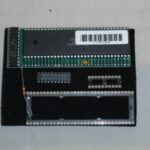
Brainstorm Mac Accelerator Plus, SE (16MHz)
by Brainstorm Products, Mountain View, CA (MU 1993.04 page 130) (TIL17158)
Description: Two chips: 16MHz 68000 and a ASIC chip to replace the Apple timing chip.
“The Brainstorm Accelerator triples the speed of graphics operations and increases SCSI hard drive transfer rates by as much as a factor of five. Computationally intensive processor tasks, such as re-calculating a complicated spreadsheet, are accelerated by a minimum factor of 250%.” From a product announcement I found on comp.sys.mac.hardware
- Drivers: Vintageapple.org, Macintosh Garden (and Manual)
- Reviews: MU 1993.04, Low End Mac, Byte 1993-02, MW 1995.03,
- Books: MacWeek upgrade/repair your Mac p.211, Upgrade/Fix MACs for dummies p.72,
- News: 1991 Press Release (from usenet),
- Photos: Chips, Manuals
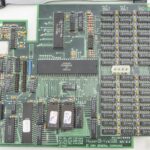
GCC Hyperdrive 2000, 128k, 512k, 512KE, Plus (12MHz, 2MB, opt FPU)
By General Computer Company, 215 First St. Cambridge, MA 02142 (source The Amiga 1985.08), 580 Winter Str. Waltham, MA 02154 (source MW 1990.02) (TIL00924)
No MMU, Optional 68881 FPU, adds internal 20MB hard drive
“in 1984, anticipating dramatic changes in the electronics market, GCC began designing products for the newly-introduced Apple Macintosh computer. GCC’s most critical success was the HyperDrive, the first internal hard disk drive for the Macintosh” (source GCC website)
- Website: gcctech.com the about us page mentions the Hyperdrive, but no other info.
- Manual: vintagecomputer.ca
- News: MW 1986.03 (specs), MW 1986.09,
- Reviews: MW 1986.08, BYTE 1986.11
- Ads: MW 1986.08, MW 1987.04
- Other: article about GCC MW 1987.03.V01.13
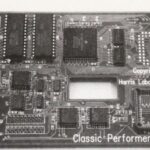
Harris Performer Classic (16MHz, FPU, 64k cache)
by Harris Laboratories (later Harris International), Inc Burnsville, MN (Byte 1992.02)
- News: CW 1991.10.14
- Review: MW 1992.09, Build your own Macintosh and save a bundle (photo)
- Ad: MW 1991-11 (photo), MU 1992.01 (photo, photo), MU 1992.07 (photo),
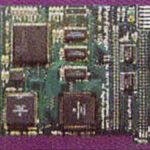
Harris Performer 2 SE (16MHz, FPU)
by Harris Laboratories (later Harris International), Inc Burnsville, MN (Byte 1992.02)
PDS slot, Extended Video
- Review: Byte 1993-02
- Ad: MW 1993.10 (photo)
- Other: Build your Own Macintosh and Save a Bundle (1992)
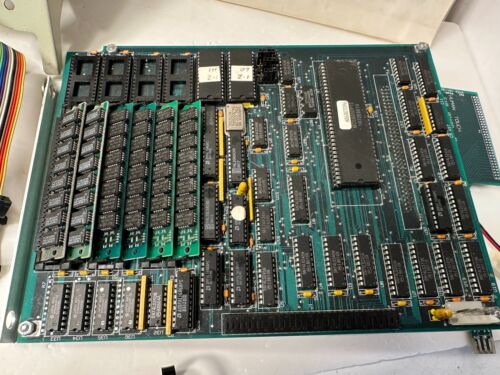
HTCP Corp. Three to One Touch Board (128k, 512k, 12.5 MHz, 1.5MB)
by Human Touch Computer Products Corp, Cherry Hill, N.J. (Chief Engineer: Dave Wolff)
An additional 384K of ROM space?
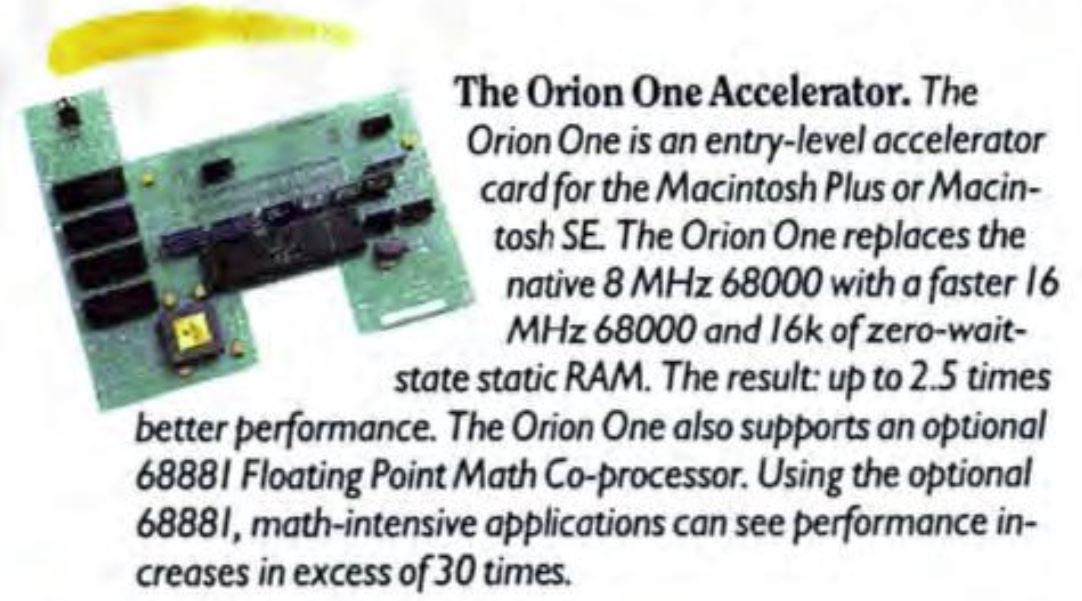
Irwin Excelerator XL: SE (16MHz, 32k cache)
Sold by Irwin Products Group 2010 Commonwealth Blvd. Ann Arbor, MI 48105 (source MW 1990.02), designed by MacPEAK systems. Irwin was acquired by Cipher Data Products in 1989, Cipher was acquired by Archive Corporation in 1990.
These are rebranded MackPEAK Orion One boards (see below). In 1988 MacPEAK Systems granted retail distribution rights for its accelerator board line to Irwin Magnetics Inc..[Irwin will be] offering the 16, 20, and 25MHz Mac SE boards under its Excelerator brand name” – WK 1989.04 V.03.N15.p65
- Review: MW 1990.02 (specs, company name).
- Other: Build your Own Macintosh and Save a Bundle (1991), Que’s big Mac book 1992 page 794
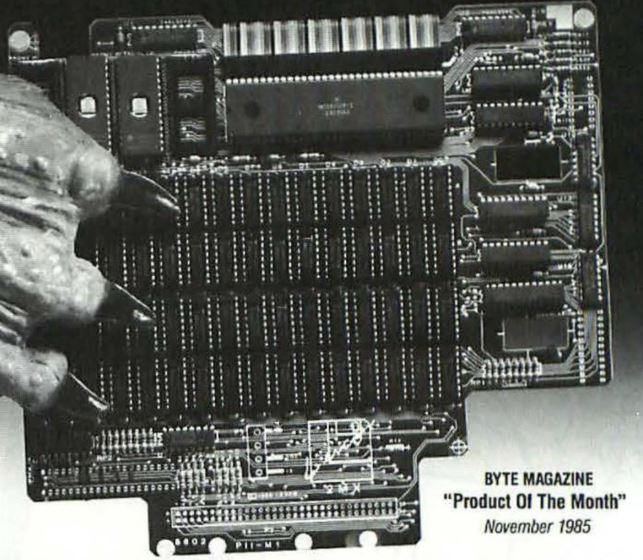
Levco MonsterMac 128K, 512K (10MHz)
by Levco, San Diego CA. Levco was purchased by SuperMac’s parent SMS (MU 1987-11), Levco and supermac merge (Apple2000 Vol 2 No 5 October 1987)
Includes Fan, 256K PROM, SCSI, requires modification to case/board.
- Review: MW 1985.09, MW 1986.02, Ad: 1986.07 (photo)
- News: MW 1987.11
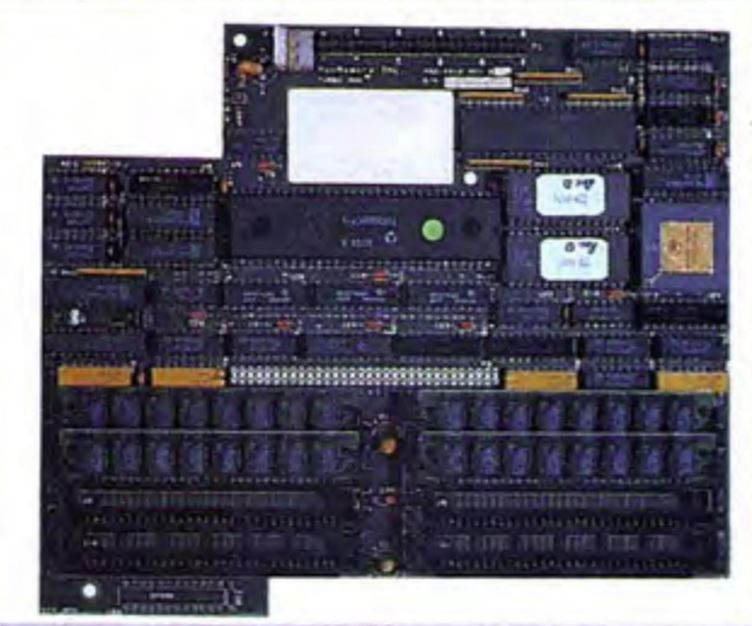
MacMemory TurboMax 128K, 512K (10MHz, 4MB)
by MacMemory, San Jose CA
No MMU, SCSI port. Includes fan and power supply.
Connector for the Big Picture monitor from E-machines
Difficult installation, requires remounting internal disk drive as well as soldering wires
- Review: Byte 1987.12 (photo), MW 1987.02, CW 1987.12, MW 1988.02, MU 1988.03 (photo)
- Ad: MU 1987.08
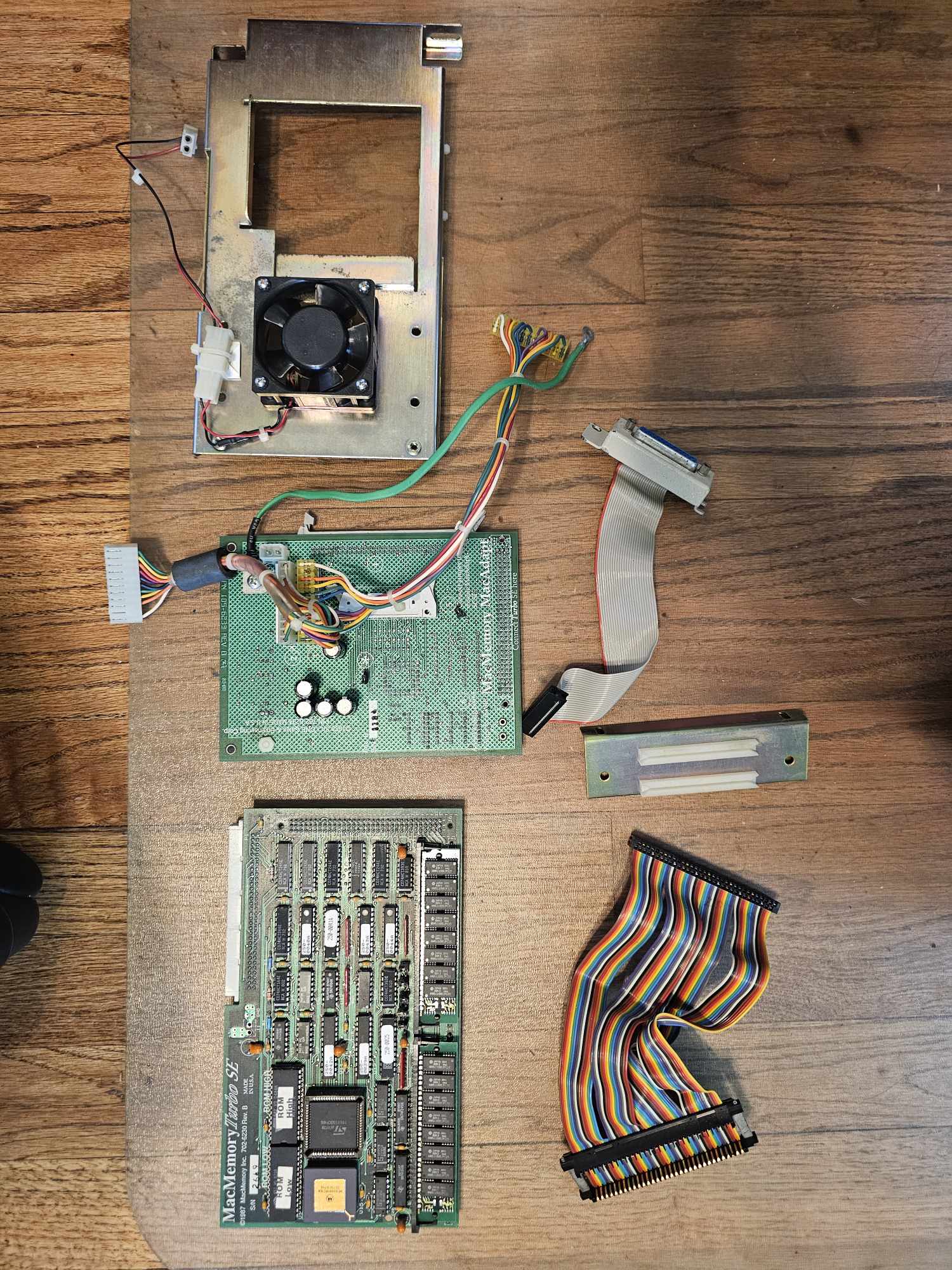
MacMemory Turbo SE (16MHz, 4MB, FPU)
by MacMemory, San Jose CA
No MMU, Connector for the Big Picture monitor from E-machines
- Reviews: CW 1987.12 (specs) , MU 1988.03
- Ad: MU 1987.11 (photo)

MacPEAK Orion One: Plus, SE (16MHz, 4KB, FPU)
by MacPEAK Systems / MacPEAK research, Texas (TIL02422)
These were be rebranded as Irwin Magnetics Excelerator XL SE (see above). In 1988 MacPEAK Systems granted retail distribution rights for its accelerator board line to Irwin Magnetics Inc..[Irwin will be] offering the 16, 20, and 25MHz Mac SE boards under its Excelerator brand name” – WK 1989.04 V.03.N15.p65
- Optional: ECL Video card.
- Ad: MW 1988.10 (photo), MG Winter 1989
Mobius Speedscreen SE (16MHz, opt FPU)
by Mobius Technologies Inc., Emeryville CA (TIL04628)
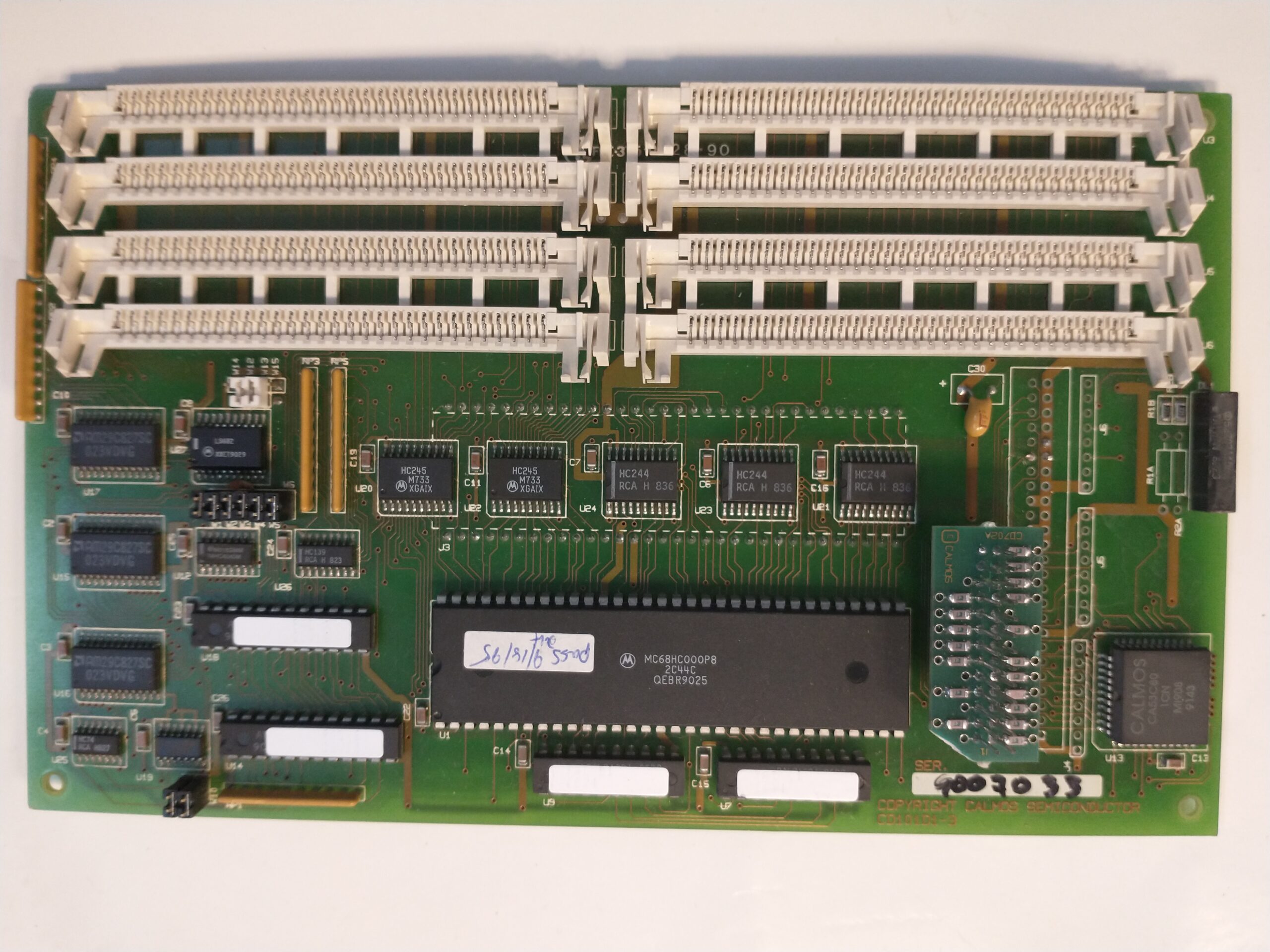
NewLife 1 / UltraMax 128K, 512K, 512ke (68HC, 4MB)
by NewLife Computer Corporation, Ottawa ON (president: Lincoln Henthorn)
68HC000 CPU, Clip on, SCSI Port
I have written a detailed post about the NewLife accelerators including manuals, marketing material and drivers.
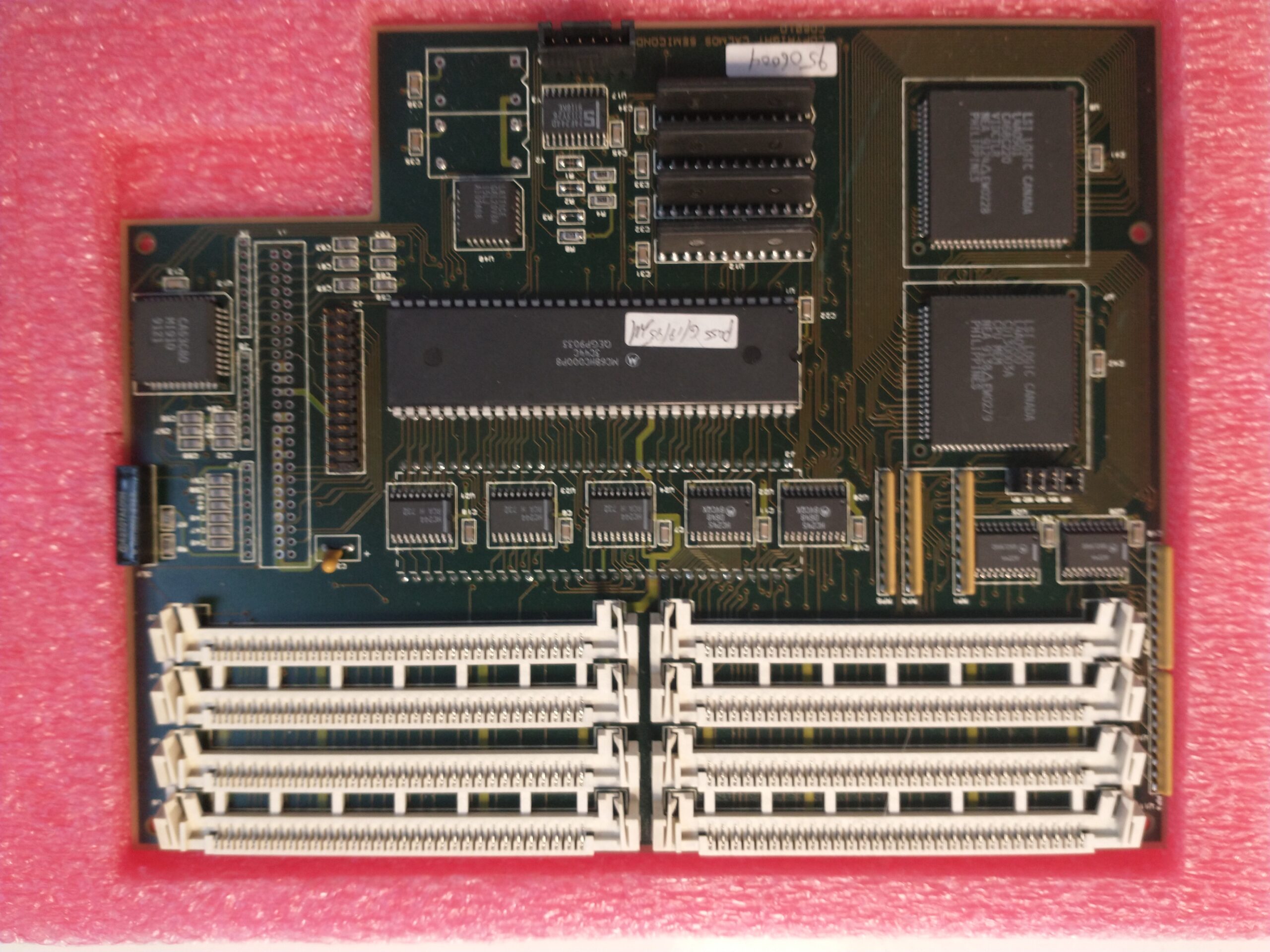
NewLife 2 128K, 512K, 512ke (68HC, 4MB)
by NewLife Computer Corporation, Ottawa, ON (president: Lincoln Henthorn)
68HC000 CPU, Clip on, SCSI Port, and Video
I have written a detailed post about the NewLife accelerators including manuals, marketing material and drivers.
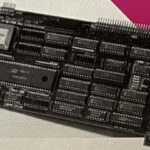
Newer MacSElerator SE (16MHz, opt FPU, 8KB cache)
by Newer Technologies, Wichita Kansas, designed by AOX
This is a rebranded AOX doubletime board (MU 1998.08). The MacSelerator board supports large screen Big Picture monitors from EMachines
- Reviews: WK 19890.06.V03.23 (specs), MU 1998.08 (specs)
- Ads: MU 1989.10 (photo)
- Other: Macintosh Product Registry 1990, Macintosh Buyers Guide Spring 1990, Build your Own Macintosh and Save a Bundle (1991)
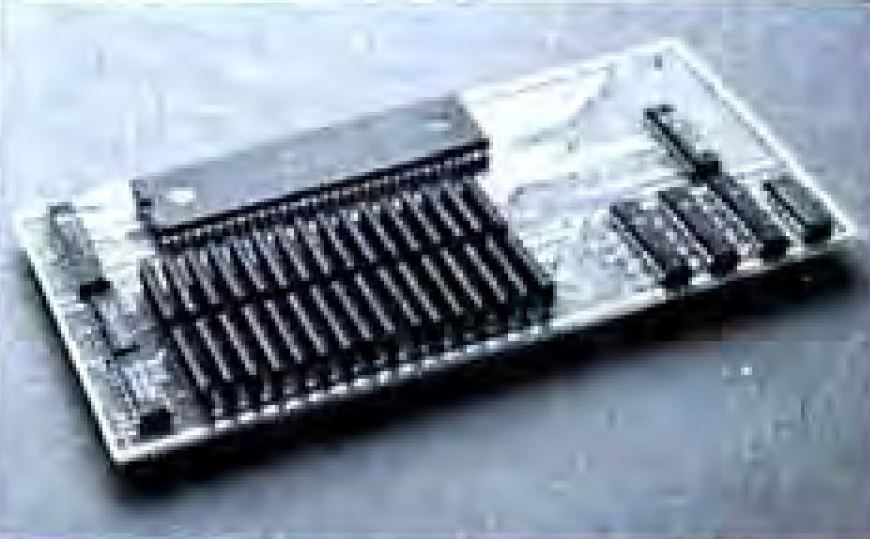
Ryad MacEngine GT 128K, 512K, Plus (16MHz, FPU, 128k cache, 4MB)
by Ryad, Santa Ana CA (source MW 1990.02)
No MMU, Includes fan and power supply, and SCSI port
Optional CMOS Static RAM in place of standard 100ns DRAM for 30% speed boost
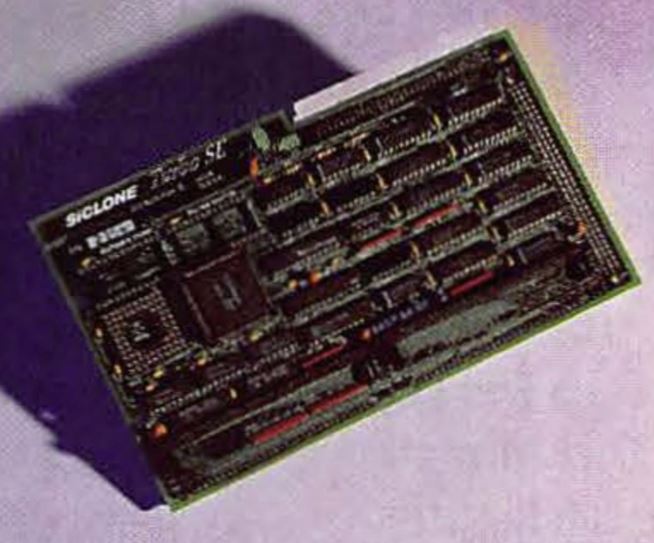
SiClone Turbo SE, and 512KE, Plus (16MHz, 4MB)
by SiClone Sales & Engineering Corp, Sunnyvale CA (MW 1989.03 pg.258)
The company purchased by Applied Engineering in Fall of 1991 (MW 1991.08)
Can work on the 512Ke and Plus with an adapter, optional SCSI port for the 512KE
- Reviews: MU 1989.02, (photo, benchmark, specs), MW 1989.02, MW 1989.03 (comparison), MT 1990.02 (specs), MT 1990.03 (specs), MU 1990.08 (specs, photo)
- Ads: MU 1988.09 (photo), MW 1988.10,
- Other: Build your Own Macintosh and Save a Bundle (1991)
SuperMac SpeedCard SE (16MHz, opt FPU, 16K cache)
by SuperMac Technology, Mountain View CA, a division of Scientific Micro System Inc (TIL02313), designed by Levco Design Group (see photo). Levco was purchased by SuperMac’s parent SMS (MU 1987-11), Levco and supermac merge (Apple2000 Vol 2 No 5 October 1987)
“Great low-cost alternative Requires no additional memory. Allows fall use of memory on the motherboard and full compatibility with all programs that don’t work with the 68020 , Allows use of many different large-screen displays (except Radius). You can use either the Apple PC drive card or the EtherTalk card for the SE, the Colorvue SE (by Orchid Technology) will also function on this card.” MU.1989.02
- Reviews: MW 1988.09, MU 1989.02 (photo, benchmark, specs), video.
- News: IW 1988.02, MU 1988.08, MU 1988.12,
- Photos: box front and back on wiki.peterhuman.net
- Other: Build your Own Macintosh and Save a Bundle (1991)
- Discussion: Jas1063 at 68kMLA
68020 Accelerators
Sources: BYTE, Computer World (CW), InfoWorld (IW), MacWeek (WK), MacWorld (MW), MacUser (MU), The Macintosh Buyers Guide (MG), MicroTimes (MT)
Notes: Accelerators that support the 512Ke and Plus, can often be used with the 128K and 512K if the Apple 800K internal disk drive kit and it’s included 128K ROM upgrade has been installed. Also accelerators that include more than 4MB of RAM may need to use Connectix Virtual or Compact Virtual to access the additional RAM.
Apple Technical Information Library Article: System 7.0.1: System Crashes with 68000 Accelerators (TIL10886)

Computer Systems Associates (CSA) FasTrack Plus, SE (8MHz, 25MHz FPU)
by Computer Systems Associates Inc. San Diego CA
The 68020 CPU runs at 8MHz, but the FPU runs at 25MHz, originally developed for the military, later released to the civilian market targeting CAD users (WK 1988.10 V02.N43.p14)
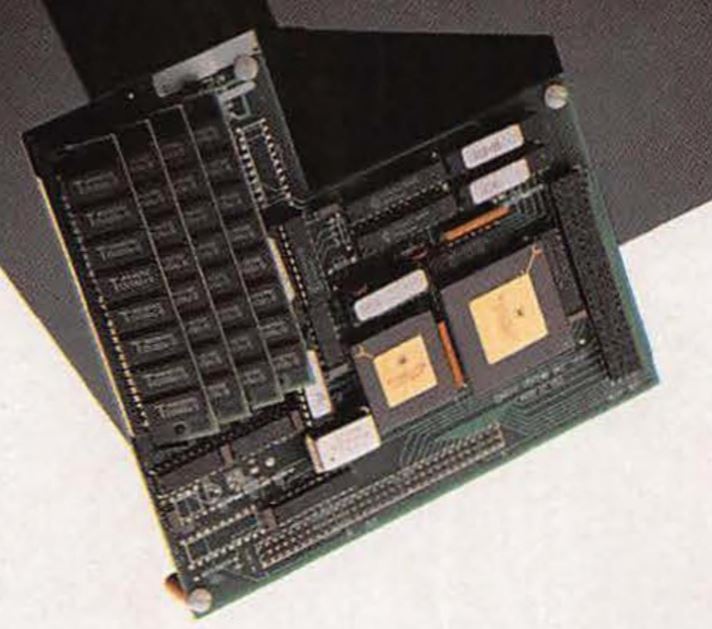
DayStar Mac 20-MX-25 512Ke, Plus, SE (16/20/25MHz, opt FPU, 4MB)
by Daystar Digital, Atlanta Highway, Flowery Beach, GA (TIL03190)
- Licensed from Novy, see: Novy Max20MX.
- Reviews: MU 1989.02 (photo), MW 1989-03 (ad, benchmark, review, photo, specs)
- Ads: MU 1988.10, 12
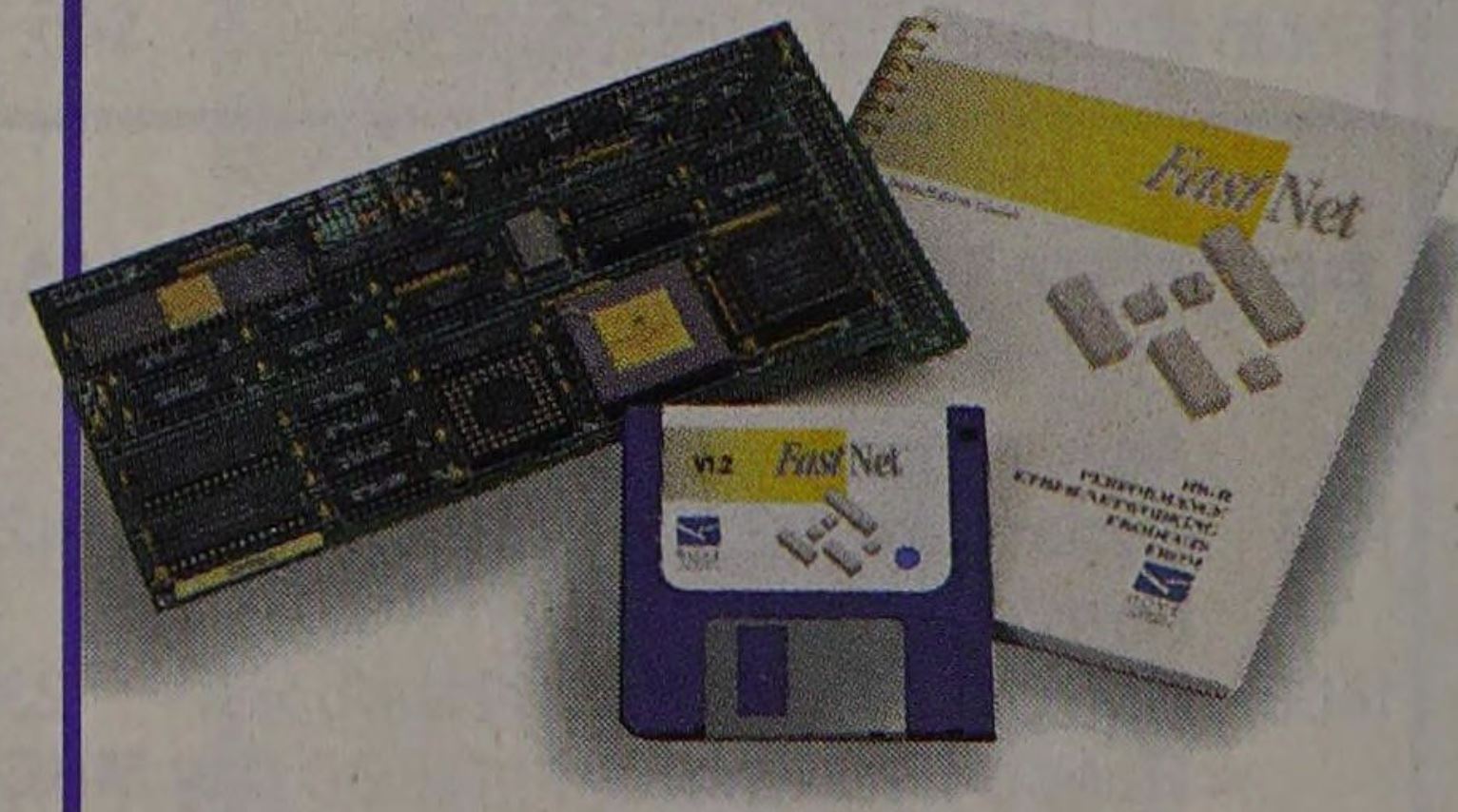
Dove FastNet LAN 020 (FL2) SE (16MHz, opt FPU, 4MB)
by Dove Computer Corporation, Wilmington NC (Byte 1992.02)
Multifunction board combining an 020 accelerator and an Ethernet adapter
- Review: WK 1989.05.V03.21, MW 1990.02 (specs), MW 1991.04 (specs)
- Ad: MW 1989.10 (photo)
- Other: MU 1990.06 (mention), brochure, Apple Engineering Scientific Solutions Guide (Winter 1989), DataPro 1992 An Overview of Macintosh Connectivity Products Part 1, Macintosh Buyers Guide Spring 1990, Macintosh Product Registry 1990

Dove MacSnap 020 512Ke, Plus, SE (16MHz, opt FPU, ?MB)
by Dove Computer Corporation, Wilmington NC (Byte 1992.02)
I think this may be an early version of the Dove Mach II SE / Dove Marathon 020 SE listed below, trying to confirm. The last mention I can find is from MW 1988.04. For the memory the ad mentions bringing the total ram for the SE to 5MB, but the MW 1988.04 article says it as 4MB of memory.
- Review: CW 1987.12 (specs), MW 1988.04 (specs)
- Ad: MW 1988.02 (SE)
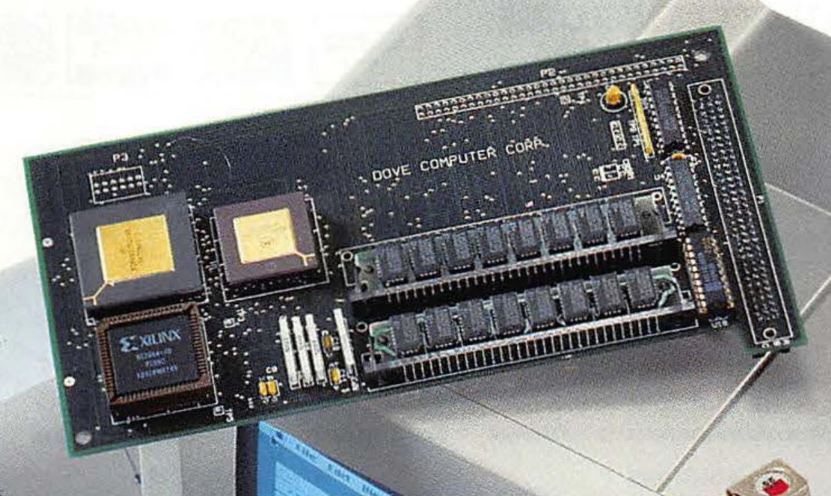
Dove Mach II SE / Dove Marathon 020 SE (16MHz, FPU, 4MB)
by Dove Computer Corporation, Wilmington NC (Byte 1992.02)
The Mach II SE was renamed the Marathon 020 when the MaraThon 030 was released (source WK 1988.10 V02.N38.p4)
- Review: BYTE 1988.12 (specs), MU 1989.02 (photo, ad),MW 1989-03
- Ad: MW 1988.10 (photo)
- Other: Apple Engineering Scientific Solutions Guide (Winter 1989), Build your Own Macintosh and Save a Bundle (1991)
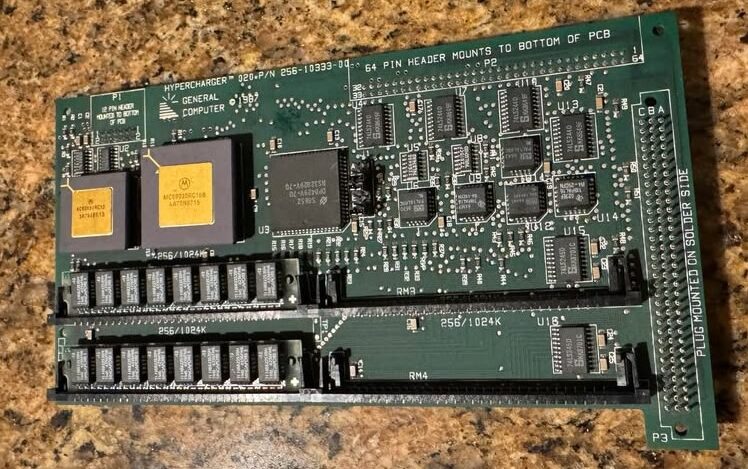
GCC HyperCharger 020 SE (12/16MHz, opt FPU, 4MB)
by General Computer Company (GCC), 215 First St. Cambridge, MA 02142 (source The Amiga 1985.08) (TIL00924)
— Drivers —-
No MMU, Connector for the Big Picture monitor from E-machines
- Website: gcctech.com the about us page mentions the Hyperdrive, but no other info.
- Review: WK 1987.08.V01.13 (photo), MW 1987.09, BYTE 1987.11 (photo), CW 1987.12, MU 1988.03, MU 1989.02 (photo), MW 1989.03
- Ad: MU 1987.08, MU 1987.11 (photo)
- Other: Build your Own Macintosh and Save a Bundle (1991), article about GCC MW 1987.03.V01.13
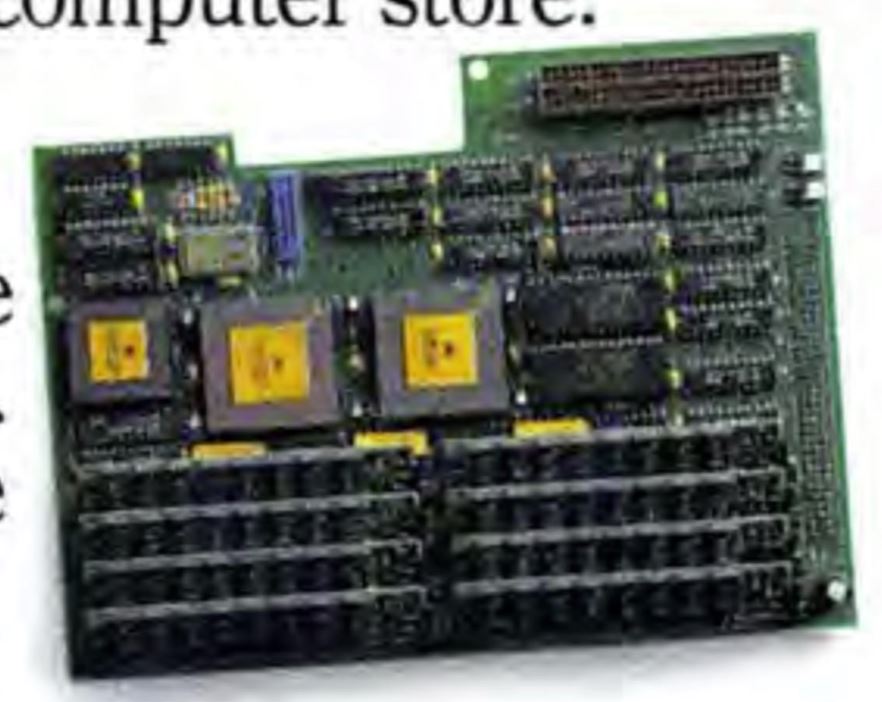
Irwin Magnetics Excelerator XL20/XL25 SE (20/25MHz, FPU, 8MB)
by Irwin Products Group, Ann Arbor MI (MW 1990.02)
These were called MackPEAK Orion 25 (see below). In 1988 MacPEAK Systems granted retail distribution rights for its accelerator board line to Irwin Magnetics Inc..[Irwin will be] offering the 16,20, and 25MHz Mac SE boards under its Excelerator brand name” – WK 1989.04 V.03.N15.p65
- Review: MW 1989-03 (specs)
- Ad: MU 1989.02 (photo)
- Other: Build your Own Macintosh and Save a Bundle (1991)
- Macintosh: Printing Incompatibility with Irwin Accelerator (TIL10933)
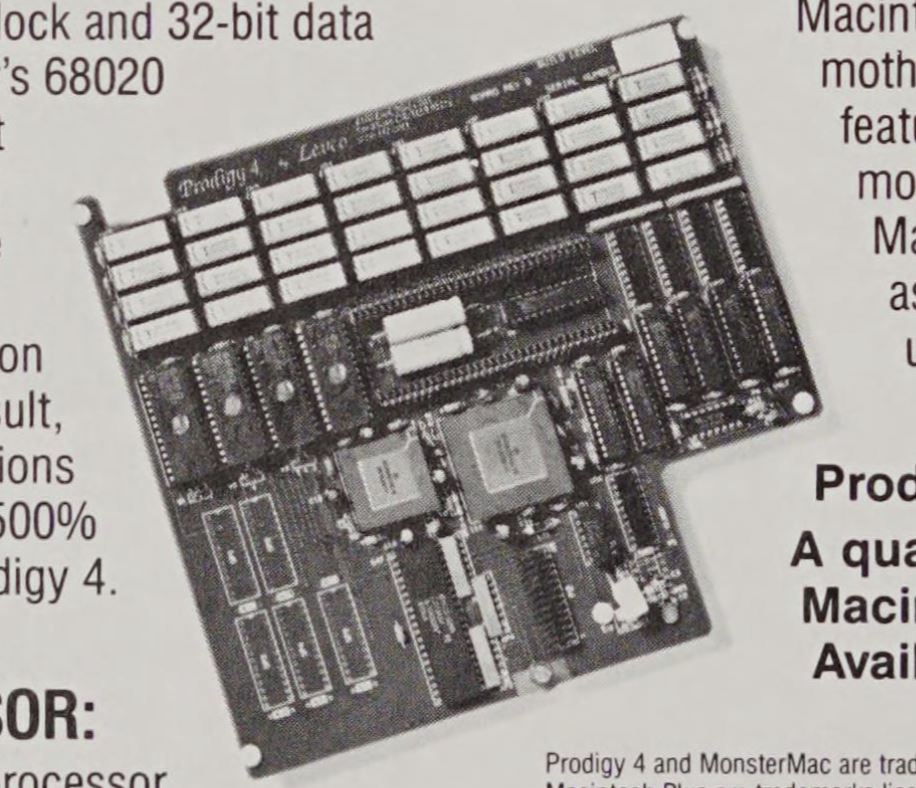
Levco Prodigy 4 128k, 512k, 512KE, Plus (16MHz, opt FPU, 4MB)
by Levco, San Diego CA. Levco was purchased by SuperMac’s parent SMS (MU 1987-11), Levco and supermac merge (Apple2000 Vol 2 No 5 October 1987)
No MMU, Optional 68881 FPU, SCSI port can be used internally to attach to Levco’s OverDriver internal hard disk or to an external SCSI hard disk through a 25-pin connector that mounts in the Mac’s battery compartment, connector for MegaScreen Plus from Micrographics Images, RAM disk. Includes fan and power supply.
- Review: MW 1986.08, MW 1986.09, MW 1987.11, CW 1987.12, MW 1988.02, MW 1988.08, MU 1989.02
- Ad: MW 1986.08 (photo), 1987.10 MU (photo)
- News: MW 1987.11

Levco Prodigy Prime 128k, 512k, 512KE, Plus (16MHz, opt FPU, 32MB)
by Levco, San Diego CA. Levco was purchased by SuperMac’s parent SMS (MU 1987-11), Levco and supermac merge (Apple2000 Vol 2 No 5 October 1987)
Described as a lower cost version of the original Prodigy 4 Optional MMU (source BYTE 1987.05),
According to the review the review (BYTE 1987.05) accelerator may support up to 32MB if the 68851 Paged Memory Management Unit (PMMU) is installed.
Sold with a fan and a new powersupply
- Review: CW 1987.03.V21.09, BYTE 1987.03, BYTE 1987.05, WK 1987.06.V01, WK 1987.08.V01.13, MU 1987.09, MU 1987.11, MW 1987.11
- Ad: MU 1987.10,
- Lists: MW 1987.11, CW 1987.12.
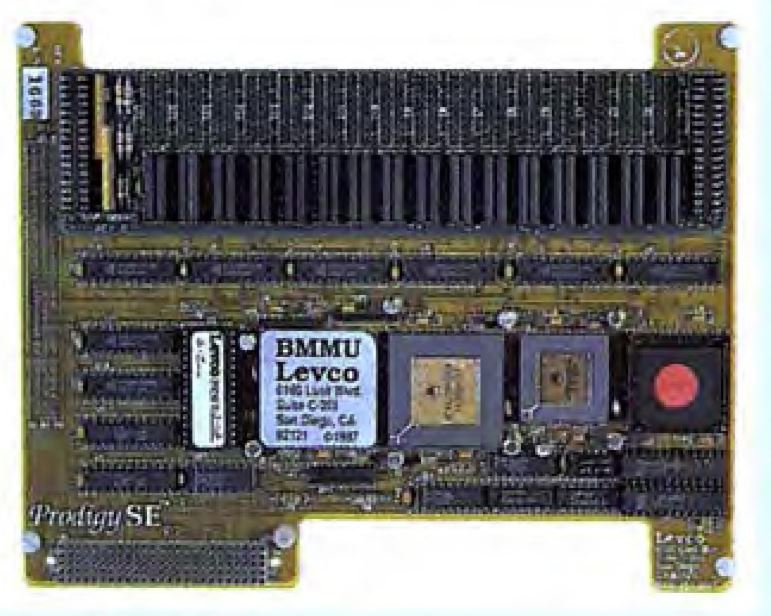
Levco Prodigy SE (16MHz, opt FPU, 32MB)
by Levco, San Diego CA. Levco was purchased by SuperMac’s parent SMS (MU 1987-11), Levco and supermac merge (Apple2000 Vol 2 No 5 October 1987), and this card was rebranded the SuperMac Prodigy SE (see below)
Optional MMU, Connector for MegaScreen II from Micrographics Images
According to the review (MW 1987.09) the accelerator may support up to 32MB if the 68851 Paged Memory Management Unit (PMMU) is installed. There was an issue with a shorting pin on early releases that was later corrected (WK 1987.10.V01.22)
Levco later merged with SuperMac.
- Review: MW 1987.05 (photo), WK 1987.08.V01.13 (photo and incorrectly calls the board the Prime SE), MW 1987.09, MU 1987.09, BYTE 1987.11 (photo), MU 1987.11 (photo), MW 1987.11, MU 1988-03 (photo), MU 1989-02 (photo), 1989-03 benchmark
- Ad: MU 1987.10, MU 1987.11 (photo)
- List: MW 1987.11, CW 1987-12,
- Discussion: 68kmla.org (photos)
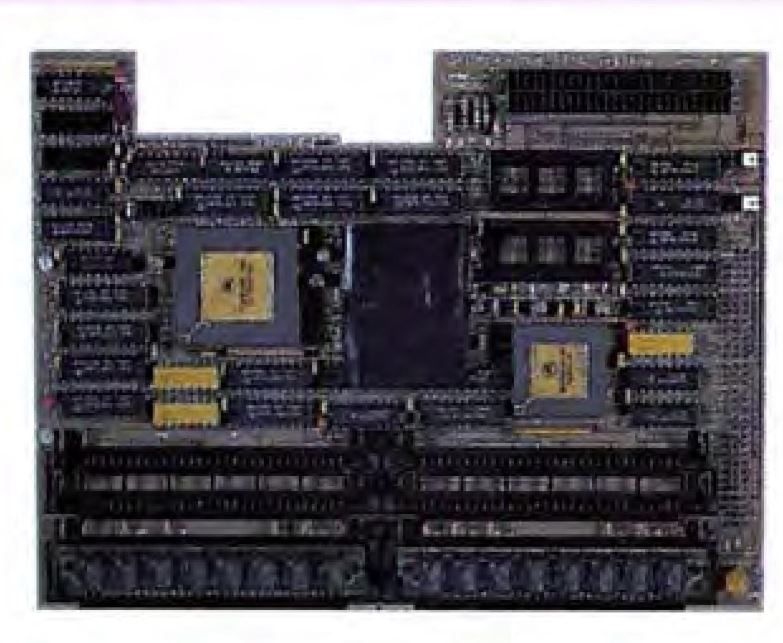
MacPeak Systems Orion 25: SE (16/25MHz, FPU, 32MB)
by MacPEAK Systems / MacPEAK research, Texas (TIL02422)
These were be rebranded as Irwin Magnetics Excelerator XL (see above). In 1988 MacPEAK Systems granted retail distribution rights for its accelerator board line to Irwin Magnetics Inc..[Irwin will be] offering the 16 ,20, and 25MHz Mac SE boards under its Excelerator brand name” – WK 1989.04 V.03.N15.p65
Optional MMU, Galaxy Adapter option. According to the reviews the accelerator may support up to 32MB if the 68851 Paged Memory Management Unit (PMMU) is installed.
- Manual: archive.org
- Reviews: MU 1987.08 (photo), MW 1987.09, MW 1987.11, CW 1987.12 (specs), MU 1988.03 (photo), MU 1989.02 (photo), MW 1989-03 benchmark
- Ad: MW 1988.10 (photo)
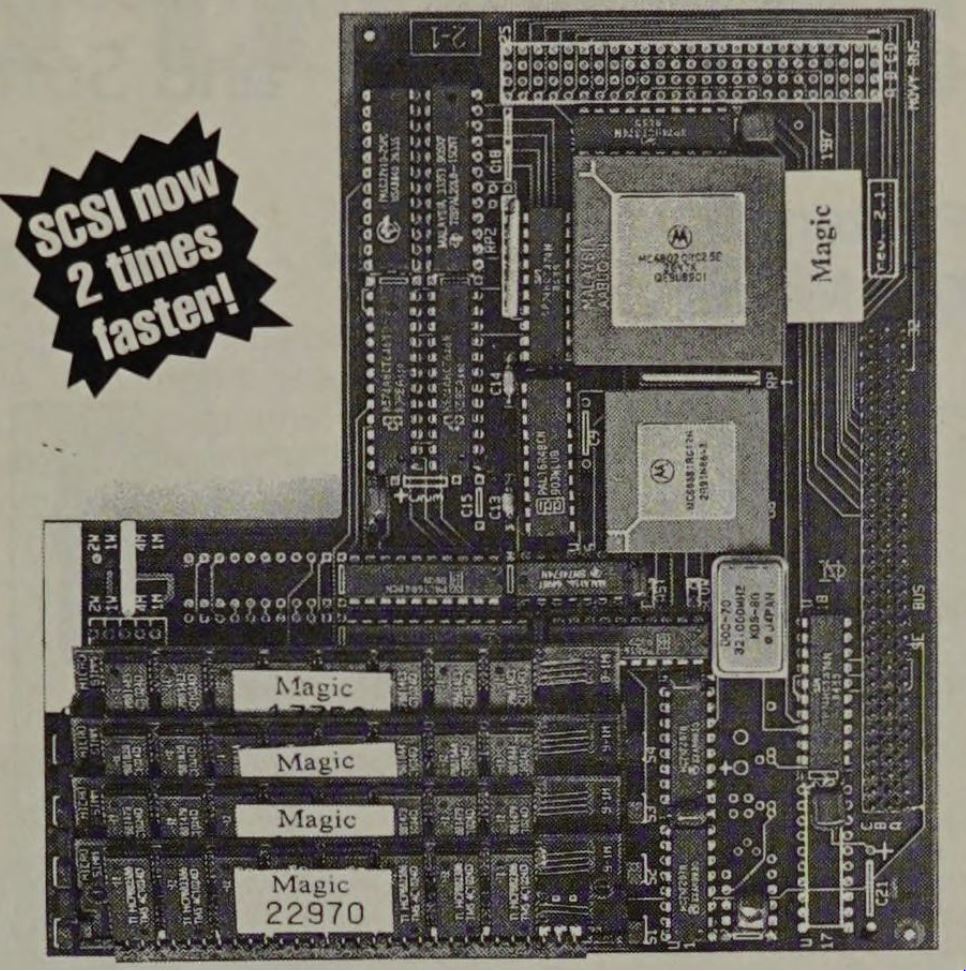
MacProducts Railgun 020: 128, 512, Plus, SE (16/25MHz)
by MacProducts (USA), Inc, Austin TX (Byte 1992.02), became DGR Technologies Inc. in 1994 (drg.com) (TIL02423)
This appears to be a re-branded version of the Novy Max20Mx (see below).
No MMU, CPU can be upgraded to a 68030
There is also a File Server version of this accelerator that allows the original processor and RAM to be used as an AppleTalk and SCSI cache. (see: WK 1989.04.V03.17)
- Reviews: WK 1989.04.V03.17, MW 1988.02, MW 1988.08, MW 1990.02 (specs), MW 1992.06,
- Ad: MW 1990.11 ad for the 030 Railgun, but photo of the 020 railgun (CPU in photo is a 68020)
- Other: Build your Own Macintosh and Save a Bundle (1991)
Microtech 68020 (FasTrack?): Plus, SE (8/12MHz, 33MHz FPU)
by Microtech International Inc. / MassTech International, Inc, East Haven CT (source MW 1990.02, Byte 1992.02, TIL07470).
May be a rebranded Computer Systems Associates (CSA) FasTrack.
Clips on the processor of both systems, a 68881 or 68882 FPU at speeds up to 33 MHz, the CPU is running at 12MHz. Apple Engineering Scientific Solutions Guide Winter 1989
- Review: IW 1989.04 (photo ver1), WK 1989.04.V03.17, MW 1990.02 (specs), MT 1990.02 (specs), MT 1990.03 (specs)
- Ad: WK 1989.06.V03.22 (photo ver2)
- Other: Macintosh Product Registry 1990, Build your Own Macintosh and Save a Bundle (1991)
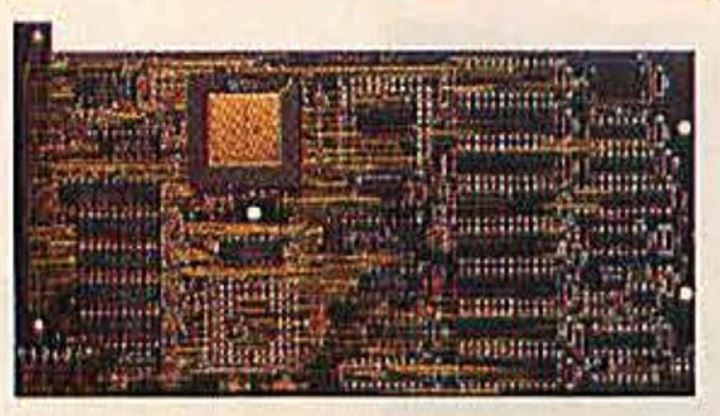
Nemonix NXMACE-VXL-SE SE, Plus (16MHz)
by Nemonix Inc. Hopkinton Mass
A combination accelerator and video interface.
- News: WK 1988.08.V03.N31, CW 1989.10
- Ad: MW 1990.03 (photo)
- Other: Build your Own Macintosh and Save a Bundle (1991)
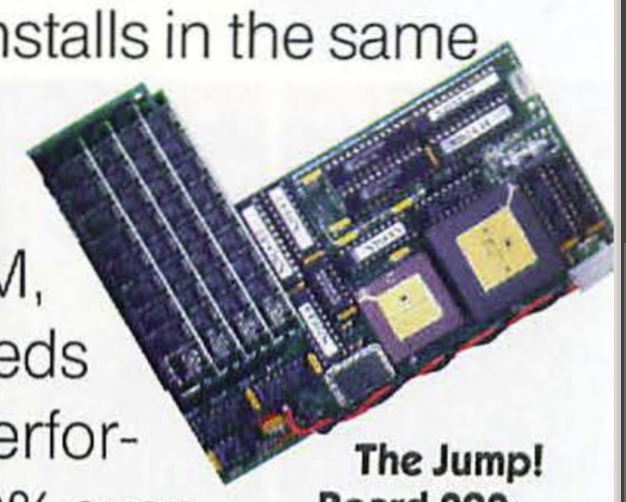
Network Specialties Jump 020 512KE, Plus (12/16/24MHz, opt FPU, 4MB)
No MMU, can connect to StretchScreen and StretchProjector
- Review: CW 1987.12, MW 1988.02, MW 1988.08
- Ad: MW 1987.10 (photo)
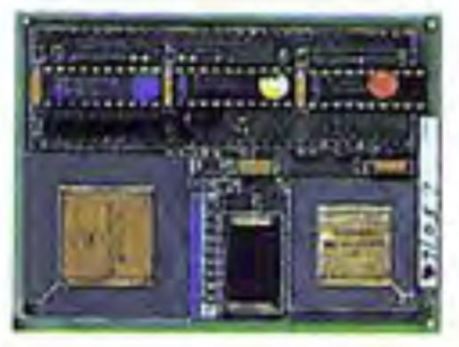
Novy Systems Mac20 512Ke, Plus, SE (8Mhz, FPU)
by Novy Systems, Edgewater FL (source MW 1990.02), previously System Technology Corporation (TIL08263)
- Reviews: MW 1987.01, MU 1988.03 (photo), MW 1990.02 (specs)
- Ad: MU 1987.08
Novy Mac20Mx 512Ke, Plus, SE (12/16/20/24, opt FPU, 4MB)
by Novy Systems, Edgewater FL (source MW 1990.02), previously System Technology Corporation (TIL08263)
Licensed to Total Systems Integration (TSI) Gemini 020 and MacProducts as the MacProducts RailGun 020
“Novy Systems recommends soldering its clip-on accelerator to the microprocessor because it prevents oxidation of the 68000 pins. If the clip is not soldered to the 68000, it may require frequent cleaning to provide reliable operation” MW 1988.02
No MMU, Includes fan and power supply, SCSI port is optional
- Review: MW 1988.02, MU 1988.03 (photo), BYTE 1988.12, MT 1990.02 (specs), MT 1990.03 (specs)
- Ads: MU 1987.08, MW 1990.02
- Other: Build your Own Macintosh and Save a Bundle (1991)
- Discussion: 68kmla.org (photos)
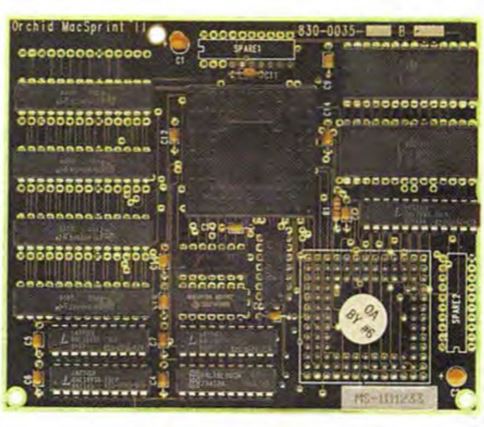
Orchid Mac Sprint II Mac II (16MHz, 32K cache)
by Orchid Technology, Fremont CA (source MU 1990.08, TIL03813)
- Reviews: MU 1990.08 (photo, specs)
- Other: Build your Own Macintosh and Save a Bundle (1991)
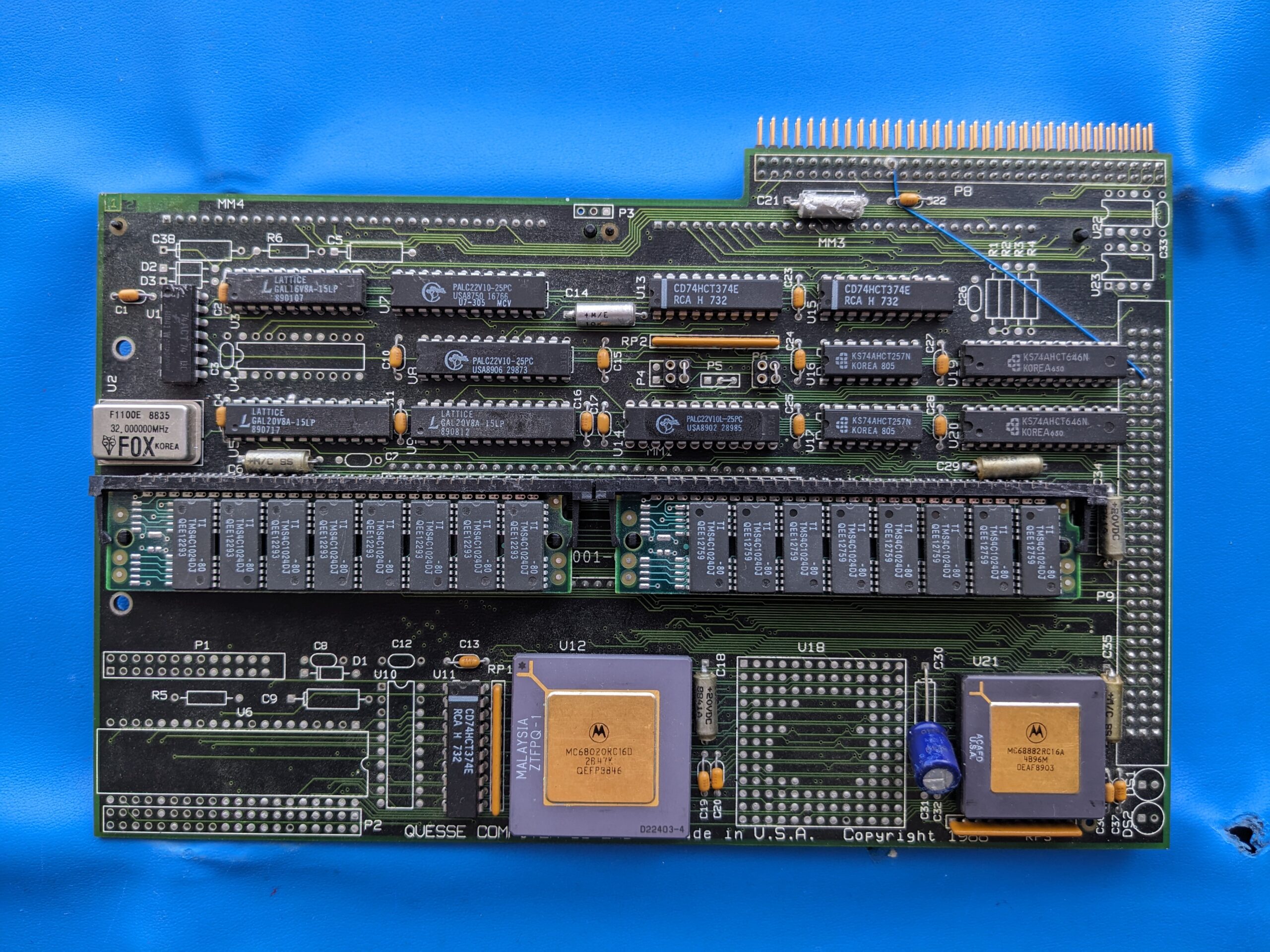
Quesse: SE (16MHz, 32K cache)
by Quesse Computer Company, Issaquah, WA (MU 1986.10)
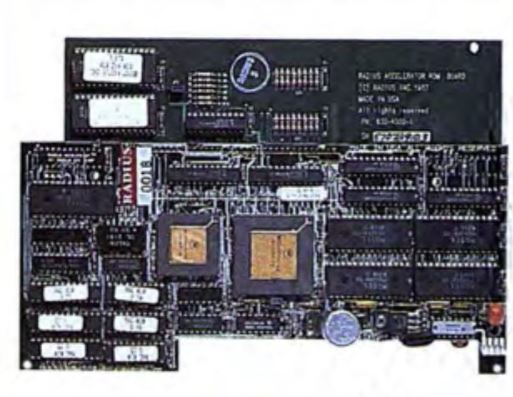
Radius Accelerator 512Ke, Plus (16, opt FPU, 32K cache)
Radius.com: Q&A and drivers
No MMU
- Reviews: WK 1987.08.V01.13 (photo), MW 1987.09, Byte 1987.12 (photo), CW 1987.12, MW 1988.02, MU 1988.03 (photo), MW 1988.08, BYTE 1988.12, MU 1989.02 (photo), MW 1989.03 (benchmark, photo), MW 1990.02, MW 1990.08, MT 1990.02 (specs), MT 1990.03 (specs)
- Other: Build your Own Macintosh and Save a Bundle (1991)
- LaserWriter IINT: Not Recognized by Radius Accelerator (TA39823)
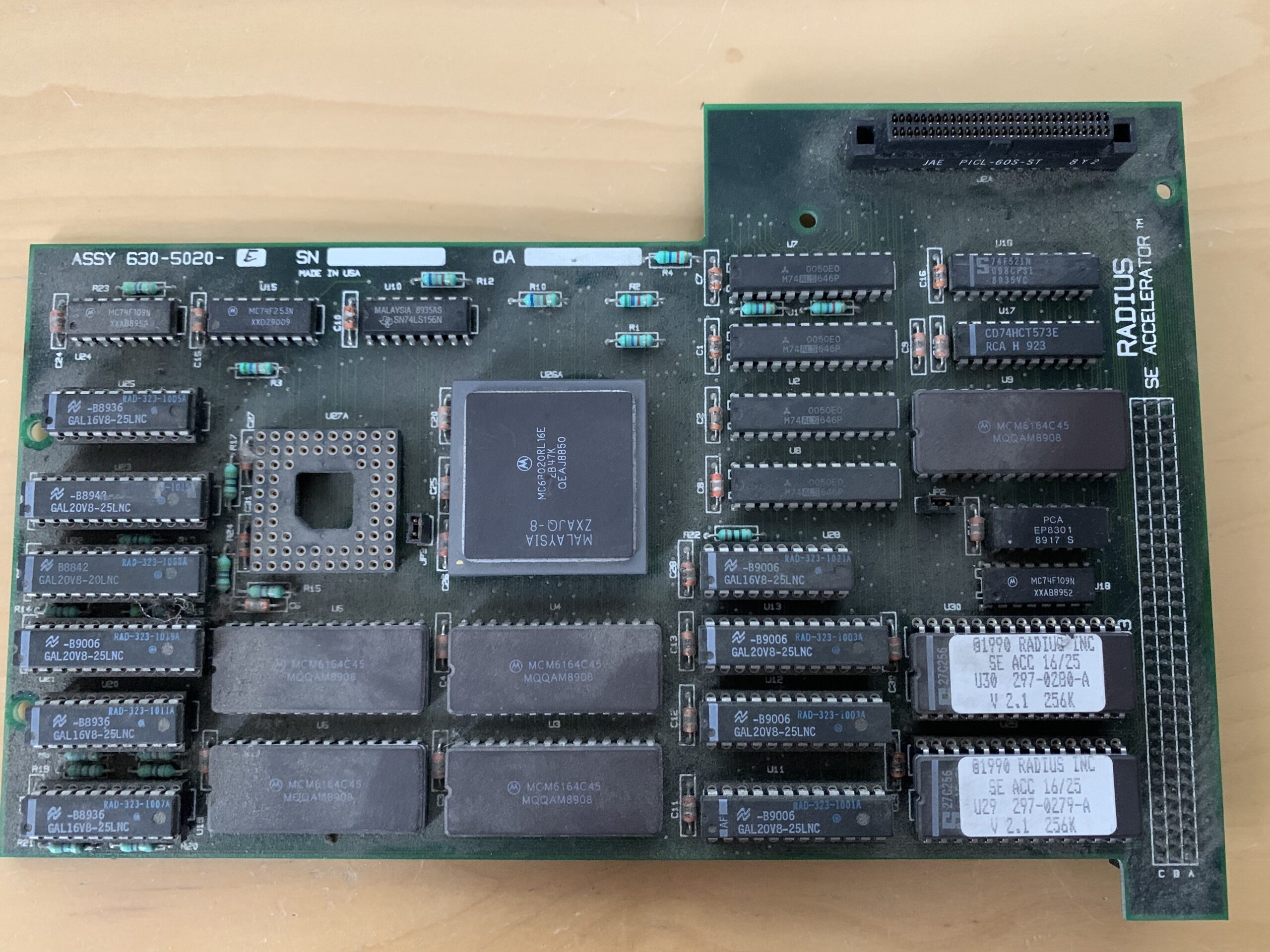
Radius Accelerator SE (16, opt FPU, 32K cache)
Radius.com: Q&A and drivers
No MMU, Full Page Display
- Reviews: MW 1987.09, Byte 1987.12 (photo), CW 1987.12, MW 1988.02, MU 1988.03 (photo), MW 1988.08, BYTE 1988.12, MU 1989.02 (photo), MW 1989.03 (benchmark, photo), MW 1990.02, MW 1990.08, MT 1990.02 (specs), MT 1990.03 (specs)
- Other: Build your Own Macintosh and Save a Bundle (1991)
- LaserWriter IINT: Not Recognized by Radius Accelerator (TA39823)
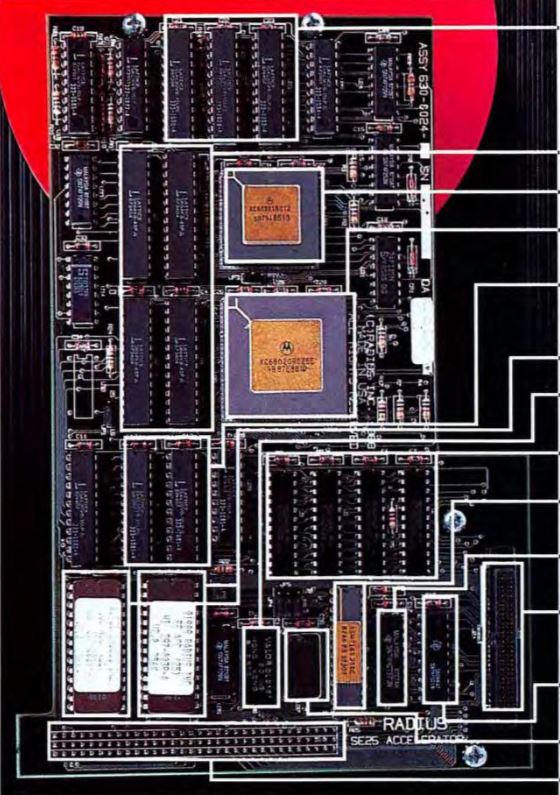
Radius Accelerator 25 SE (25MHz)
Radius.com: Q&A and drivers, brochure
- Review: MW 1988.10, BYTE 1988.12, MU 1989.02 (photo)
- Other: Build your Own Macintosh and Save a Bundle (1991)
- LaserWriter IINT: Not Recognized by Radius Accelerator (TA39823)

Ryad MacEngine Turbo 128K, 512K, 512KE, Plus (16MHz, opt FPU, 128k cache, 4MB)
by Ryad. Grand Ave, Santa Ana CA (source MU 1987.04)
No MMU, Includes fan and power supply, and SCSI port
“You have a choice of either the Motorola 16MHz 68000 (GT Series), or the even faster 16MHz 68020 (Turbo Series)”
- Reviews: MW 1987.01, MW 1987.11, MW 1988.02, MW 1988.08
- Ad: MU 1987.01 (possible photo), MU 1987.04
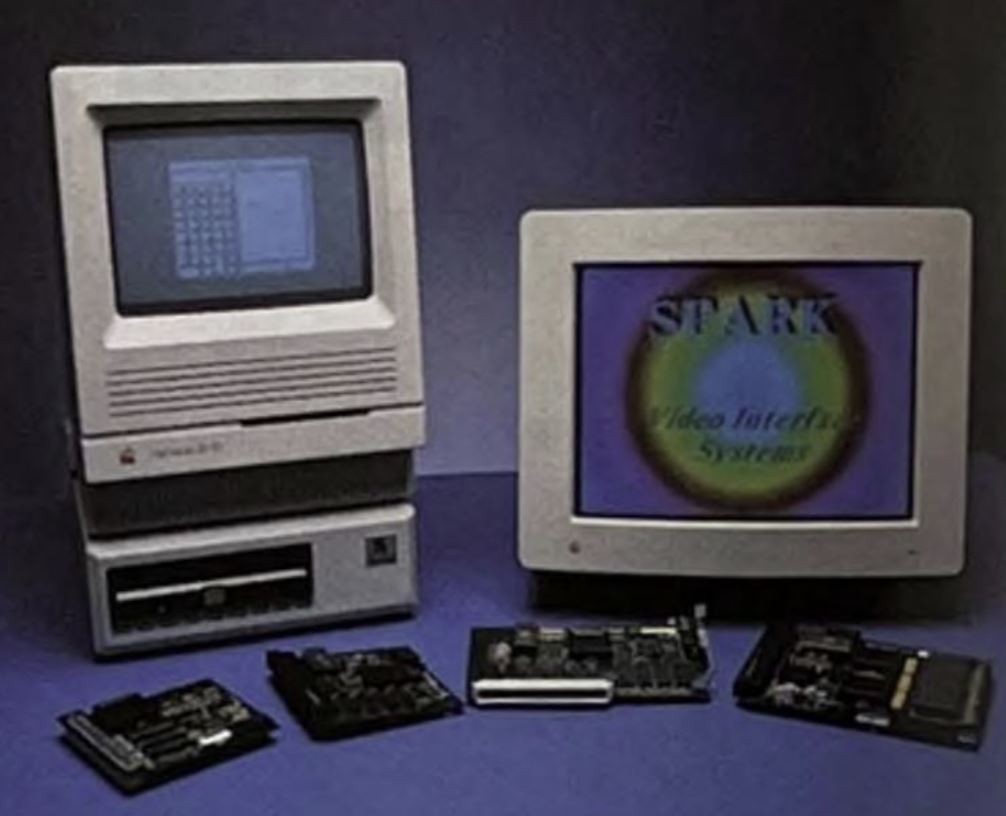
SparkGAC20 SE (16MHz, 4MB)
by Spark International Incorporated, Glenview Ill
A combination accelerator and video interface for large-screen monochrome monitors
I wasn’t able to find much information about this accelerator, there are lots of adds about the companies video cards, but very little about this accelerator.
- News: WK 1988.08.V03.N31,
- Ad: WK 1989.10.V03.35 (photo)
- Other: Build your Own Macintosh and Save a Bundle (1991)

Spectra MacAccelerator 128K, 512K, 512KE, Plus (12MHz, FPU)
by Spectra Micro Development, Tucson AZ (from MW 1990.02, TIL02420)
No MMU, Connector for the Big Picture monitor from E-machines
- Reviews: MW 1987.01, MW 1988.02, MW 1988.08

Spectra Pro-Board (ProBoard) 512KE, Plus, SE (16MHz, ?MB)
by Spectra Micro Development, Tucson AZ (from MW 1990.02, TIL02420)
Finding mixed info on this board’s memory expansion capabilities. The Apple Engineering Guide says that it does, but the table in MW 1990.02 page 129 says it does not.
Not sure if the SCSI port was optional, or included in all versions (high-speed SCSI)
“Pro-Board is a plug-in enhancement that combines acceleration, memory expansion, and high-performance large-screen display in one easily installed expansion card. The Pro-Board transforms a Macintosh 512K enhanced or Macintosh Plus computer into a workstation with the speed and power of a Macintosh II system, while retaining the portability of the original machine. The Pro-Board even includes a SCSI port. The Pro-Board SE offers the same performance enhancements for the Macintosh SE computer” (Apple Engineering Scientific Solutions Guide Winter 1989)
- Review: MW 1987.11, MW 1990.02
- Other: Apple Engineering Scientific Solutions Guide (Winter 1989), Build your Own Macintosh and Save a Bundle (1991)
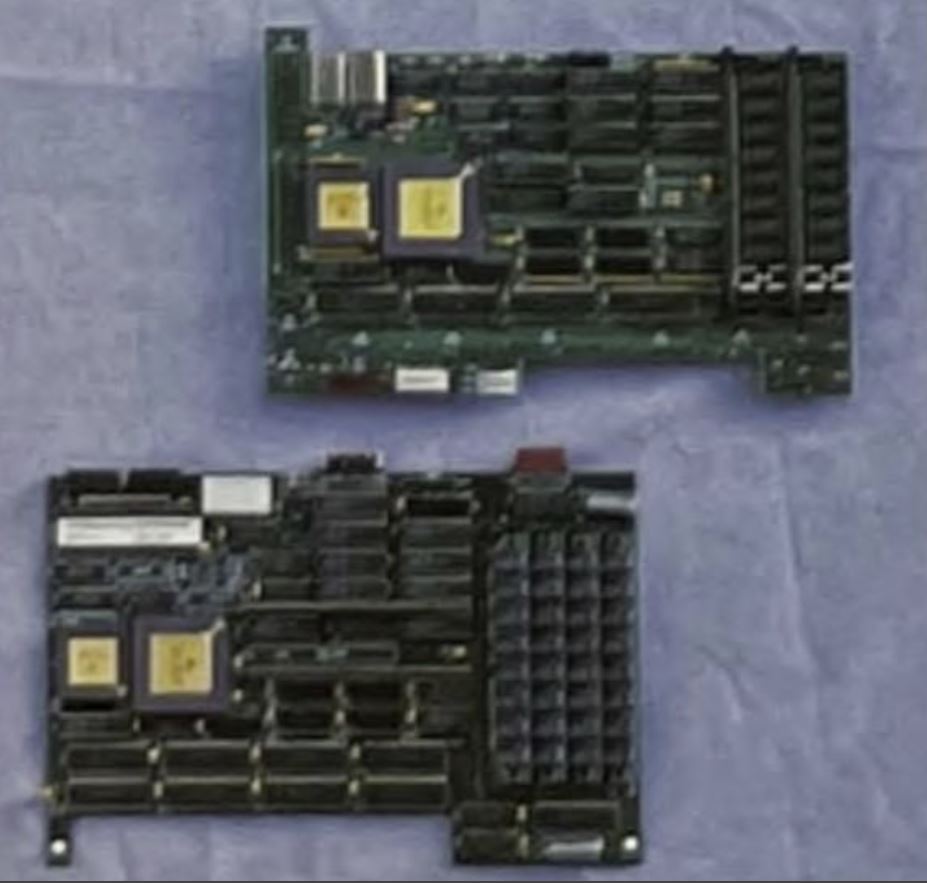
SuperAdd Procard 128K, 512K, Plus, SE (16Mhz, opt FPU, 4MB)
by SuperADD Computer Products Inc, Toronto, Canada (President: John Bridgman)
A combination accelerator and video interface for large-screen monochrome monitors
- Review: WK 1988.09.V02.36, WK 1989.08.V03.31, Macintosh Buyers Guide Winter 1989 (specs), MT 1990.02 (specs), MT 1990.03 (specs)
- Ads: WK 1989.08.03.29 (photos), WK 1989.08.V03.30 (photos)
- Other: Build your Own Macintosh and Save a Bundle (1991)
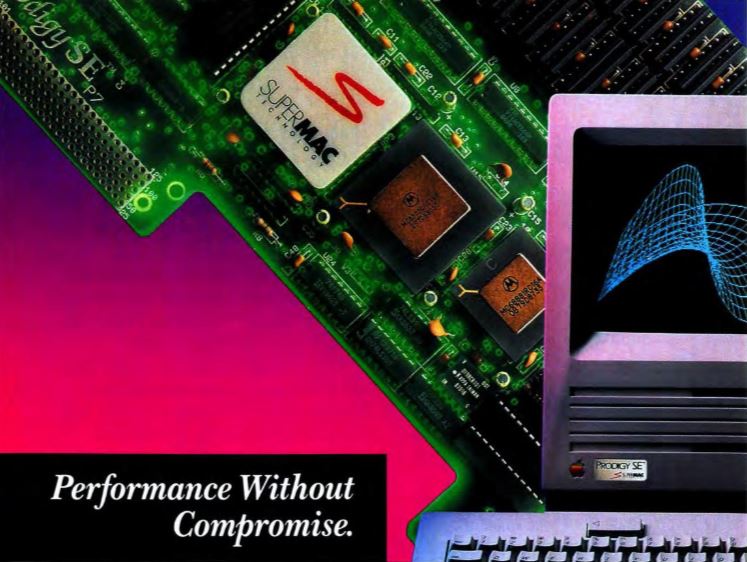
SuperMac Technology Prodigy SE (16MHz, FPU, 8MB)
by SuperMac Technology, Mountain View CA, a division of Scientific Micro System Inc (TIL02313)
Rebranded Levco Prodigy SE, released by SuperMac after Levco was purchased by SuperMac’s parent SMS (MU 1987-11), Levco and supermac merge (Apple2000 Vol 2 No 5 October 1987)
“Levco Inc., a developer of Macintosh enhancement products, has been acquired by Scientific Micro Systems, and will merge its product line with their SuperMac Technology division.” Apple 2000 1987.10.V2.5
- Ad: MU 1988.03
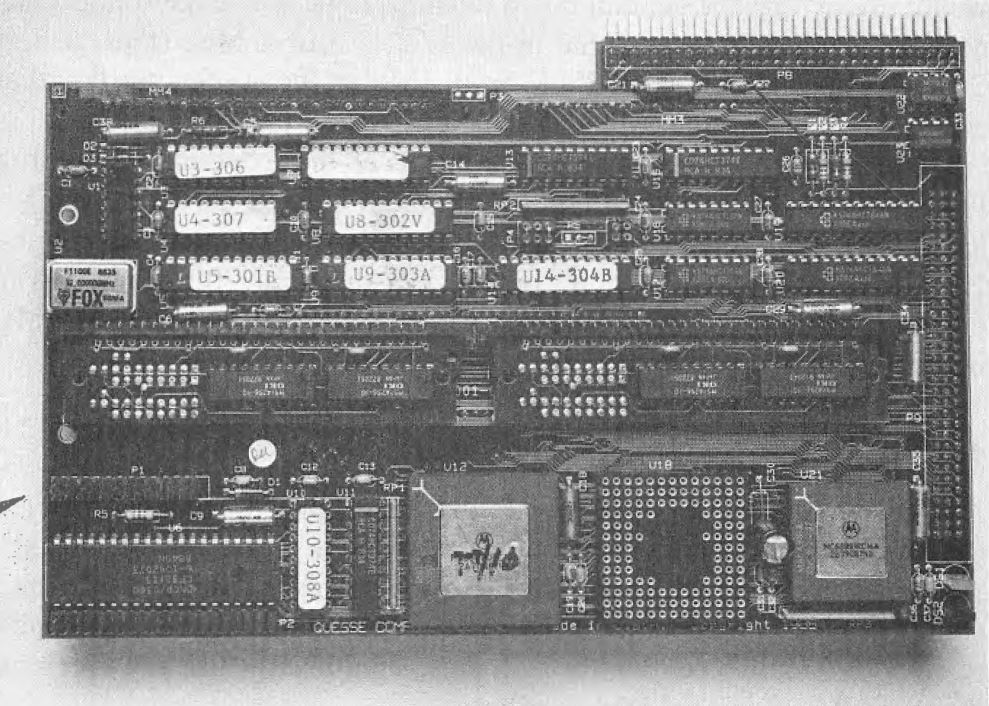
Total Systems Integration (TSI) Gemini 020: 512Ke, Plus (12/16/20/24MHz, opt FPU, 4MB)
Manufactured for Total Systems Integration of Eugene Oregon, by Novy Systems Inc. (see Novy Max20MX above Byte 1987.12).
TSI 020 can hold up to 4 megabytes of 1MB CMOS/SIMM memory chips. No MMU, Includes fan and power supply. Expansion port for E-Machines monitor and fast SCSI
- Drivers: macintoshgarden.org
- Reviews: IW 1987.09, CW 1987.12, MW 1988.02 (specs), MW 1988.08 (photo), Byte 1987.12 (photo), MW 1990.02, MW 1990.08, MU 1990.08 (photo, specs) MT 1990.02 (specs), MT 1990.03 (specs)
- News: MW 1987.12, MK 1988.11 V02 N44
- Ad: MU 1987.12
- Other: Build your Own Macintosh and Save a Bundle (1991)
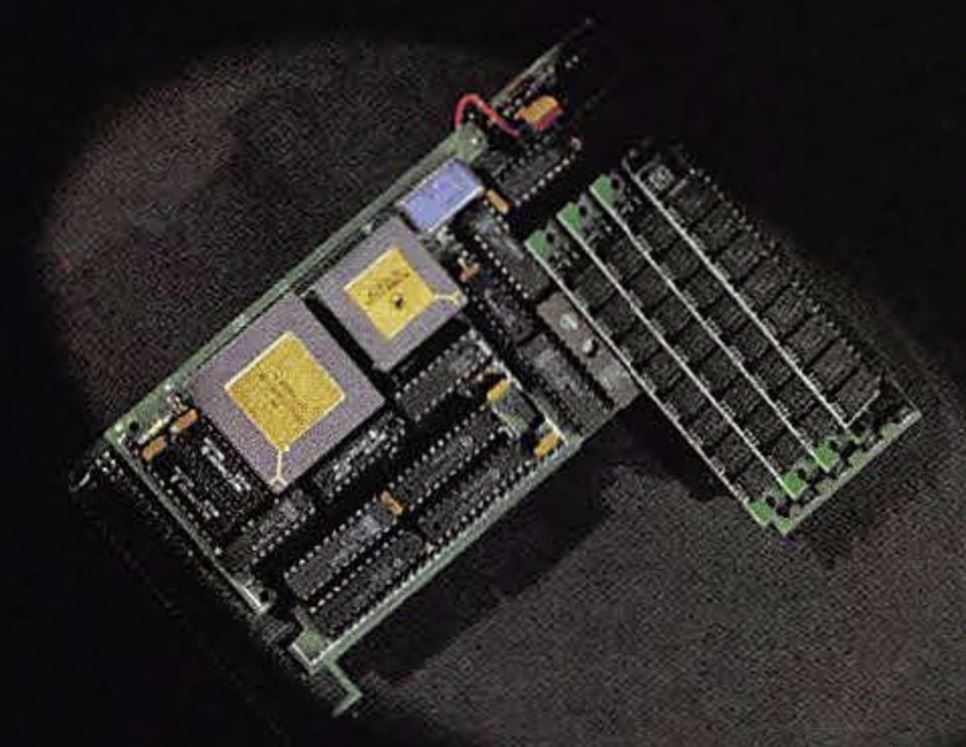
Total Systems Integration (TSI) Gemini 020: SE (12/16/20/24MHz, opt FPU, 4MB)
Manufactured for Total Systems Integration of Eugene Oregon, by Novy Systems Inc. (see Novy 20MX SE above Byte 1987.12).
No MMU. Expansion port for E-Machines monitor and fast SCSI
- Drivers: macintoshgarden.org,
- Reviews: CW 1987.12, MW 1988.02 (specs), MW 1988.08, Byte 1987.12, MW 1990.02, MU 1990.08 (specs), MW 1990.08, MT 1990.02 (specs), MT 1990.03 (specs)
- News: MW 1987.12, MK 1988.11 V02 N44
- Ad: MU 1987.12
- Other: Build your Own Macintosh and Save a Bundle (1991, photo)
68030 Accelerators
Sources: BYTE, Computer World (CW), InfoWorld (IW), MacWeek (WK), MacWorld (MW), MacUser (MU), The Macintosh Buyers Guide (MG), MicroTimes (MT)
Note: Accelerators that support the 512Ke and Plus, can often be used with the 128K and 512K if the Apple 800K internal disk drive kit and it’s included 128K ROM upgrade has been installed. Also accelerators that include more than 4MB of RAM may need to use Connectix Virtual or Compact Virtual to access the additional RAM.
Apple Technical Information Library Articles:
- Accelerator Boards: Using Virtual Memory (TA45476)
- Performa 450: Accelerators Versus Power Cache Cards (KB012645)
- System 7: GemStart 030 Accelerator Control Panel Upgrade (TA46593)
- System 7: Virtual Memory and Third-party Accelerators (TA45240): I’m assuming this was solved by Connectix Virtual or Compact Virtual
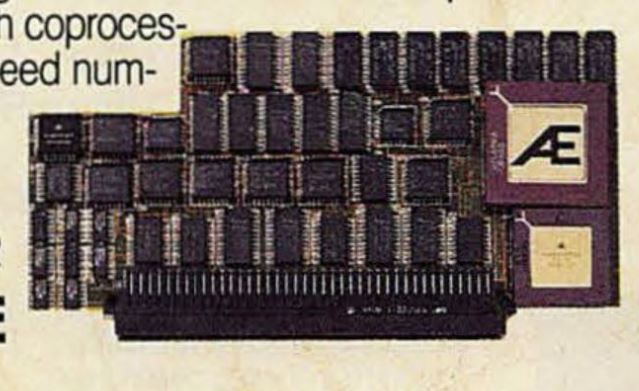
AE TransWarp Cache-In 50 IIci (50MHz, fpu, 64k cache)
by Applied Engineering, P.O. Box 5100 Carrolton, TX 75011 (source Byte 1992.02, TIL03354), founder Dan Pote, fan site.
Possibly a rebranded Siclone Intensifier ci, AE purchased Siclone in Fall of 1991 (MW 1991.08)
- Drivers: Connectix Virtual
- Review: Byte 1993.02
- Ad: MW 1991.11 (photo),(advertisement)
- News: MW V07 N05
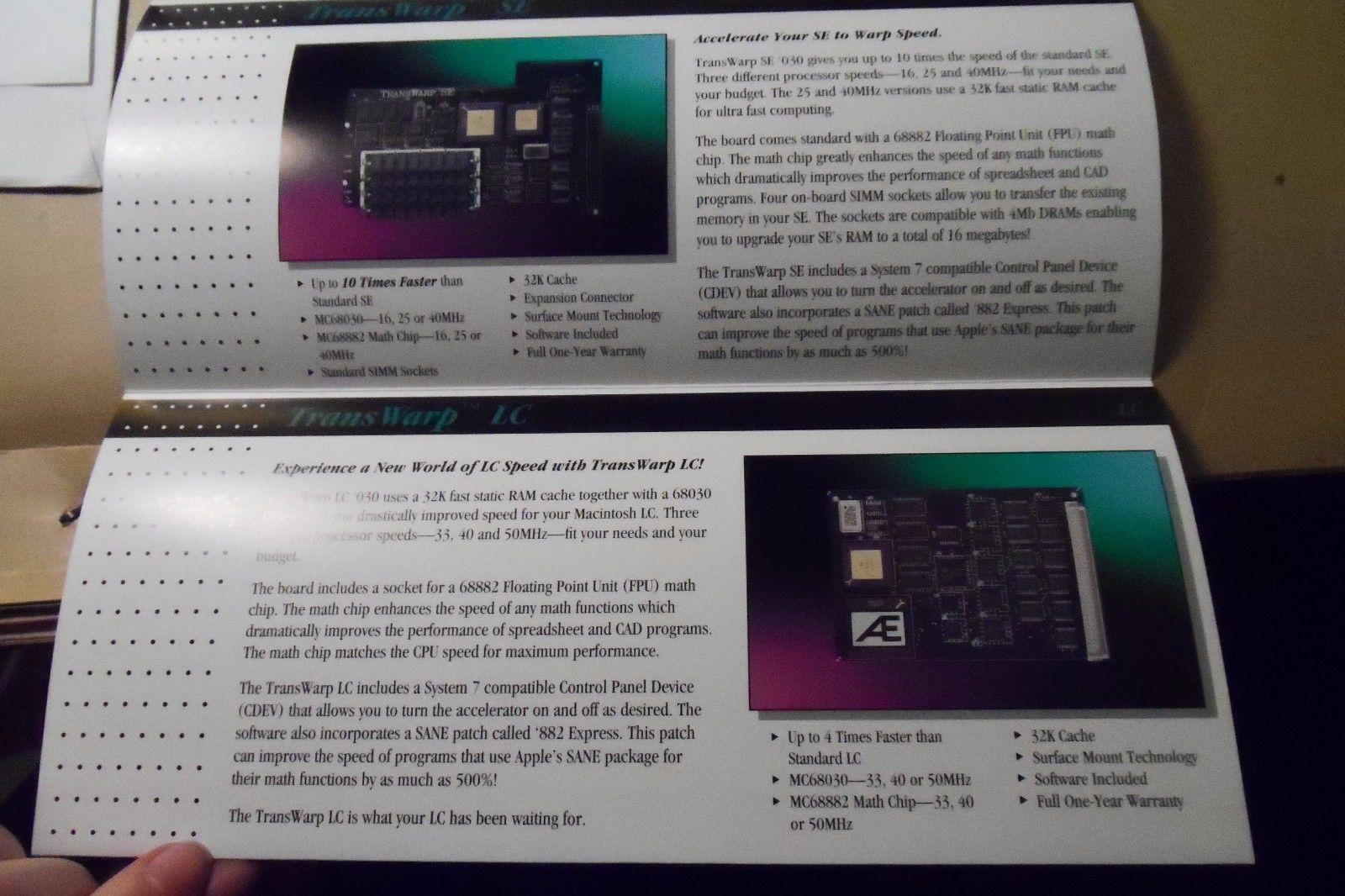
AE TransWarp: LC, LC II, Performa 400 and CC (33/40/50MHz, opt FPU, 32k cache)
by Applied Engineering, P.O. Box 5100 Carrolton, TX 75011 (source Byte 1992.02, TIL03354), founder Dan Pote, fan site
Includes a control panel that can disable the card’s static-RAM cache and control the ’030’s built-in data and instruction caches (MW V07 N1mi2).
- Drivers: Connectix Virtual
- Review: MW V07 N12
- Ad: brochure
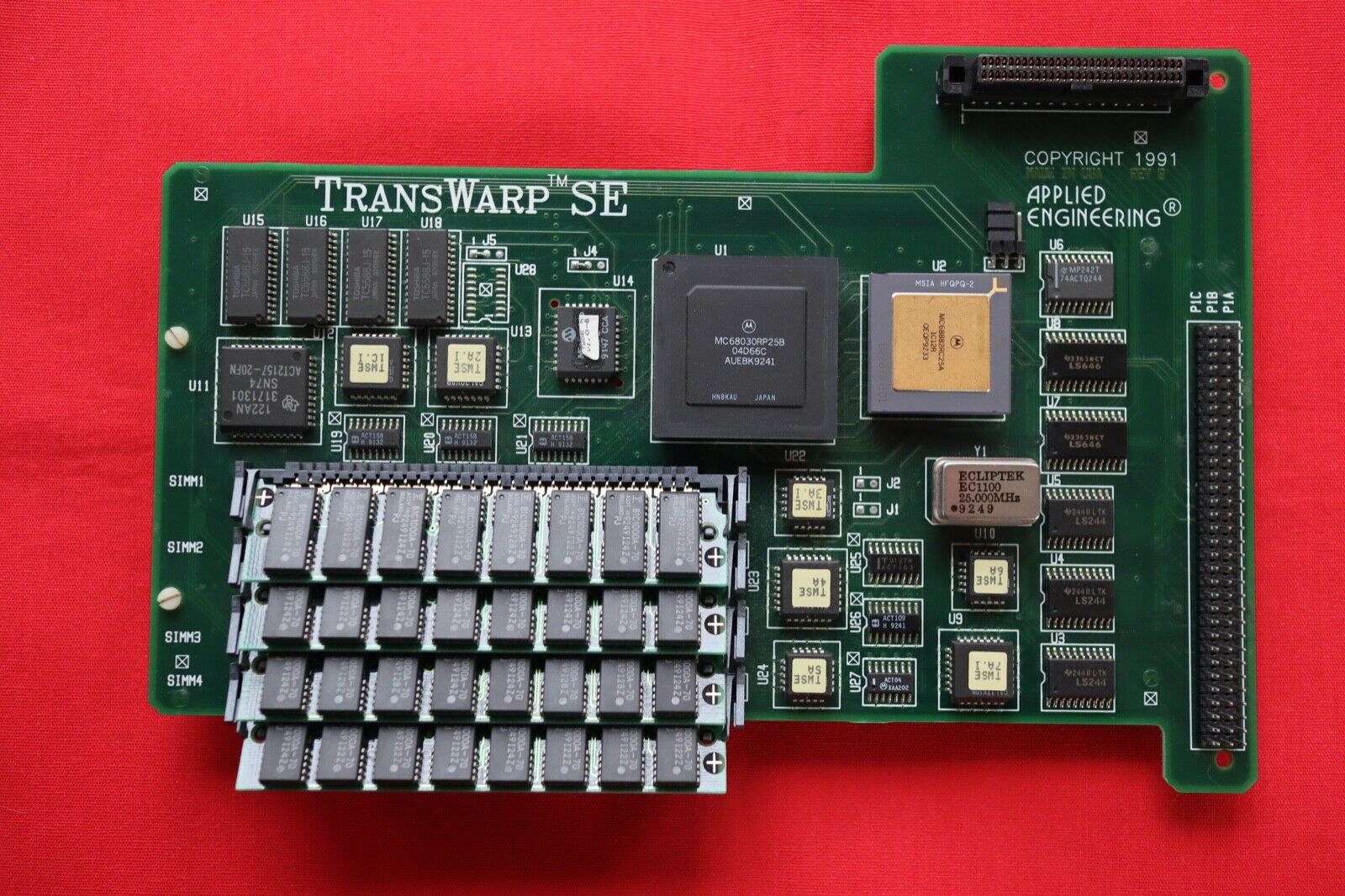
AE TransWarp: SE (16/25/40MHz, opt FPU, 32K cache, 16MB)
by Applied Engineering, Carrolton, TX / Beltline Dallas, TX (source Byte 1992.02, TIL03354), founder Dan Pote, fan site
Optional Extended Video
- Drivers: vintageapple.org, Connectix Compact Virtual
- Ad: brochure, MW 1991.11 (photo), MW 1991.12 (photo)
- Photos: Revision I, Revision II
- News: MW V07 N05
- System 7: Compact Virtual 3.0 and TransWarp Accelerator Board (TIL10981)
AE TransWarp 1325: SE (25, 40MHz, opt FPU, opt 128K cache, option 16MB)
by Applied Engineering, P.O. Box 5100 Carrolton, TX 75011 (source Byte 1992.02, TIL03354), founder Dan Pote, fan site
Optional Monochrome video (VideoX) and ethernet options
The 40MHz version supports up to 16MB of ram, and an optional 128K cache.
- Drivers: vintageapple.org, Connectix Compact Virtual

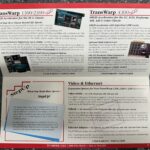
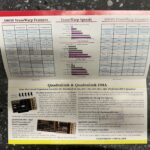
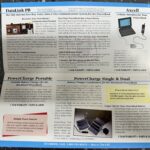
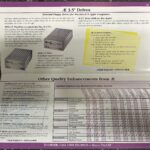
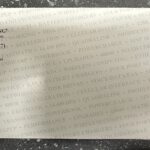
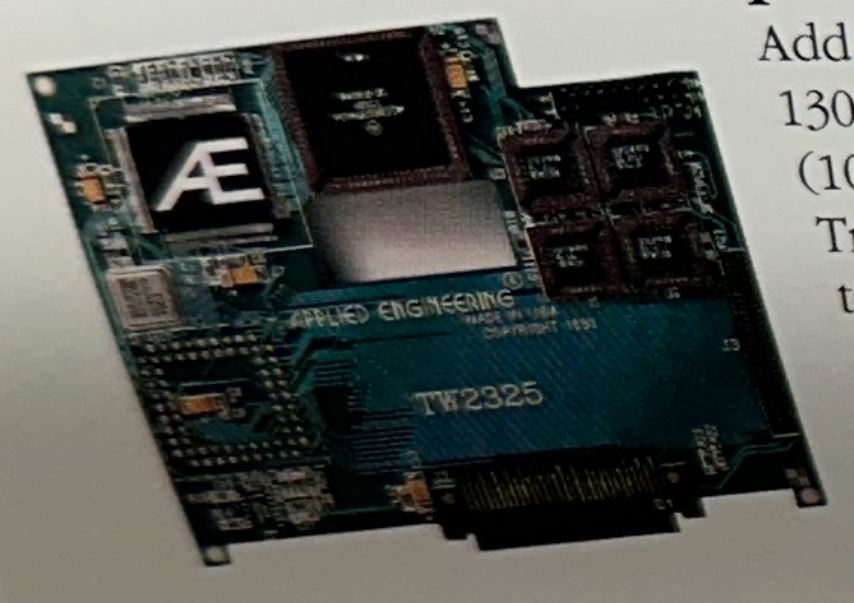
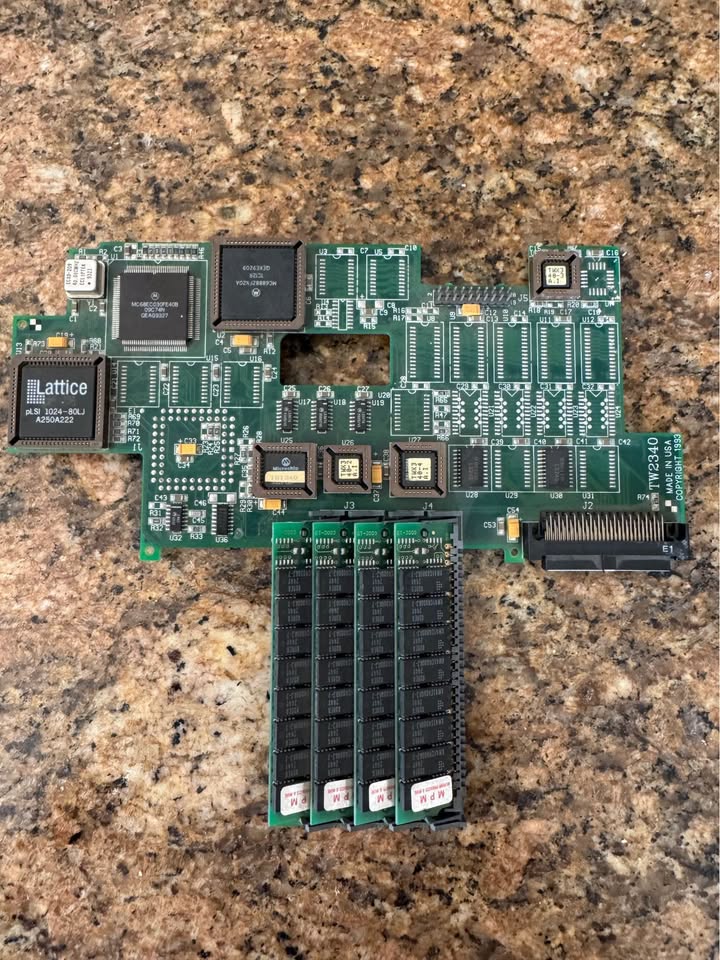
AE TransWarp 2300: Classic (25, 40MHz, opt FPU, opt 128K cache, option 16MB)
by Applied Engineering, P.O. Box 5100 Carrolton, TX 75011 (source Byte 1992.02, TIL03354), founder Dan Pote, fan site
Optional Monochrome video (VideoX) and ethernet options
The 40MHz version supports up to 16MB of ram, and an optional 128K cache.
Drivers: vintageapple.org, Connectix Compact Virtual






AE TransWarp 4300: LC (33, 40MHz, opt FPU, 128K cache)
by Applied Engineering, P.O. Box 5100 Carrolton, TX 75011 (source Byte 1992.02, TIL03354), founder Dan Pote, fan site
Optional Monochrome video (VideoX) or color (Video 4000R) and ethernet options
The 33MHz version supports virtual memory, not sure why the 40MHz version does not..
- Drivers: vintageapple.org, Connectix Virtual







Computer Systems Associates (CSA) Over 030 Mac II (25MHz)
- Drivers: Connectix Virtual
- Review: MW 1989-03, MW 1990.02
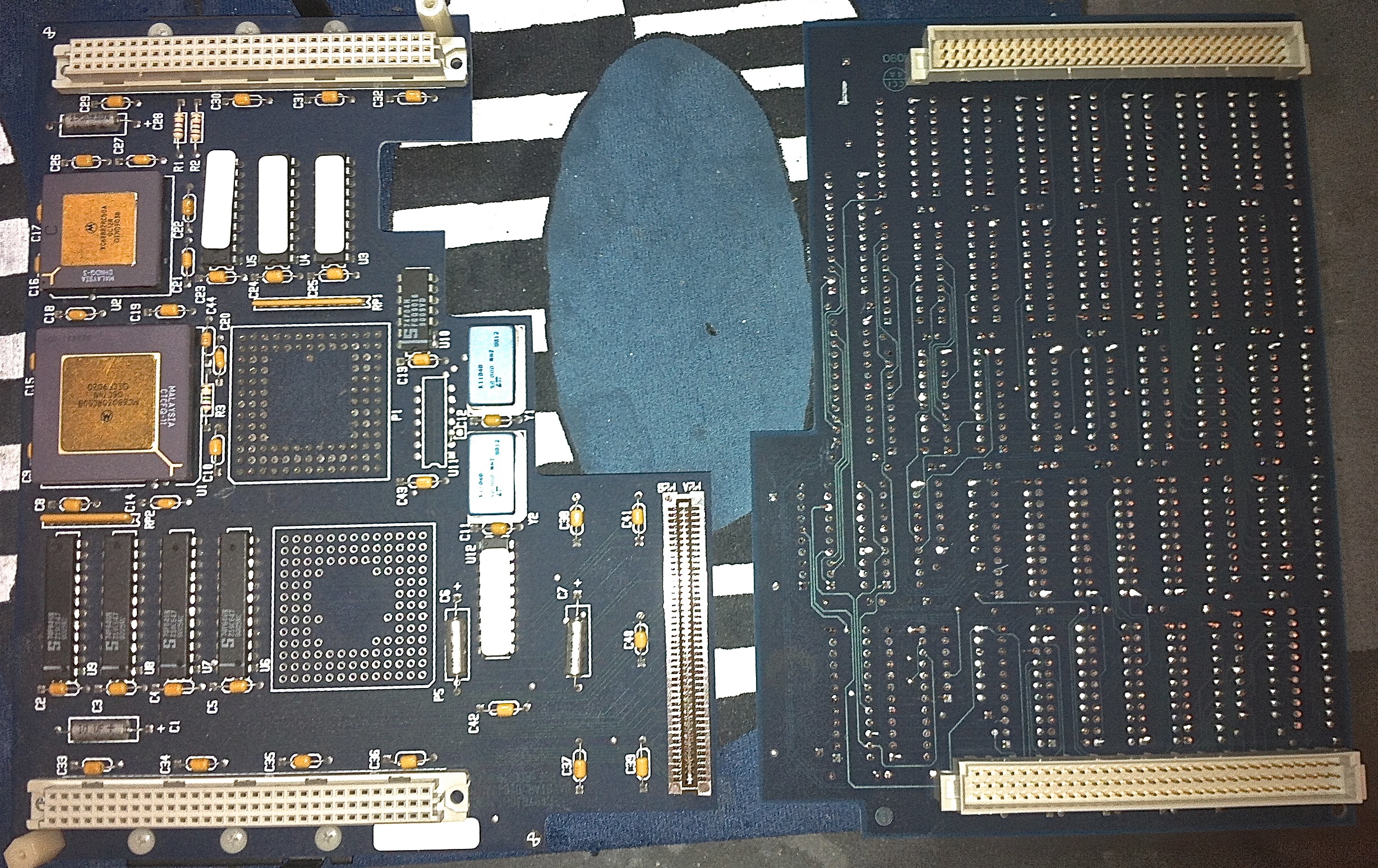
DayStar Digital Accelerator II (33MHz, 32K cache)
by Daystar Digital, Atlanta Highway, Flowery Beach, GA (TIL03190)
“connects to the motherboard of the Mac II and uses the original 68020 socket rather than an add-in slot, according to Andrew Lewis, president of Daystar Digital. When installed as a Nubus card, the accelerator is hampered by the 10-MHz speed of the slot, he said.” (IW 1988.10)
Includes DayStar’s Extended CPU Interface (XCI), allows addon boards to run at 16-MHz instead of 10-MHz (MK 1989.02.07 V03 N06)
- Websites: Daystar.com, Daystartechnology.com (technotes / FAQs)
- Drivers: Connectix Virtual
- Review: IW 1988.10, MK 1989.02.07 V03 N06, MW 1989.03,
- Ad: MK 1989.02.07 V03 N06 (photo), MU 1989.02,
- Discussion: 68kmla uniserver (photos)
- TIL: 32-Bit System Enabler: DayStar Compatibility (TIL11835), System 7.5: DayStar Accelerator Cards and Mode32 (TA32520)
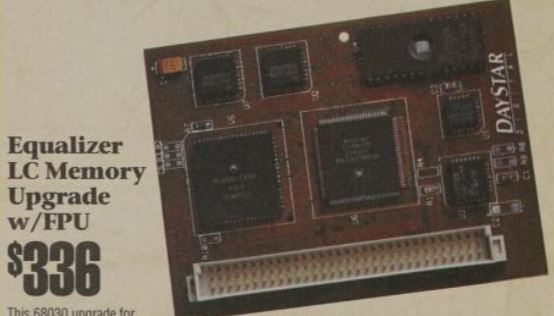
DayStar Digital Equalizer: LC (16MHz, opt FPU)
by Daystar Digital, Atlanta Highway, Flowery Beach, GA (TIL03190)
“This 16MHz 68030-based processor (the LC comes stock with a 68020) gives you enough power to run Apple’s System 7 virtual memory. The math chip is great for recalcs and math/science programs. PowerMath software adds even more of a boost to many other math function.” (MW 1992.06)
- Websites: Daystar.com, Daystartechnology.com (technotes / FAQs)
- Drivers: Connectix Virtual
- Ad: MW 1992.06 (photo)
- TIL: 32-Bit System Enabler: DayStar Compatibility (TIL11835), System 7.5: DayStar Accelerator Cards and Mode32 (TA32520)
DayStar Digital PowerCard: II, IIx, Ilcx (25/33/40/50MHz, opt FPU, 32K cache)
by Daystar Digital, Atlanta Highway, Flowery Beach, GA (TIL03190)
Daystar.com The 1990 pricelist shows two versions of this accelerator, both are different from the photo I found in the review.
Includes DayStar’s Extended CPU Interface (XCI), allows addon boards to run at 16-MHz instead of 10-MHz (MK 1989.02.07 V03 N06)
- Websites: Daystar.com, Daystartechnology.com (technotes / FAQs)
- Drivers: Connectix Virtual
- Review: MU 1990.08 (photo, specs)
- Ads: News Release, Daystar Dec 1990 price list (photos)
- TIL: 32-Bit System Enabler: DayStar Compatibility (TIL11835), System 7.5: DayStar Accelerator Cards and Mode32 (TA32520)
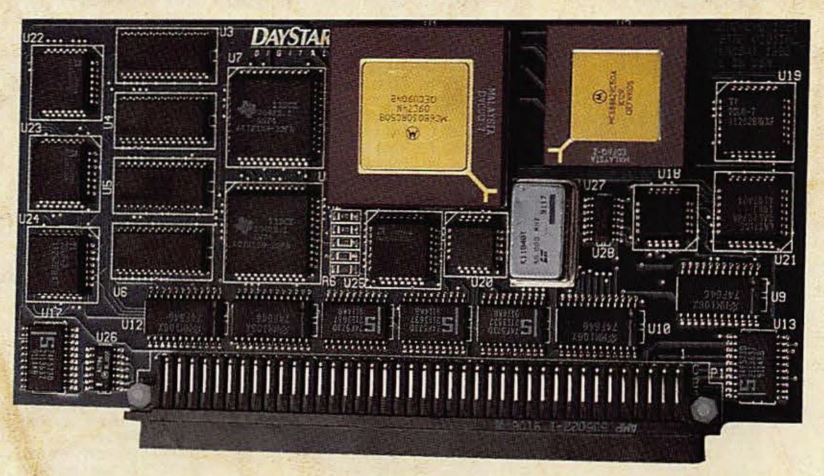
DayStar Digital Universal PowerCache (33/40/50MHz, opt FPU, 32K cache)
by Daystar Digital, Atlanta Highway, Flowery Beach, GA (TIL03190)
PDS slot, Adapter required for SE/30, II, IIx, IIcx*, IIsi, Performa 400, 405, 410, 430, 450, LC, LC II, LC III, LC 520 and Color Classic. None needed for IIci, IIvx, IIvi and Performa 600
- Websites: Daystar.com (product page), Daystartechnology.com (technotes / FAQs)
- Drivers: Driver, Connectix Compact Virtual
- Manuals: manual IIsi, IIci
- Review: Byte 1993.02
- Ads: Daystar Dec 1990 price list, Daystar July 1994 Catalog (photo), DayStar Digital Product Reference Notebook on CD-ROM (Macintosh version 1.1, 1994), Daystar Performance Guide 1995 (photo), MW 1991.11 (photo)
- TIL: 32-Bit System Enabler: DayStar Compatibility (TIL11835), System 7.5: DayStar Accelerator Cards and Mode32 (TA32520)
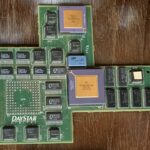
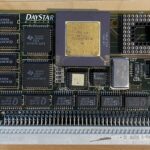
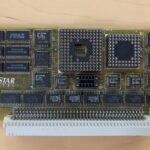
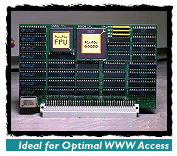
DiiMO Cache: II, IIx, IIcx, IIci, IIsi, IIvx, IIvi, LC, LCII, LCIII, Performa 400, Performa 600, SE/30 (50MHz, opt FPU, 64K cache)
by DiiMO Technologies Inc (formally Teknovation Inc). 2540 Brockton Drive, Suite 110, Austin, Texas 78758 (source MK V07 N22)
The card was originally developed by Logica Reasearch Inc as the LogiCache (MK V07 N22) and was later sold by MicroMac as the MicroMac DiiMMO 030.
“MicroMac Technology has incorporated accelerators originally developed by such firms as DiiMO, Dove, Harris, and Mobius into its product line.” MU 1997.07
- Website: micromac.com
- Drivers: drivers, Connectix Virtual
Dove Marathon Racer 030 Plus, SE, Classic (16MHz, opt FPU)
by Dove Computer Corporation, 1200 North 23rd St. Wilmington, NC 28405 (source Byte 1992.02)
Rebranded the MicroMac Performer when Dove stopped making accelerators.
“MicroMac Technology has incorporated accelerators originally developed by such firms as DiiMO, Dove, Harris, and Mobius into its product line.” MU 1997.07
Clip on, Optional Extended Video
- Website: micromac.com, manual v1.0
- Drivers: drivers, Connectix Compact Virtual
- Reviews: MW 1990.08 (photo), MW 1991.07, Byte 1993-02, MU 1993.04
Dove 030 Mac II (32MHz, opt FPU)
by Dove Computer Corporation, 1200 North 23rd St. Wilmington, NC 28405 (source Byte 1992.02)
Re-engineered and rebranded the MicroMac Marathon Mac II when Dove stopped making accelerators.
“MicroMac Technology has incorporated accelerators originally developed by such firms as DiiMO, Dove, Harris, and Mobius into its product line.” MU 1997.07
Based on the advertisement, there seems to be 2 version of this accelerator. I believe the 2nd version has a PMMU so that the Mac II could support virtual memory.
- Website: micromac.com
- Drivers: drivers, Connectix Virtual
- Manuals: manual v1.0
- Review: MW 1989-03 (photo)
- Ad: MW 1991.11 (photo)

Extreme Systems Extender
Also sold as MacProducts USA Magic (MW 1993.06)
Drivers: GEMStart Universal 7.1, Connectix Virtual
- PDS slot. Upgrades your LC with a 33MHz 030 processor, allows use of Virtual Memory. Optional Math co-processor.
- Review: MW 1993.06
- Ad: MU 1993.04
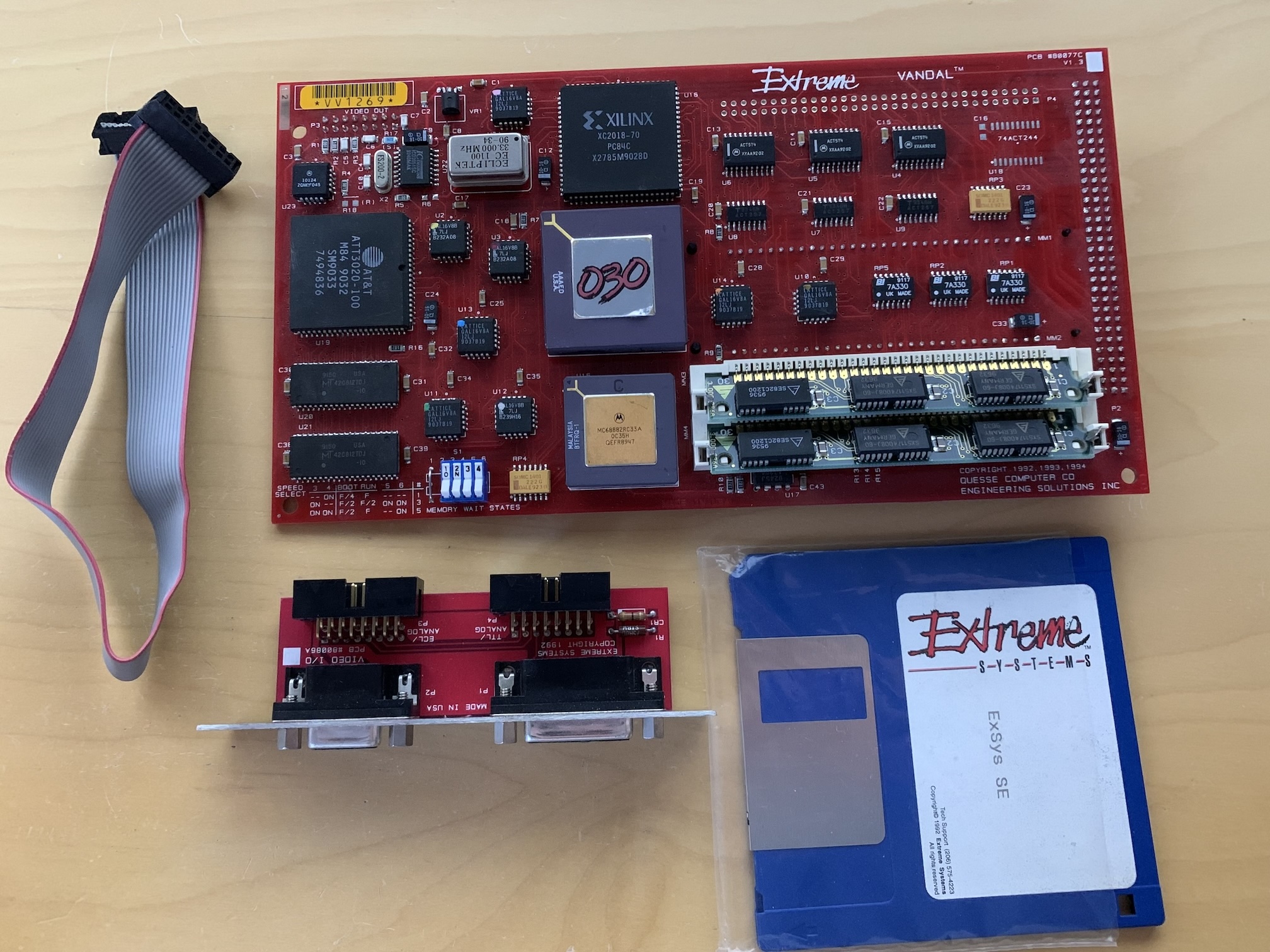
Extreme Systems Vandal SE (33/50MHz, fpu)
Also sold by Total Systems as the Gemini Integra (MW 1993.06)
IIfx speed for your SE. FPU, memory slots and video standard. Supports many Dual and Full page monitors.
- Drivers: Driver, alternate driver GEMStart Universal 7.1, Connectix Compact Virtual
- Manuals: User Guide v1.0
- Review: Byte 1993.02, MW 1993.06
- Ad: MU 1993.04 (tiny photo)
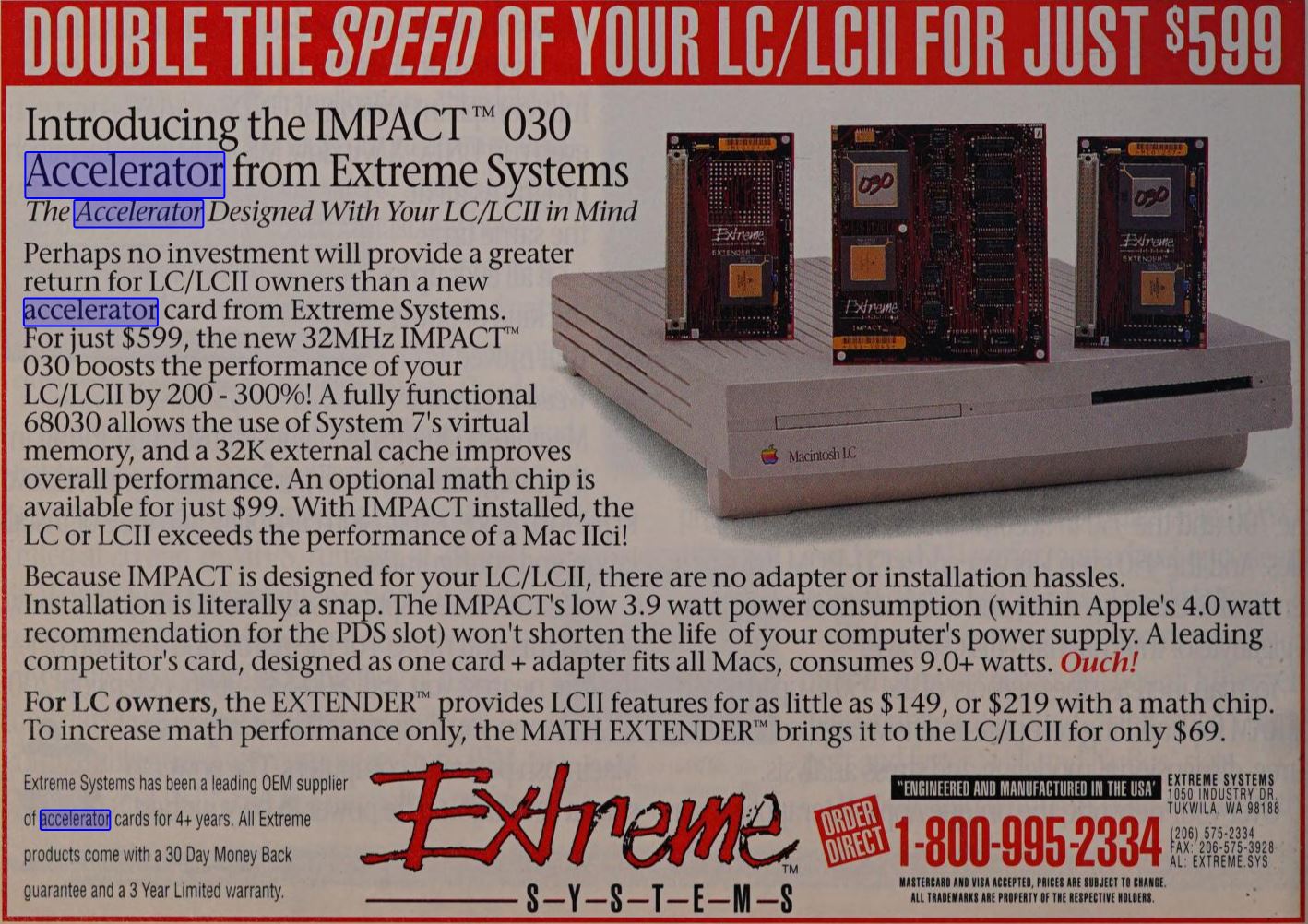
Extreme Systems Impact LC, LC II (33, opt FPU)
PDS slot. Upgrades your LC/LC II with a 33MHz 030 processor, allows use of Virtual Memory. Optional Math co-processor.
- Drivers: Driver, alternate driver GEMStart Universal 7.1, Connectix Virtual
- Review: Byte 1993-02, MW 1993.06
- Ad: MW 1992.11 (photo), MU 1993.04 (photo),
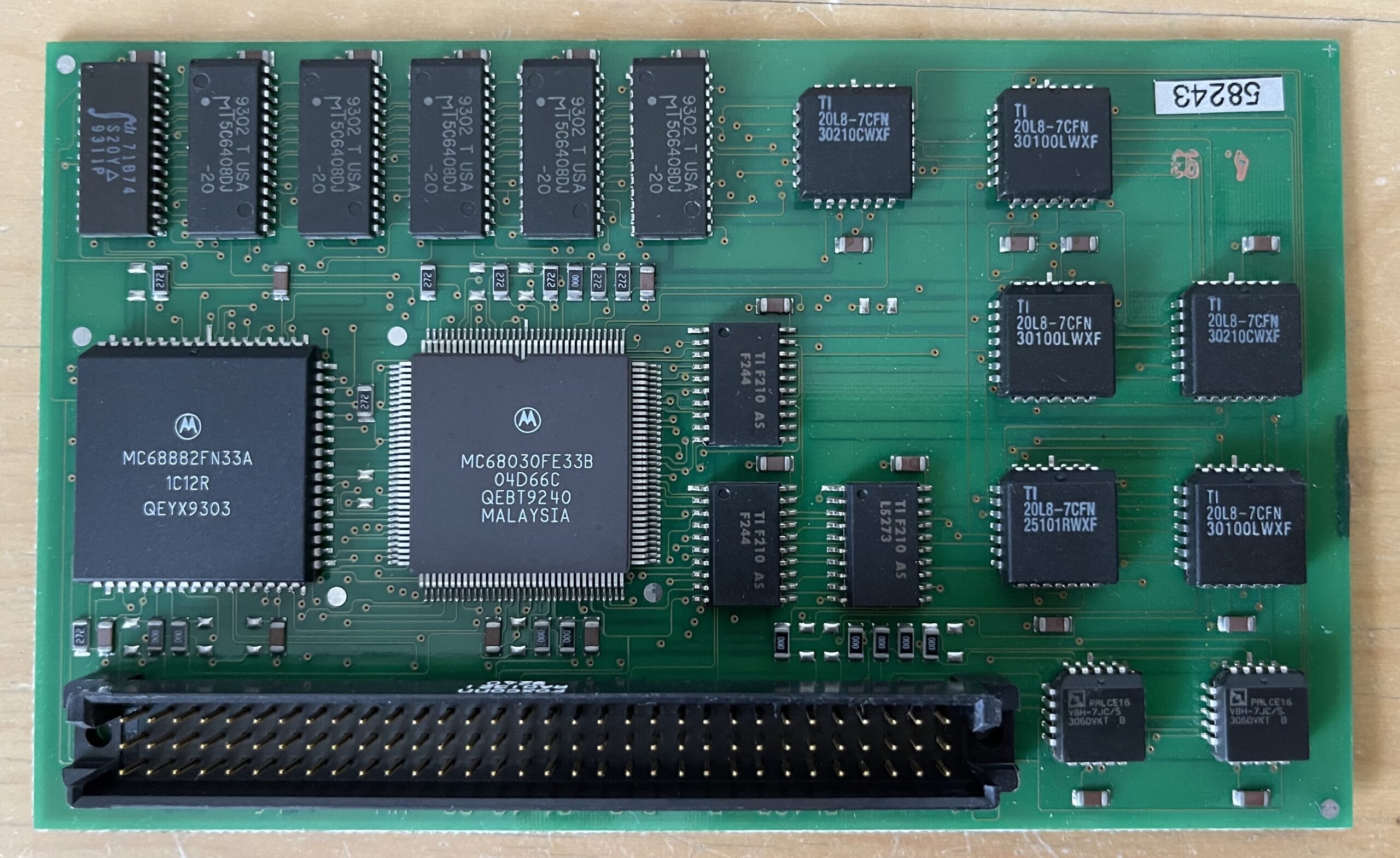
Formac Pro33 LC, LC II (33, opt FPU)
- Website: formac.com, (photos)
- Drivers: drivers, Connectix Virtual
- Reviews: Icônes 1993.12 (french, photo), MacWelt 1993.10 (german)
- Ad: Icônes 1993.12, MacWelt 1993.10 (photo)
- Discussion: 68kmla (photo)

Formac Pro50 LCIII (50, FPU, 32K cache)
- Website: formac.com, (photos)
- Drivers: drivers, Connectix Virtual
- Review: Icônes 1993.12 (french)
- Ad: Icônes 1993.12, MacWelt 1993.10 (photo)
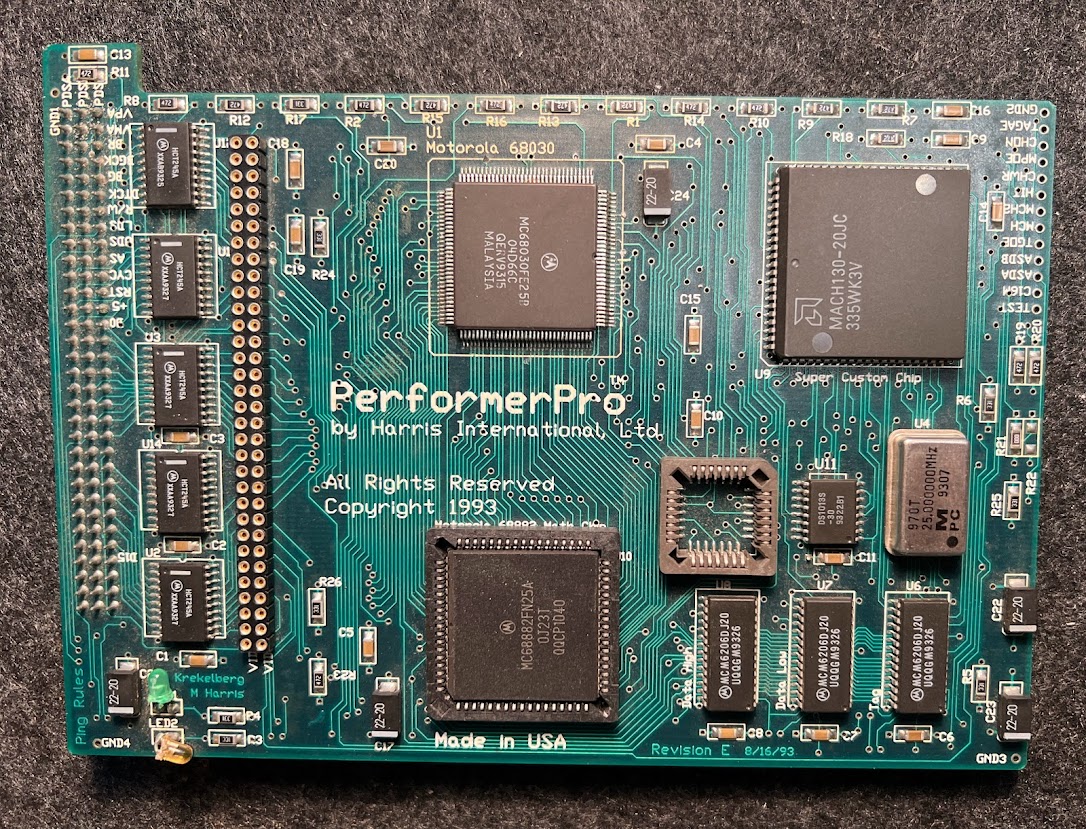
Harris PerformerPro SE, Classic (25MHz, opt FPU, 64K cache)
by Harris Laboratories (later Harris International), Inc Burnsville, MN (Byte 1992.02)
Rebranded the MicroMac Performer Pro: Plus, SE, Classic when Harris stopped making accelerators.
“MicroMac Technology has incorporated accelerators originally developed by such firms as DiiMO, Dove, Harris, and Mobius into its product line.” MU 1997.07
- Website: micromac.com, drivers
- News: MW 1993.11
- Box contents: by wottle from the 68kmla.org,
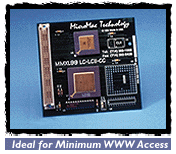
Harris PerformerPro LC, LC II (32MHz, opt FPU)
by Harris Laboratories (later Harris International), Inc Burnsville, MN (Byte 1992.02)
Rebranded the MicroMac Thunder: LC, LC II when Harris stopped making accelerators.
“MicroMac Technology has incorporated accelerators originally developed by such firms as DiiMO, Dove, Harris, and Mobius into its product line.” MU 1997.07
- Website: micromac.com, drivers, Connectix Virtual
- News: MW 1994.02
- Box contents: by wottle from the 68kmla.org,
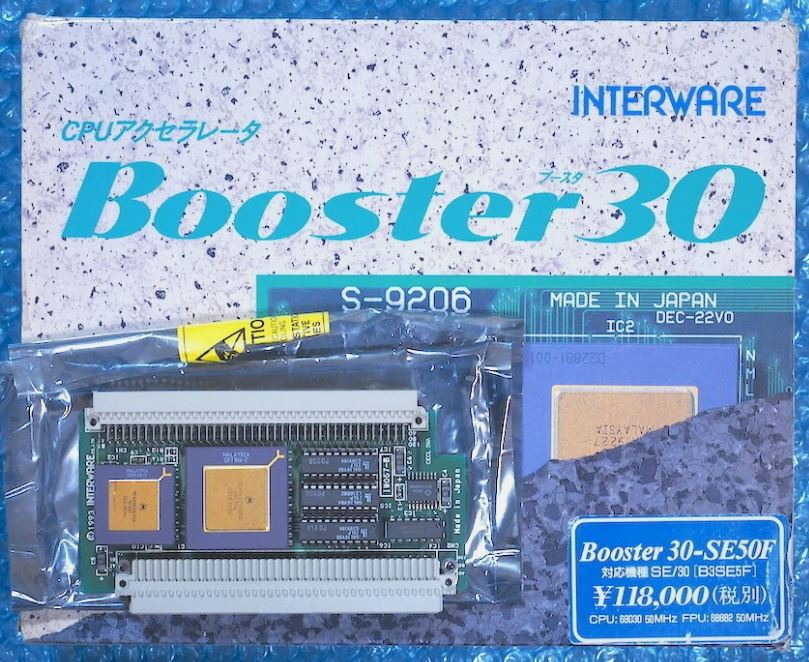
Interware Booster 30: SE/30 (50, FPU)
by Interware co. LTD (unfortunately no info on this accelerator), Shibuya-ku, Tokyo
ZigZagJoe from the 68kMLA forum has cloned this accelerator and made a socketed version

Logica LogiCache 50MHz for II, IIx, IIcx, IIci, IIsi, IIvx, IIvi, LC, LCII, LCIII, Performa 400, Performa 600, SE/30
by Logica Research 8760 Research Blvd, Austin TX
The company was sold to DiiMO Technologies Inc. (MK V07 N22) and the Macintosh II version of the card was rebranded as the DiiMO cache II and then was later sold by MicroMac as the MicroMac Dimmo 030.
“MicroMac Technology has incorporated accelerators originally developed by such firms as DiiMO, Dove, Harris, and Mobius into its product line.” MU 1997.07
- Website: micromac.com
- Drivers: drivers, Connectix Virtual
- Review: MU 1993.04
- Ad: MU 1993.04 (photo)
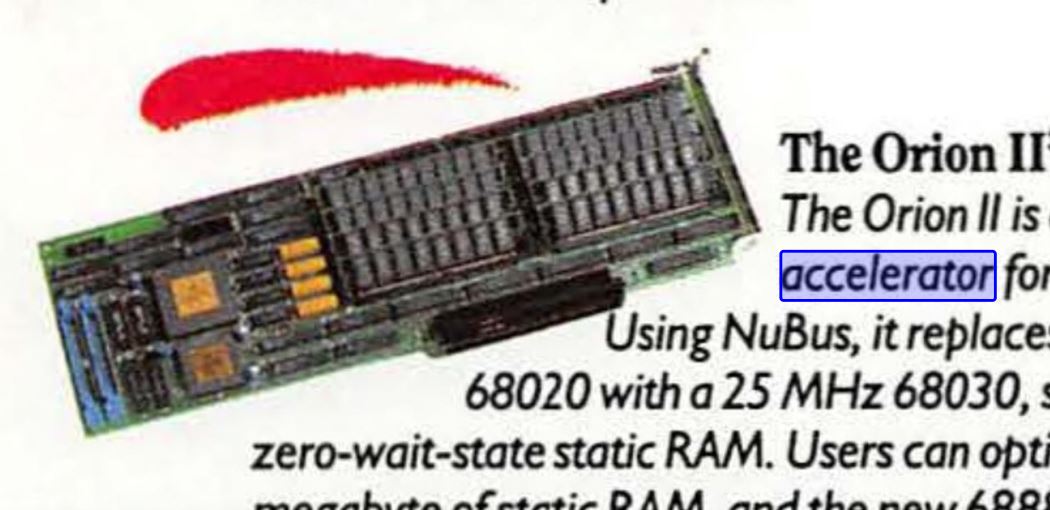
MacPeak The Orion II, Mac II (25MHz, opt FPU)
by MacPEAK Systems / MacPEAK research, Texas (TIL02422)
In 1988 MacPEAK Systems granted retail distribution rights for its accelerator board line to Irwin Magnetics Inc..[Irwin will be] offering the 16 ,20, and 25MHz Mac SE boards under its Excelerator brand name” – WK 1989.04 V.03.N15.p65
I could not find a matching board under the Irwin Excelerator brand.
- Drivers: Connectix Virtual
- Ad: MW 1988.10 (photo)
MacProducts USA Railgun (Pro) 030: Plus, SE, Classic (16/25/33MHz, opt FPU)
by MacProducts USA, Inc 608 West 22nd St. Austin, TX 78705 (source Byte 1992.02, TIL02423), 8303 MoPac Expwy., #218, Austin, TX (source MW 1990.02). Became DGR Technologies Inc. in 1994 (drg.com), unfortunately there is no information on accelerators on the cached site.
Also sold as the Novy Quik30 (MW 1993.06)
These boards were renamed Railgun Pro when the less expensive Magic versions were released (see below).
Licensed from Novy, see: Novy Systems Quik30
- Drivers: GEMStart Universal 7.1, Connectix Compact Virtual (select Novy Quick30)
- Reviews: MW 1990.02 (16,25), MW 1990.08 (16, 25, 33), MW 1991.07, MW 1992.02, MW 1992.06 (specs, ad), MW 1992.08 (ad, photo), Byte 1993.02, MU 1993.04,
- Ads: MW 1990.11 (photo), MW 1991.05 (photo), Ad: MW 1993.08
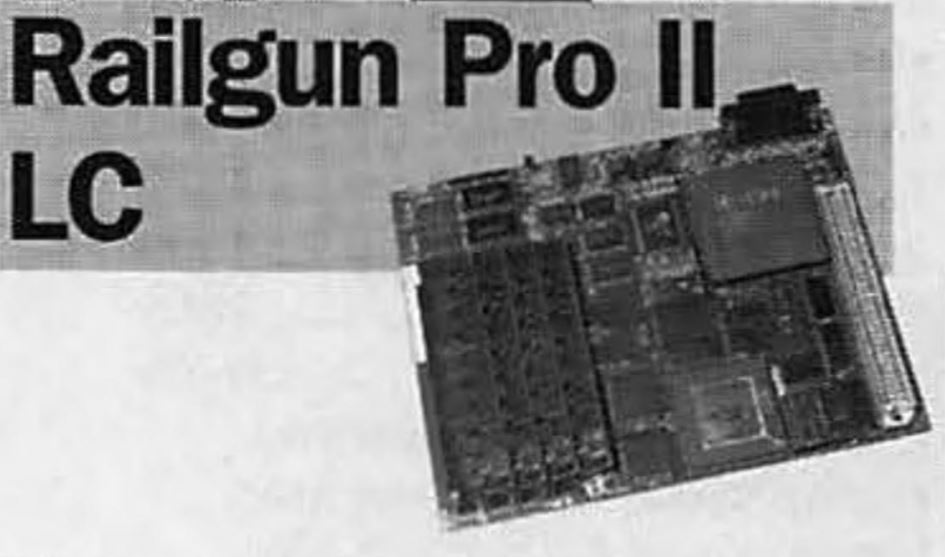
MacProducts USA Railgun Pro II: LC (50, FPU, 64MB)
by MacProducts USA, Inc 608 West 22nd St. Austin, TX 78705 (source Byte 1992.02, TIL02423), 8303 MoPac Expwy., #218, Austin, TX (source MW 1990.02). Became DGR Technologies Inc. in 1994 (drg.com), unfortunately there is no information on accelerators on the cached site.
This appears to be the same board as the Novy Systems ImagePro II LC that I thought was never released. If it was released, I would love to get a copy of the drivers/enablers for it.
- Drivers: GEMStart Universal 7.1
- Ads: MW 1993.12, MU 1994.01, MW 1994.12 (picture).
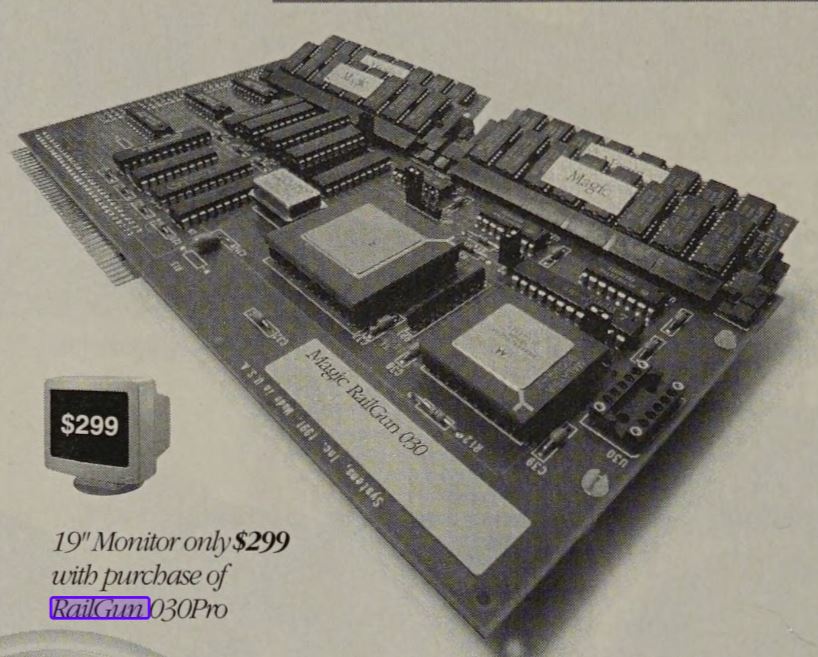
MacProducts USA MagicRailgun
by MacProducts USA, Inc 608 West 22nd St. Austin, TX 78705 (source Byte 1992.02, TIL02423), 8303 MoPac Expwy., #218, Austin, TX (source MW 1990.02). Became DGR Technologies Inc. in 1994 (drg.com), unfortunately there is no information on accelerators on the cached site.

MicroMac DiiMO 030: II, IIx, IIcx, IIci, IIsi, IIvx, IIvi, LC, LCII, LCIII, Performa 400, Performa 600, SE/30 (50MHz, opt FPU, 64KB cache)
by MicroMac Technology, Inc. Aliso Viejo, CA (TIL16630)
Originally the Logica LogiCache 50MHz, then the DiiMO Cache 030 (MK V07 N22), the manufacturing rights were sold to MicroMac when DiiMO stopped making accelerators.
“MicroMac Technology has incorporated accelerators originally developed by such firms as DiiMO, Dove, Harris, and Mobius into its product line.” MU 1997.07
- Website: micromac.com
- Drivers: drivers, Connectix Virtual
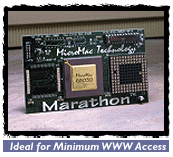
MicroMac Marathon: Mac II (32MHz, opt FPU)
by MicroMac Technology, Inc. Aliso Viejo, CA (TIL16630)
Originally the Dove 030 Mac II, “MicroMac Technology has incorporated accelerators originally developed by such firms as DiiMO, Dove, Harris, and Mobius into its product line.” MU 1997.07
Clip on, Optional Extended Video
- Website: micromac.com
- Drivers: drivers, Connectix Virtual
- Manuals: manual v1.0
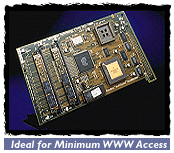
MicroMac MultiSpeed: Plus, SE (25MHz, opt FPU)
by MicroMac Technology, Inc. Aliso Viejo, CA (TIL16630)
May be a rebranded / reworked version of NewLife’s Accelerator! SE, or for some reason it uses the same drivers: “the control panel for System 6 of MultiSpeed has a control panel where the NewLife logo appears.“
Clip on, Optional Extended Video
- Website: micromac.com,
- Drivers: drivers, Connectix Compact Virtual
- Reviews: MU 1993.04
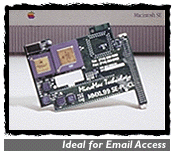
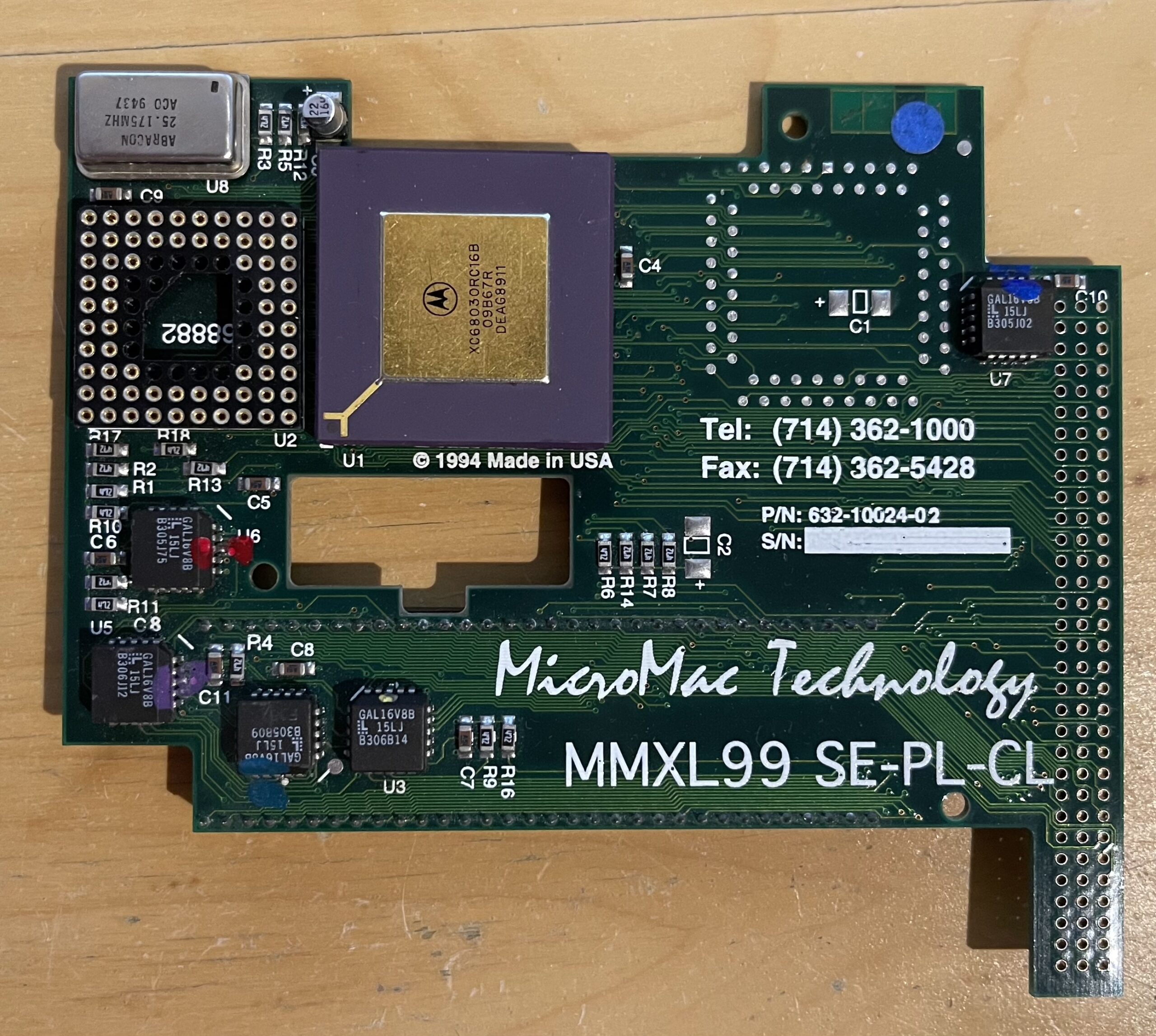
MicroMac Performer: Plus, SE, Classic (16MHz, opt FPU)
by MicroMac Technology, Inc. Aliso Viejo, CA (TIL16630)
Originally the Dove Marathon Racer renamed when DiiMO stopped making accelerators
“MicroMac Technology has incorporated accelerators originally developed by such firms as DiiMO, Dove, Harris, and Mobius into its product line.” MU 1997.07
Clip on, Optional Extended Video
MacEffects currently sells the clones of this accelerator based on Bolle’s designs
- Website: micromac.com,
- Drivers: drivers, Connectix Compact Virtual

MicroMac Performer Pro: Plus, SE, Classic (32MHz, opt FPU, 64KB cache)
by MicroMac Technology, Inc. Aliso Viejo, CA (TIL16630)
Originally the Harris Performer Pro SE, Classic renamed when Harris International stopped making accelerators
“MicroMac Technology has incorporated accelerators originally developed by such firms as DiiMO, Dove, Harris, and Mobius into its product line.” MU 1997.07
- Website: micromac.com,
- Drivers: drivers, Connectix Compact Virtual

MicroMac Thunder: LC, LCII (Performa 400/405/410/430) &
Color Classic (32MHz, opt FPU)
by MicroMac Technology, Inc. Aliso Viejo, CA (TIL16630)
Website: micromac.com, drivers
also offered as part of the MicroMac Power Workstation
Originally the Harris Performer Pro LC, LC II renamed when Harris International stopped making accelerators
“MicroMac Technology has incorporated accelerators originally developed by such firms as DiiMO, Dove, Harris, and Mobius into its product line.” MU 1997.07
MicroMac ThunderPro: LC, LCII (Performa 400/405/410/430) &
Color Classic (32MHz, opt FPU, 26MB)
by MicroMac Technology, Inc. Aliso Viejo, CA (TIL16630)
Website: micromac.com, drivers
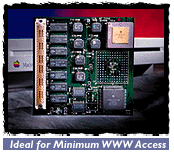
MicroMac ThunderCache: LC, LC II (32MHz, opt FPU, 32KB cache)
by MicroMac Technology, Inc. Aliso Viejo, CA (TIL16630)
Website: micromac.com, drivers
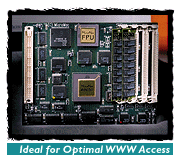
MicroMac ThunderCachePro: LC, LC II, CC (32/50MHz, opt FPU, 26MB)
by MicroMac Technology, Inc. Aliso Viejo, CA (TIL16630)
Website: micromac.com, drivers
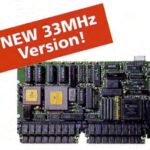
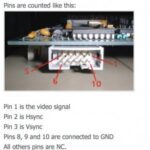
Mobius 030: SE, Classic (25, 33MHz, opt FPU, 16MB)
by Mobius Technologies Inc., Emeryville CA (TIL04628)
Clip on, Extended Video
- Drivers: driver, GEMStart Universal 7.1, Connectix Compact Virtual
- Manuals: manual
- Reviews: MW 1991.07, Byte 1993.02, MW 1993.06
- News: CW 1991.04, CW 1991.08
- Ads: MW 1991.11 (photo), MU 1992.05 (photo), MU 1992.10 (photo), MU 1993.06 (photo) MW 1993.07 (photo)
- Discussion: uridium at 68kMLA.org (discussion of pinouts for video)
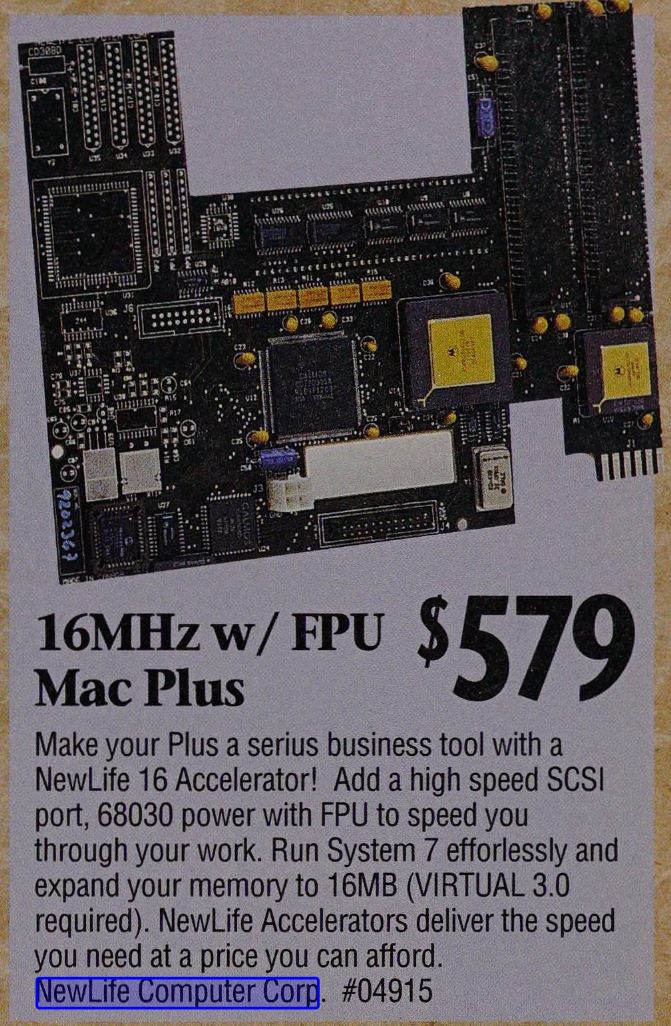
NewLife Accelerator! 128k, 512K, 512Ke, Plus (16MHz, opt FPU, 16MB)
See my NewLife page for details on the NewLife 16
Clip on, optional SCSI and Video, seems to be a cost reduced version of the NewLife 25
Manual(s), drivers, advertisements and reviews
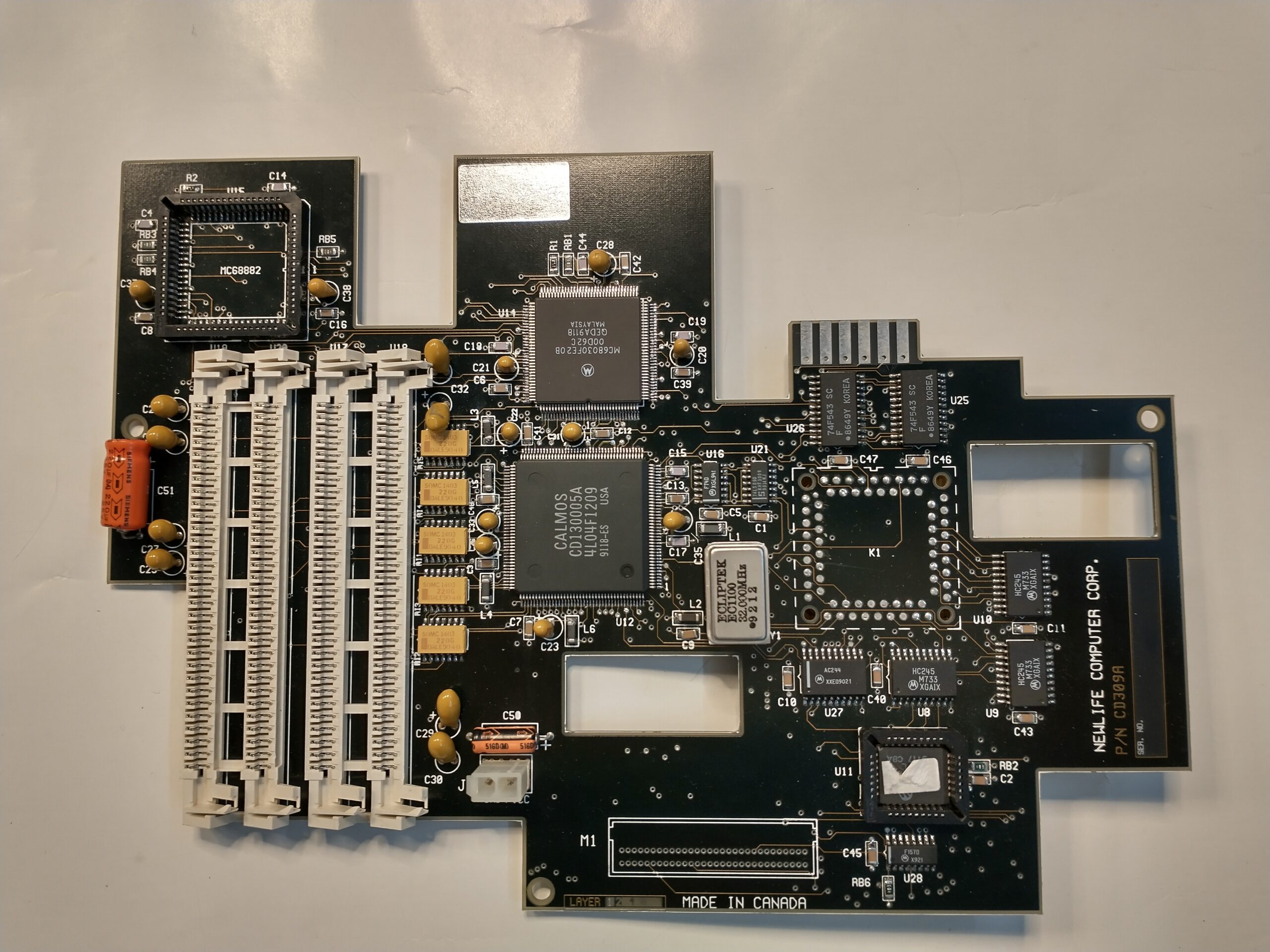
NewLife Accelerator! Classic (16, 20 Hz, opt FPU, 16MB)
See my NewLife page for details on the NewLife 16SE
PDS, optional Video, a cost reduced version of the NewLife 25SE
Manual(s), drivers, advertisements and reviews
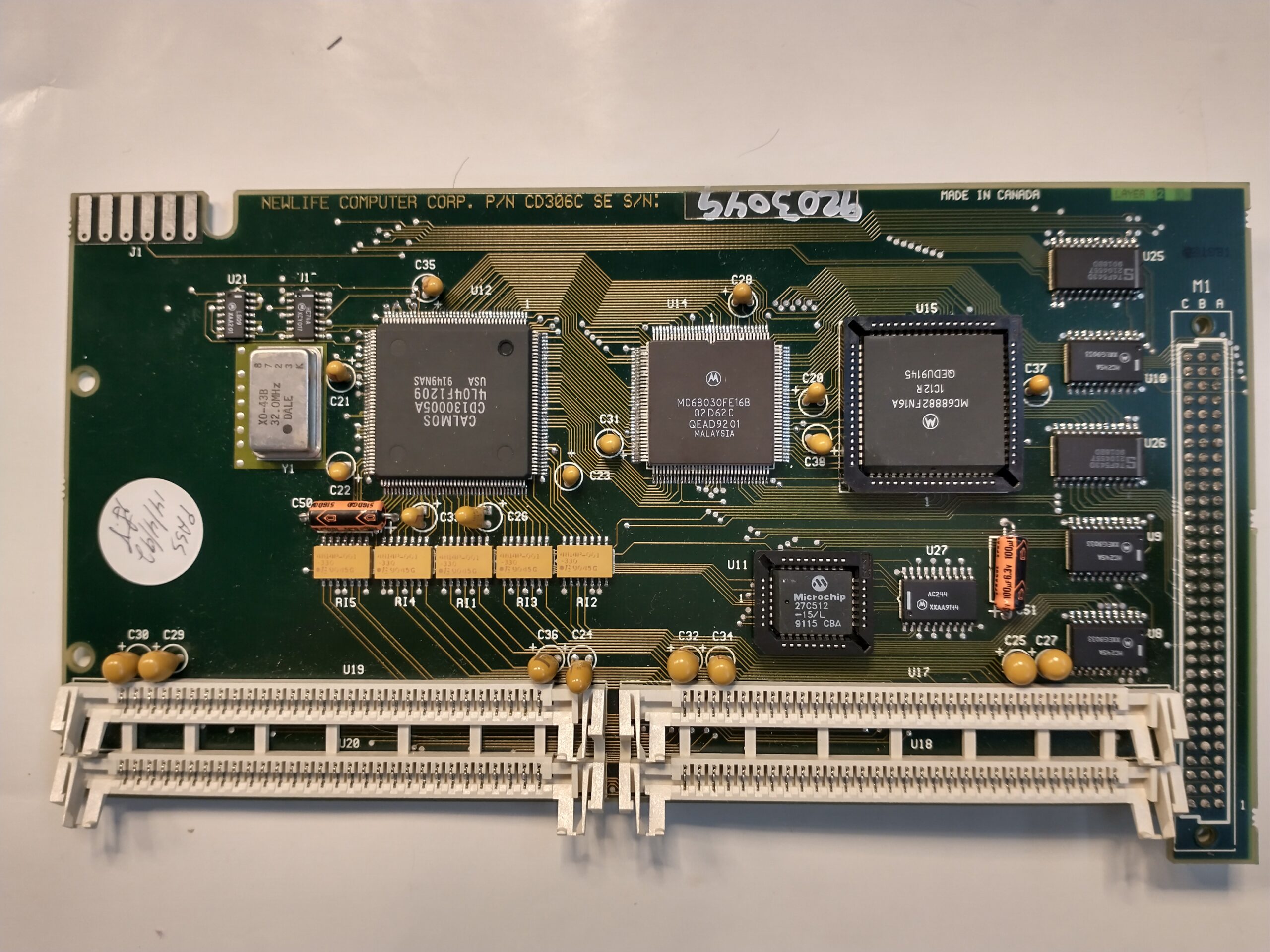
NewLife Accelerator! SE (16MHz, opt FPU, 16MB)
See my NewLife page for details on the NewLife 16SE
PDS, optional Video, a cost reduced version of the NewLife 25SE
Manual(s), drivers, advertisements and reviews
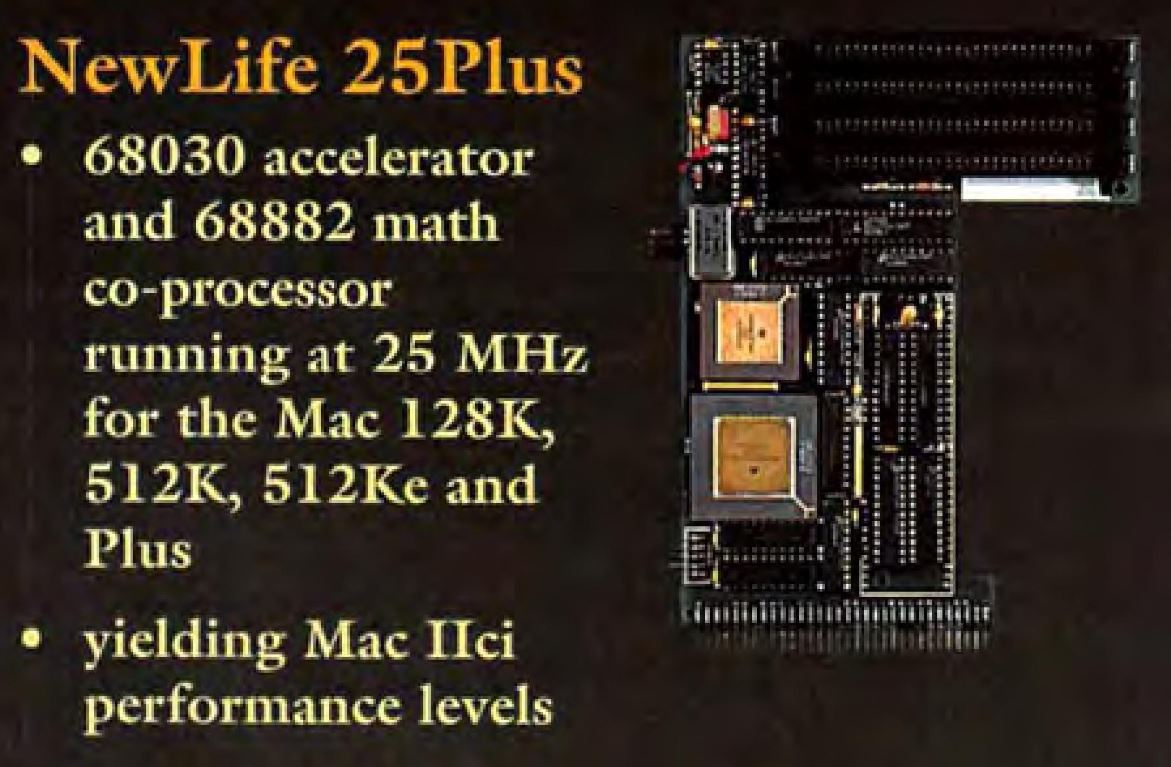
NewLife 25 128k, 512K, 512Ke, Plus (25MHz, opt FPU, 4MB)
See my NewLife page for details on the NewLife 25

NewLife 25CL Classic (16/20/25MHz, opt FPU, 16MB)
See my NewLife page for details on the NewLive 25CL
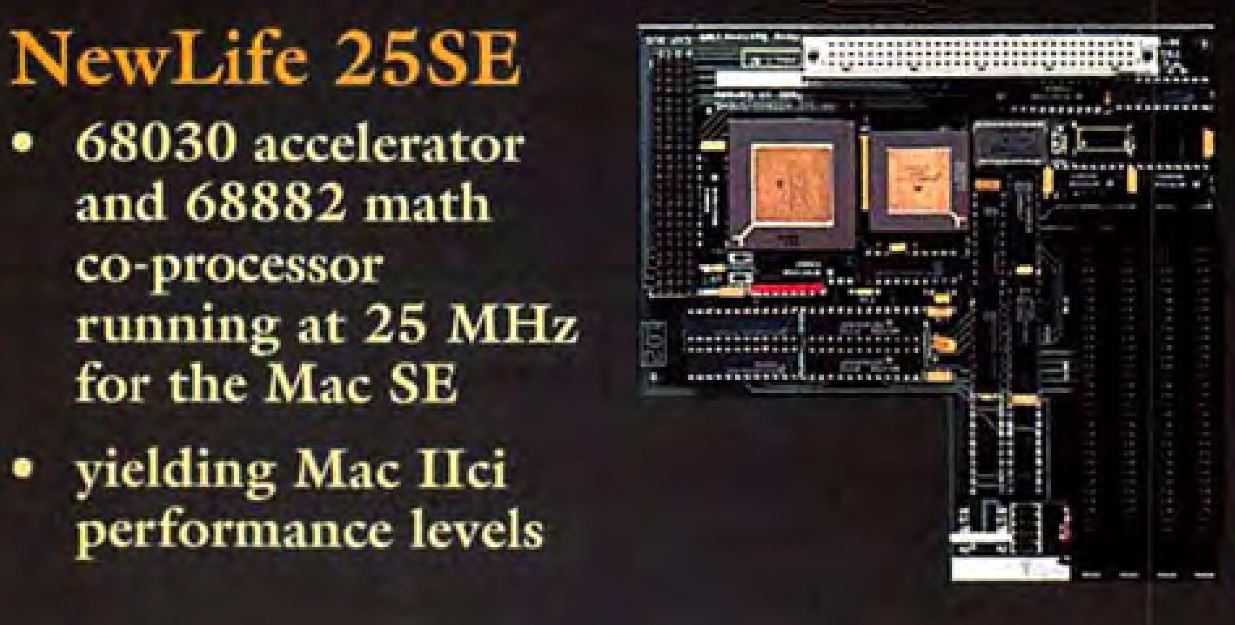
NewLife 25SE (25MHz, opt FPU, 16MB)
See my NewLife page for details on the NewLife 25SE
PDS Slot, Optional Extended Video, Manual(s), drivers, advertisements and reviews
Newbridge: Ad: MW 1990.02
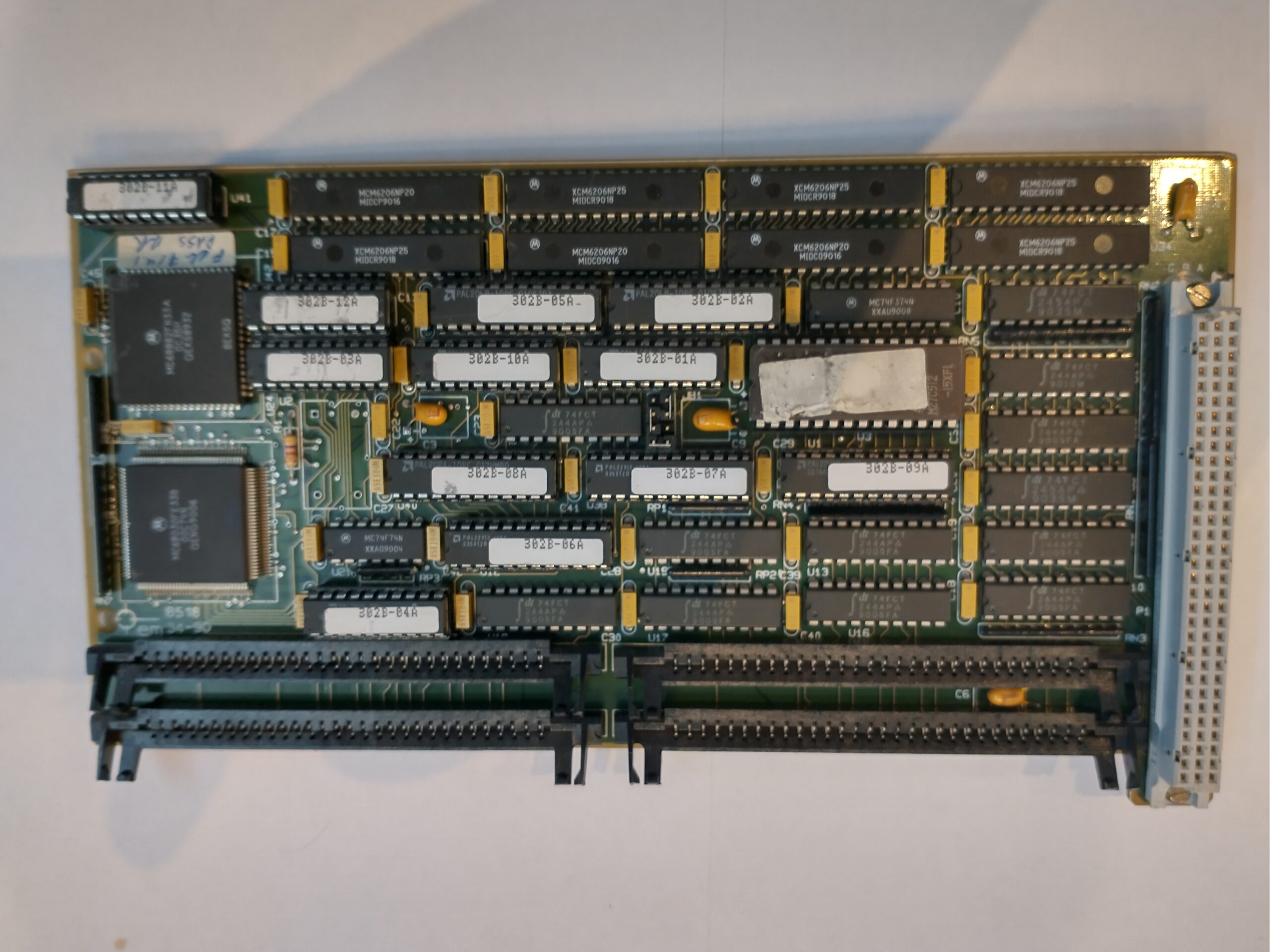
NewLife 33SE (33MHz, opt FPU, 16MB)
See my NewLife page for details on the NewLife 33SE
PDS Slot, Optional Extended Video, Manual(s), drivers, advertisements and reviews
Newbridge: Ad: MW 1990.02
Novy Systems ImagePro: Plus, SE, Classic (16, 25,33, 40, 50MHz, opt FPU, 16MB)
by Novy Systems, Edgewater FL (source MW 1990.02), previously System Technology Corporation (TIL08263)
Clip on, Extended Video.
The same as the Quick30 with the addition of support for an external video display.
- Drivers: GEMStart Universal 7.1, Connectix Compact Virtual
- Reviews: MU 1993.04, MW 1993.12
- Book: Macintosh Do It Yourself Upgrade Book 1992,
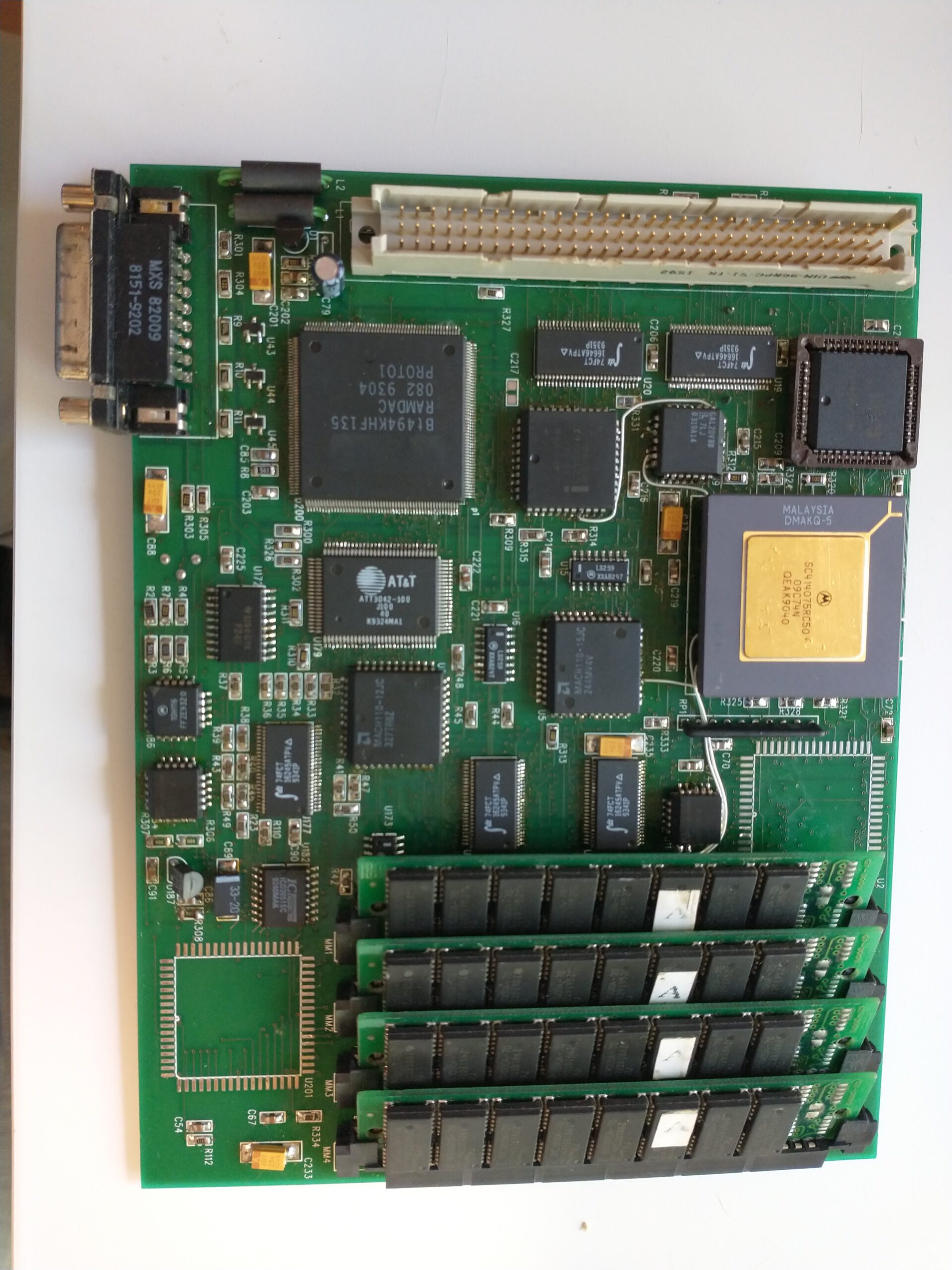
Novy Systems ImagePro II: LC, LC II, CC (50MHz, opt FPU, 64MB)
by Novy Systems, Edgewater FL (source MW 1990.02), previously System Technology Corporation (TIL08263)
PDS slot. I have a prototype of this board for the LC, LC II, CC, that I bought from a Novy Technology Inc employee in 2022. This board may have been sold by MacProducts as the Railgun Pro II accelerator (above). I thought this board was not released, if it was released, I would love to get a copy of the drivers/enablers for it.
- Ads:
- as Novy Image Pro LC: Macwelt 1993, brochure page 1 and page 2.
- as MacProducts Railgun Pro II: MW 1993.12, MU 1994.01, MW 1994.12, (picture)
Novy Systems Quik 30 Plus, SE, classic (16, 25, 33MHz, opt FPU, 16MB)
by Novy Systems, Edgewater FL (source MW 1990.02), previously System Technology Corporation (TIL08263)
Also sold as the MacProducts USA RailGun (MW 1993.06)
Driver, may also be able to use NewLife drivers
Clip on (Plus), PDS slot (SE)
- Drivers: GEMStart Universal 7.1, Connectix Compact Virtual
- Manuals: Novy Quik30 Classic
- Reviews: MW 1990.08, MW 1991.07, MW 1992.06, MW 1993.06, MW 1993.12, MW 1995.02
- Books: Macintosh Do It Yourself Upgrade Book 1992 (photo), Build your own Macintosh and save a bundle 1992 (photo)
- Ad: MU 1990.05
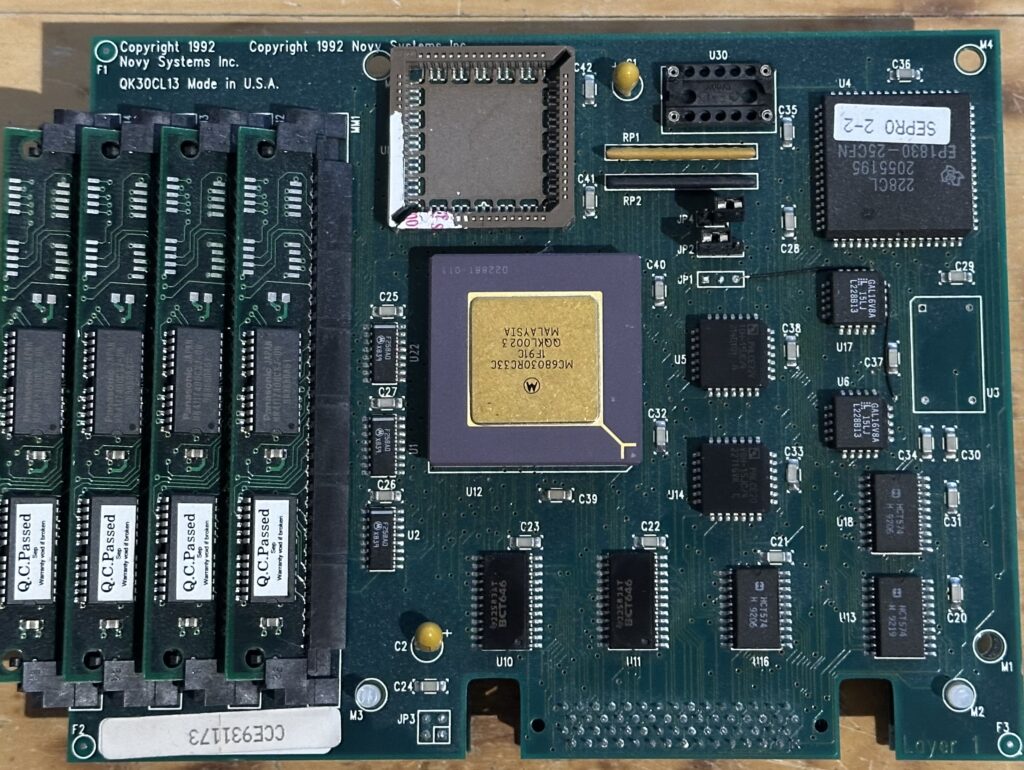
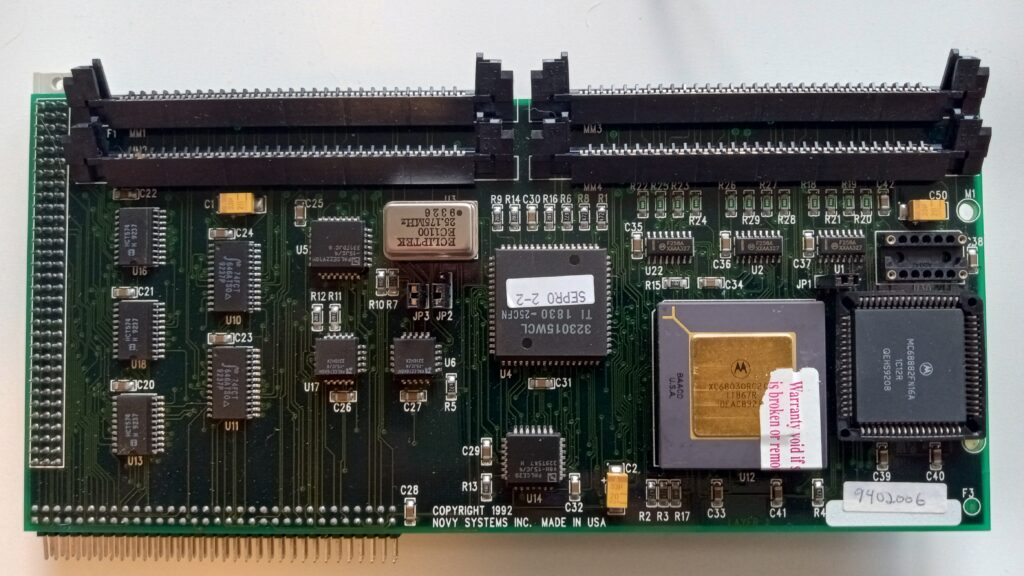
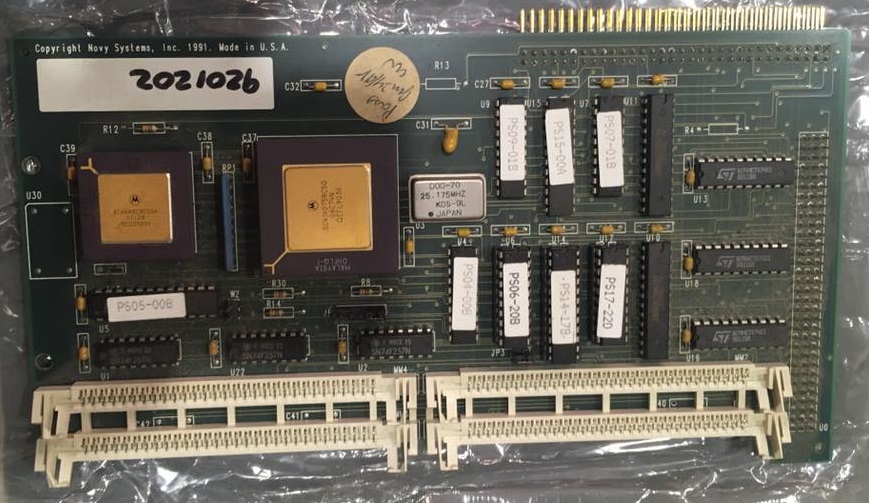

Radius Stage II Rocket
- Website: Radius.com: photos, Q&A, SCSI2Booster
- Drivers: Connectix Virtual
- TIL: LaserWriter IINT: Not Recognized by Radius Accelerator (TA39823)
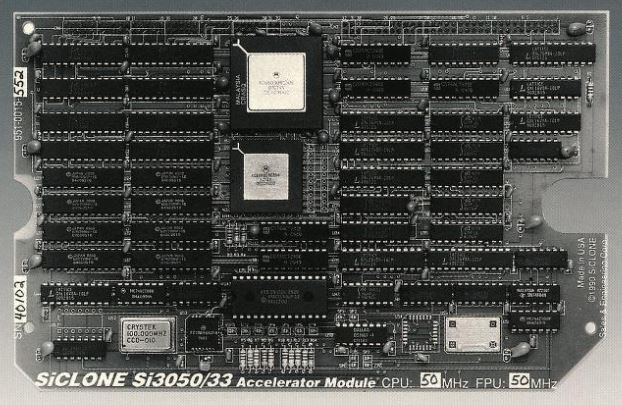
Siclone si30 II, IIx (33, 40, 50MHz, FPU)
by SiClone Sales & Engineering Corp, Sunnyvale CA (MW 1989.03 pg.258)
The company purchased by Applied Engineering in Fall of 1991 (MW 1991.08)
- Drivers: Connectix Virtual
- Ads: brochure, Apple’s Engineering Scientific Solutions
- News: MW 1988-01, IW 1988-11, MW 1988-01,
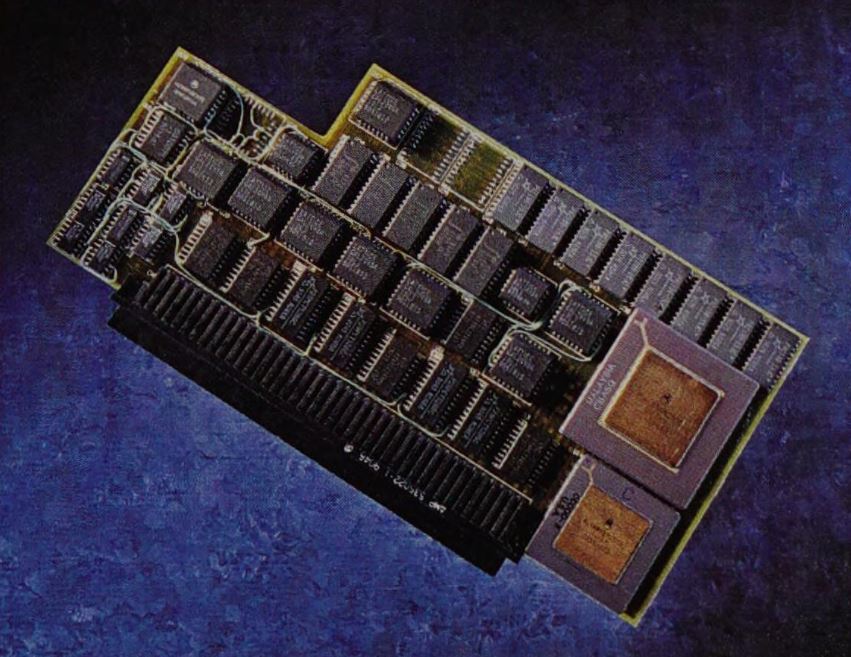
Siclone Intensifier ci (50MHz, opt FPU)
by SiClone Sales & Engineering Corp, Sunnyvale CA (MW 1989.03 pg.258)
Possibly renamed as AE TransWarp Cache-In 50 IIci when Applied Engineering purchased Siclone in Fall of 1991 (MW 1991.08).
- Drivers: Connectix Virtual
- Review: MW 1991.07 (photo)
- Ads: brochure
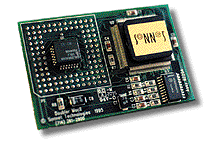
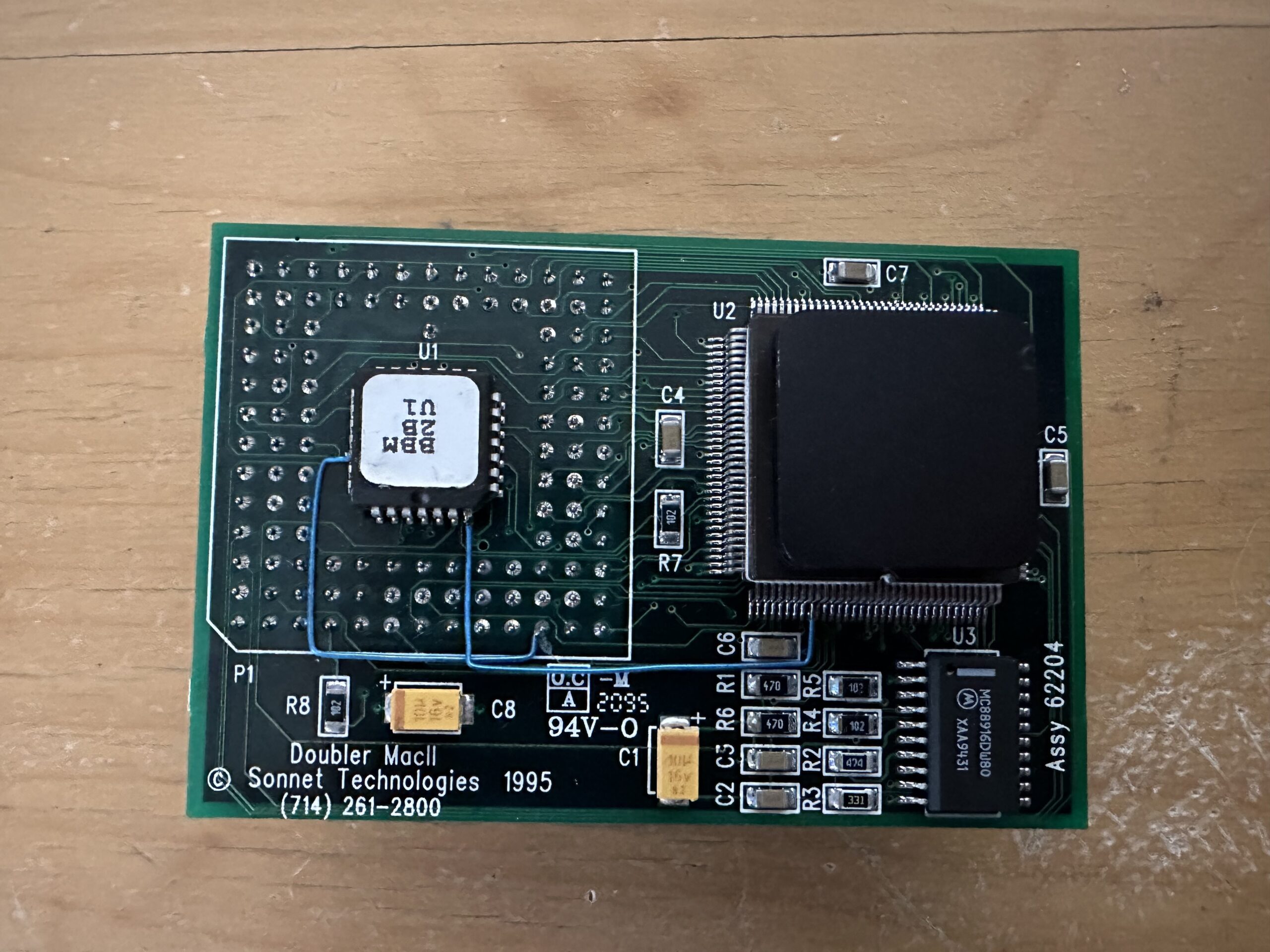
Sonnet Alegro / Sonnet Doubler II, IIx (33MHz)
by Sonnet Technologies, Inc. Irvine CA (TA48208, KB009878, TIL09878)
- Drivers: Connectix Virtual
- Website: Sonnettech.com, drivers
- Ads: MacAddict 006
- Discussions: David Cook at 68kmla
Sonnet Alegro LC, LC II, Color Classic (33MHz, FPU, 16k)
by Sonnet Technologies, Inc. Irvine CA (TA48208, KB009878, TIL09878)
The Sonnet Allegro LC II processor upgrade card card doubles your CPU speed to a 33 MHz 68030, adds a 16K level 2 cache and includes an FPU
- Website: Sonnettech.com
- Drivers: drivers, Connectix Virtual
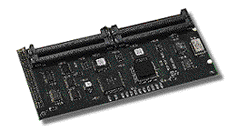
Sonnet Alegro SE (33MHz, FPU, 16MB)
by Sonnet Technologies, Inc. Irvine CA (TA48208, KB009878, TIL09878)
The Sonnet Allegro SE processor upgrade card card increases your CPU speed up to 460% includes an FPU and four 30-pin SIMM slots to expand memory up to 16MB
- Website: Sonnettech.com
- Drivers: drivers, Connectix Compact Virtual
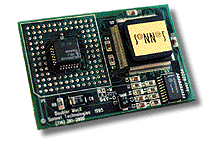
Sonnet Alegro SE/30 (33MHz)
by Sonnet Technologies, Inc. Irvine CA (TA48208, KB009878, TIL09878)
The Sonnet Allegro SE/30 processor upgrade card card doubles your CPU speed to a 33 MHz 68030.
- Website: Sonnettech.com
- Drivers: drivers, Connectix Virtual

TechWorks SE, Classic (25, 40MHz)
by TechWorks (Technology Works), Austin, TX (TA45958, KB007295, TIL07295)
- Drivers: Connectix Compact Virtual
- Ad: MW 1992.12
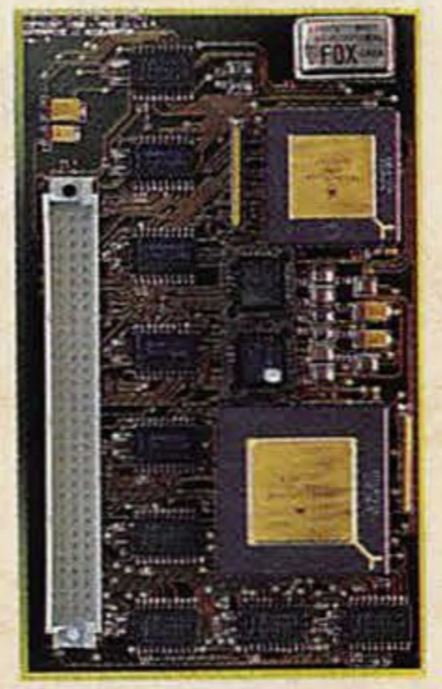
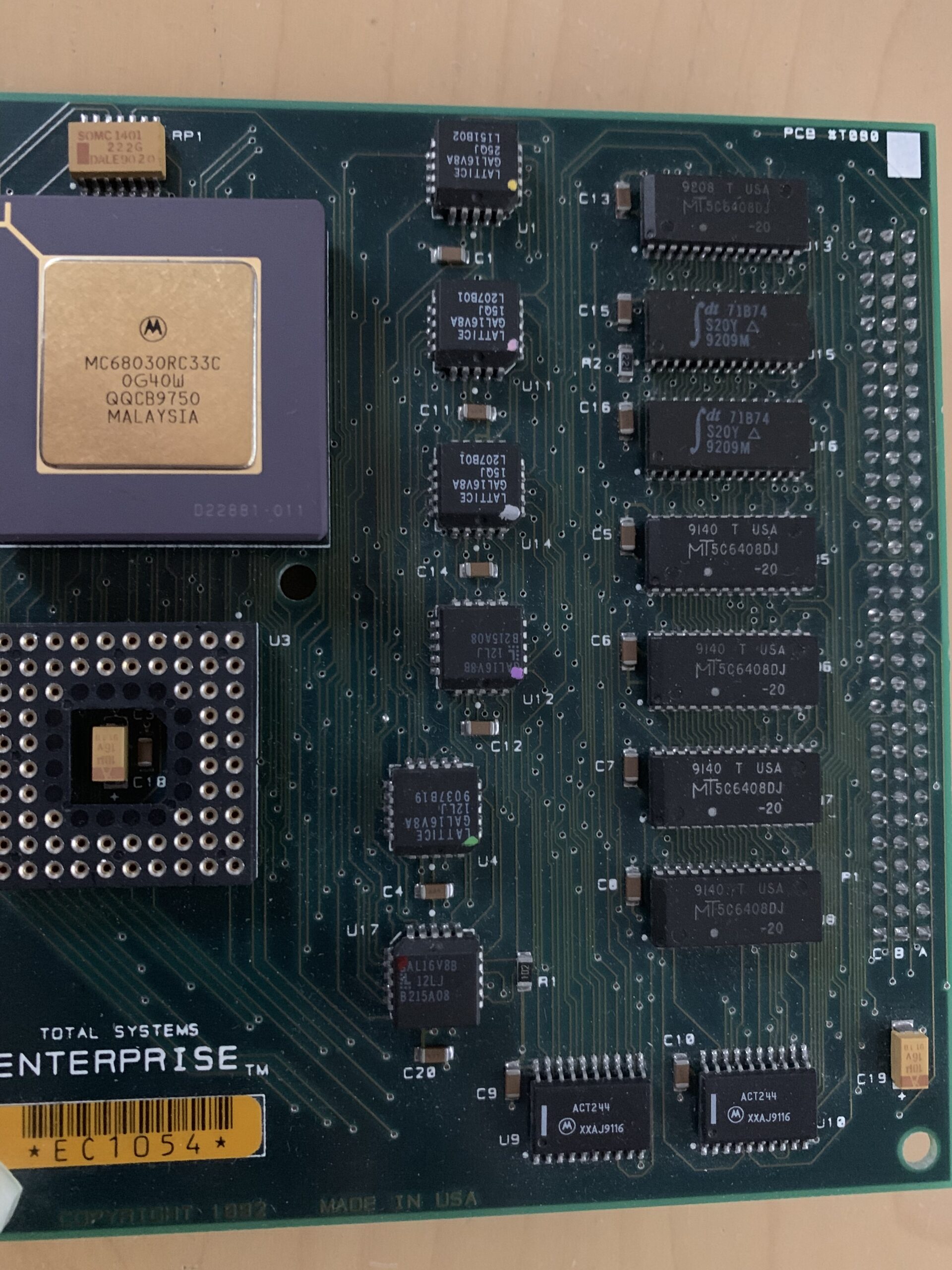
TSI Enterprise IIsi, LC, LC II, SE/30 (25, 33, 40MHz, FPU)
Sold by Total Systems Integration
“This full 32-bit accelerator beefs up standard 68020 with a full strength 16MHz 68030 CPU. Additional MC68882 floating-point coprocessor is optional.” MW 1991.11 (photo)
- Drivers: Drivers, Connectix Virtual
- Reviews: MW 1990.02, MW 1990.08
- Ads: brochure

TSI Gemini Plus, SE (20, 25MHz)
Sold by Total Systems Integration
- Drivers: Drivers, GEMStart Universal 7.1, Connectix Compact Virtual
- Reviews: MW 1991.07, MK 1988.11 V02 N44
- Ads: brochure
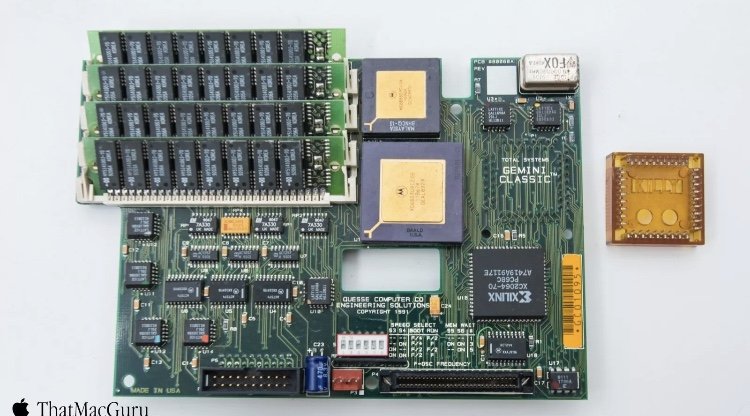
TSI Gemini Classic (20, 25, 33, 40, 50MHz, opt FPU, 16MB)
Sold by Total Systems Integration, designed by Quesse Computer Co Inc, and Engineering Solutions Inc.
“Choose between 20Mhz, 25Mhz, 33Mhz, 40Mhz a 50Mhz 68030 CPU. Upgradable between different processor speeds. Optional 68882 math coprocessor and 4Mb a 16Mb of RAM using standard 1 Mb or 4Mb SIMMs. Includes special clip-on connector— no soldering required. Auxiliary power supply keeps your Classic cod.” MW 1991.11 (photo)
- Drivers: Drivers, GEMStart Universal 7.1, Connectix Compact Virtual
- Ads: brochure, MW 1991.11 (photo)

TSI Gemini Integra (33/50MHz, fpu)
Also sold by Extreme Systems as the Vandal SE (MW 1993.06)

TSI Gemini II (33, 40, 50MHz, opt FPU, 16MB)
Sold by Total Systems Integration, designed by Quesse Computer Co Inc, and Engineering Solutions Inc.
- Drivers: Drivers, GEMStart Universal 7.1, Connectix Compact Virtual
- Ads: brochure
TSI Gemini Ultra: 128K, 512K, Plus, Plus, SE, Classic (33, 40, 50MHz, opt FPU, 16MB)
Sold by Total Systems Integration, designed by Quesse Computer Co Inc, and Engineering Solutions Inc., redesigned version of the Gemini II.
“The formidable, pace-setting Gemini II has been redesigned from the ground up for more speed, more reliability, easier installation, and 4MB SIMM support for up to 16MB a RAM. Choose from 20MHz, 25MHz, 33MHz, 40MHz 68030 CPU speeds. Burst-mode R/\M access adds 15% more speed than equivalent Gemini II configurations. Optional 68882 math coprocessor. 128K, 512K, Plus versions include free high speed SCSI, fan, and power supply; clip-on connector” MW 1991.11 (photo),
- Drivers: Drivers, GEMStart Universal 7.1, Connectix Compact Virtual
- Manuals: Users Guide 3rd Edition
- Reviews: MW 1992.06, Byte 1993-02
- Ad: MW 1991.11 (photo), brochure
- Books: Macintosh Do It Yourself Upgrade Book 1992 p.131, Build your own Macintosh and save a bundle 1992 p.98.
- Discussions: 68kMLA zigzagjoe
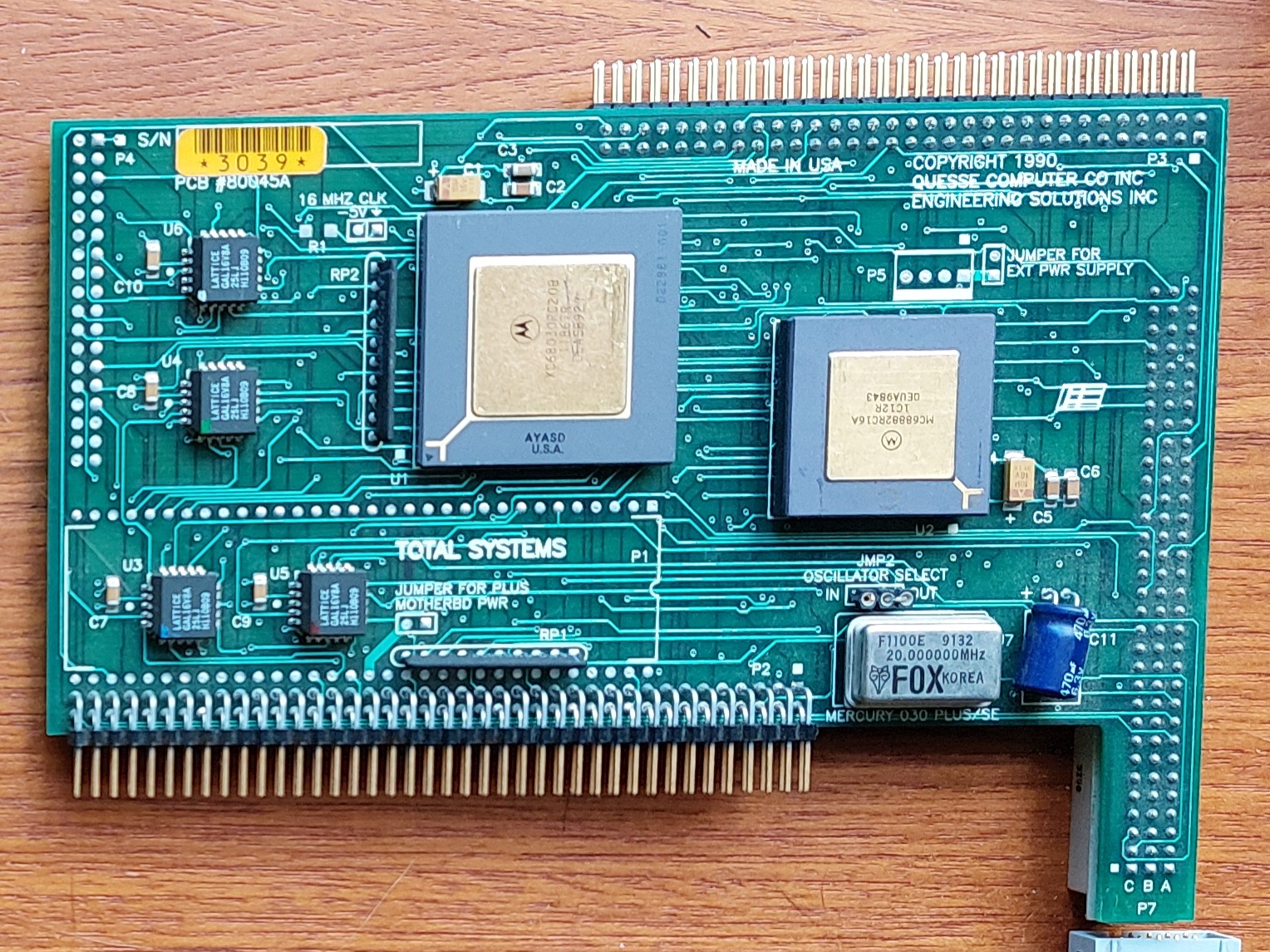
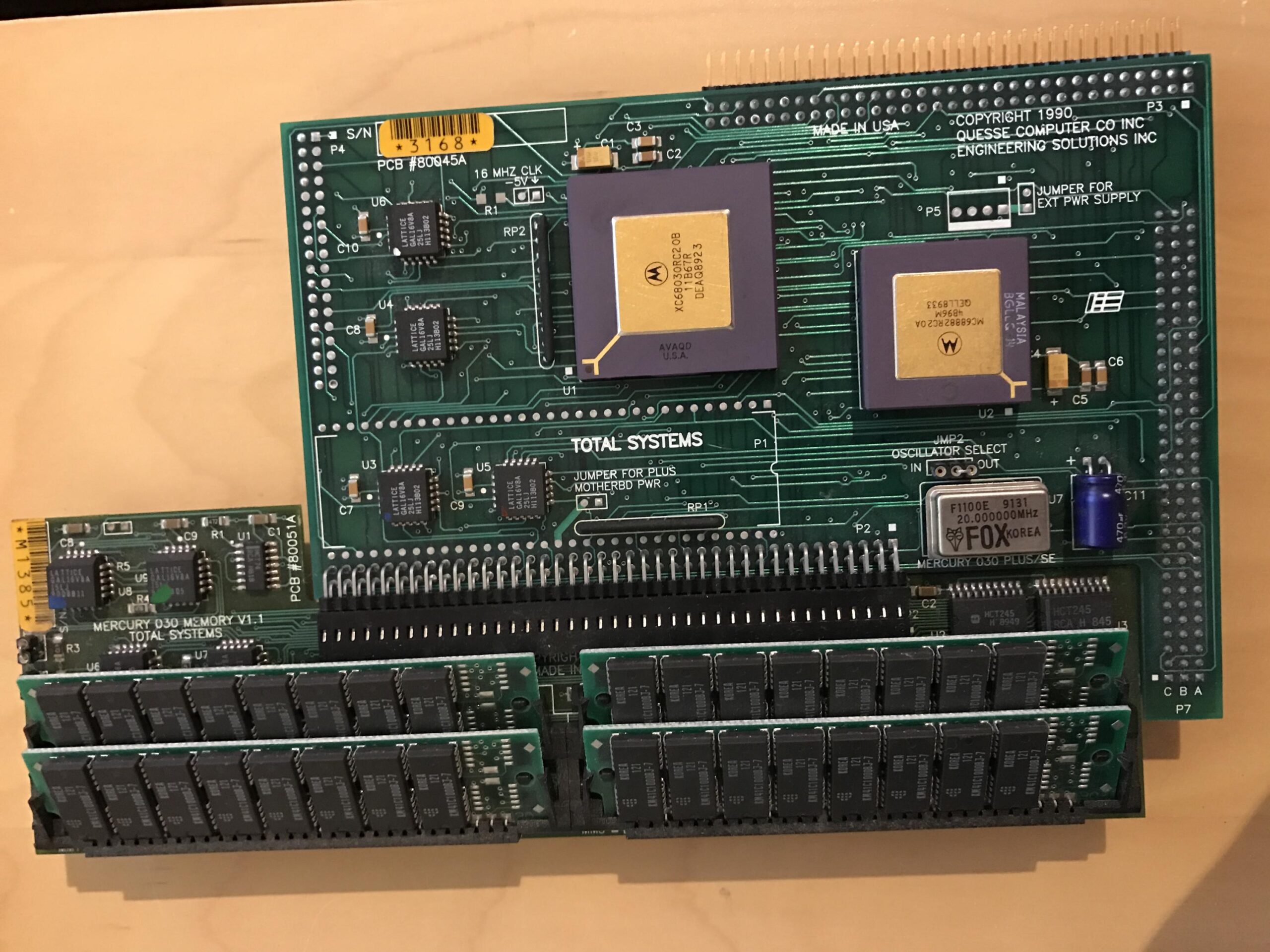
TSI Mercury 030: 128K, 512K, Plus, SE (16, opt FPU)
Sold by Total Systems Integration, designed by Quesse Computer Co Inc, and Engineering Solutions Inc.
“This well-balanced accelerator card for the Plus and earlier Macintoshes is fast with 32-bit RAM module for even greater speed, and even faster with the SCSI module added. The modular design keep costs under your control letting you add power when you decide you need it. Free VIRTUAL™, free fan and uprated power supply fa reliability included.” MW 1991.11 (photo)
PDS slot, Optional Extended Video
- Drivers: GEMStart Universal 7.1, Connectix Compact Virtual
- Reviews: MW 1990.08, MW 1992.06
- Ad: MW 1991.11 (photo), brochure
- Books: Macintosh Do It Yourself Upgrade Book 1992 p.131
- Discussions: 68kMLA zigzagjoe

TSI Voyager: II, IIx (50, opt FPU)
- Drivers: Connectix Compact Virtual
- Review: Byte 1993.02
- Ad: brochure, MU 1990.10 (possible photo)
68040 Accelerators
The last of the 68k accelerators for Macintosh systems, due to architecture differences with 68k chips there are no accelerators for the Macintosh that use the 68060 CPU (there is no 68050 CPU).
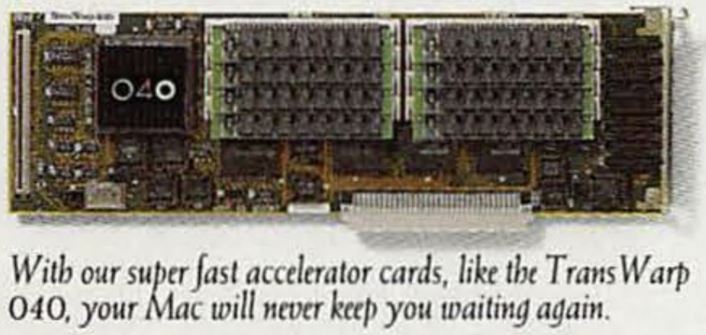
AE TransWarp 040: II, IIcx, IIsi, IIci, IIfx (25, 33, 40MHz, FPU, opt 128K cache)
by Applied Engineering, P.O. Box 5100 Carrolton, TX 75011 (source Byte 1992.02, TIL03354), founder Dan Pote, fan site
Driver
Available at 3 speeds, the Transwarp 6425, Transwarp 6433 and the Transwarp 6440
Ad: brochure (ebay), MW 1992-06 (photo)






DayStar Digital Quad 040: Centris and Quadra (40MHz, 128k cache)
by Daystar Digital, Atlanta Highway, Flowery Beach, GA (TIL03190)
Not on the cached Daystar site, or in their 1995 catalog. Also sold as the Image 040 when bundled with a DSP daughter card
“Fastest imaging upgrade available. The Image 040 adds twin DSPs to Quad 040 power to accelerate over 20 Photoshop functions up to 300% faster than an 840ay, Includes Kudo Image Browser, Paint Alchemy, and Kodak Photo CD Access & Sampler.” MacConnection 1994
Ads: Daystar July 1994 Catalog, DayStar Digital Product Reference Notebook on CD-ROM (Macintosh version 1.1, 1994), MacConnection 1994 (photos)
DayStar Digital Turbo 040: II, IIx, IIcx*, IIsi, IIci, IIvi, IIvx, SE/30, Performa 600 (33, 40MHz, 128k cache)
by Daystar Digital, Atlanta Highway, Flowery Beach, GA (TIL03190)
- Adapter required for SE/30, II, IIx, IIcx*, and IIsi. None needed for IIci, IIvx, IIvi and Performa 600
- Supports Quadra compatible software and hardware
- Supports virtual memory
“The Turbo 040 is the best accelerator family for the Mac SE/30 and the Mac II family” (MU1994.03). It can increase performance from 200-600% and is guaranteed compatible with all standard Quadra-compatible software and Mac Il-compatible hardware—even at full speed, Just plug it in! Turbo 040i provides accelerator power without the FPU for users who don’t need complex math acceleration. The FastCache Turbo 128K SRAM cache makes the Turbo 040 up to 70% faster” MacConnection 1994
- Reviews: MW 1992.06
- Ads: Daystar July 1994 Catalog, DayStar Digital Product Reference Notebook on CD-ROM (Macintosh version 1.1, 1994), Daystar Performance Guide 1995 (photo), MacConnection 1994 (photos)
- System 7.5: Daystar Turbo Card Compatibility (TA33358)
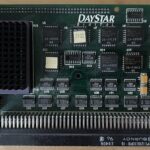
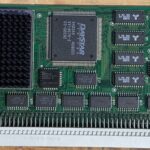
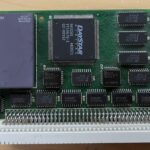
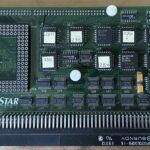
DayStar Digital Value
by Daystar Digital, Atlanta Highway, Flowery Beach, GA (TIL03190)
DiiMO cache 040 (50MHz, FPU, 128K Static RAM cache, slot free)
by DiiMO Technologies Inc (formally Teknovation Inc). 2540 Brockton Drive, Suite 110, Austin, Texas 78758 (source MK V07 N22)
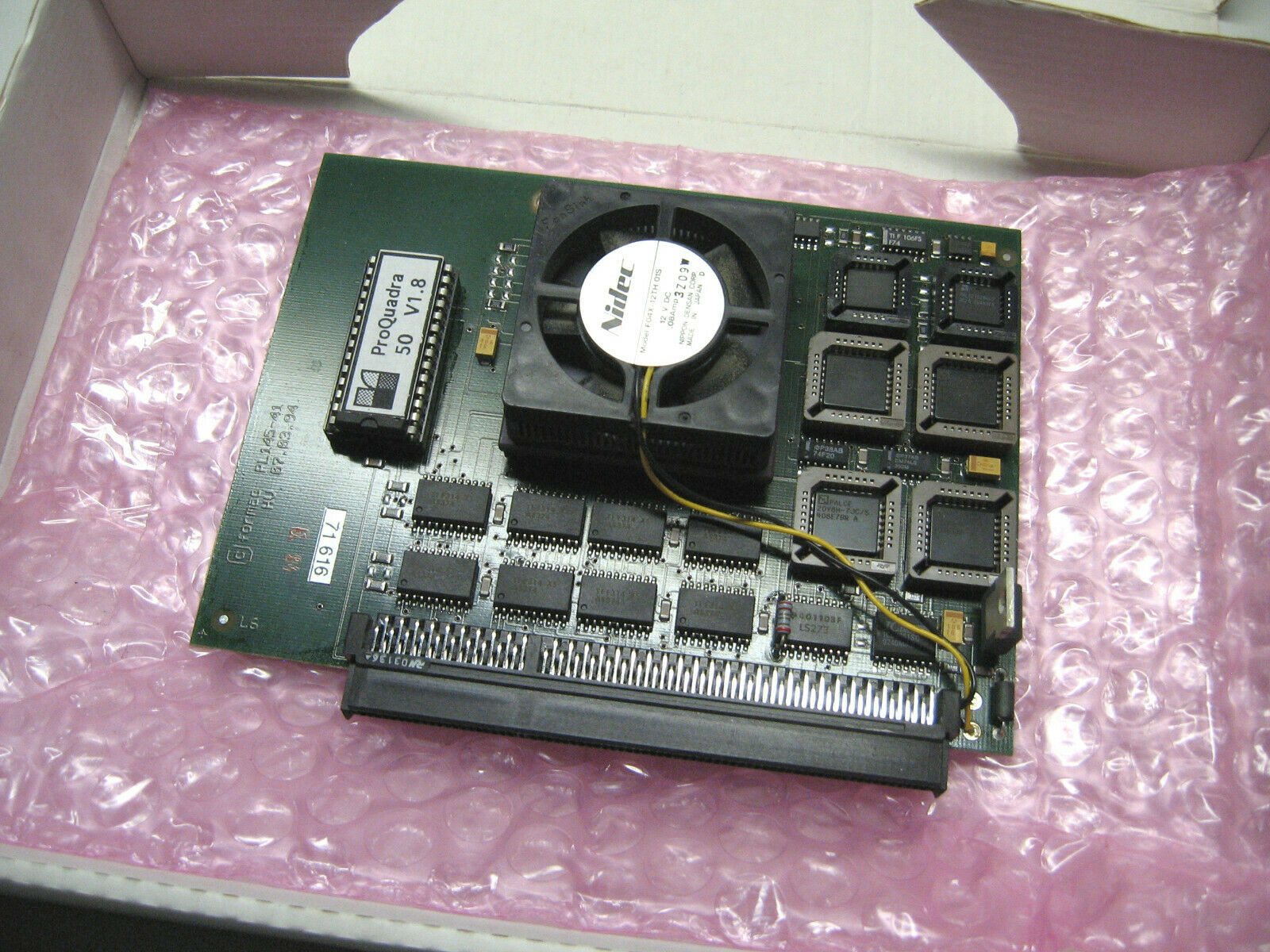
Formac ProQuadra: Centris 610, 660av, 650, Quadra 800, 900, 950 (40, 50MHz, FPU, 8k cache)
Website, drivers
Ad: Icônes 1993.12, MacWelt 1993.10 (photo)
Discussion: Nathan_A at 68kmla (photos)
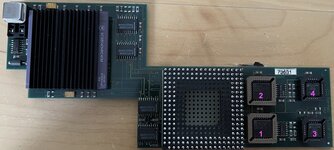
Formac 475 : LC 475 (40, 50MHz, FPU, 8k cache)
Discussion: 68kmla (photos), tinkerdifferent (photos), google groups (german)
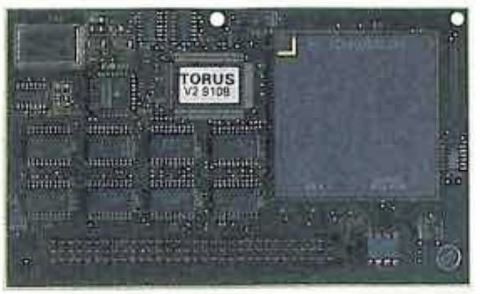
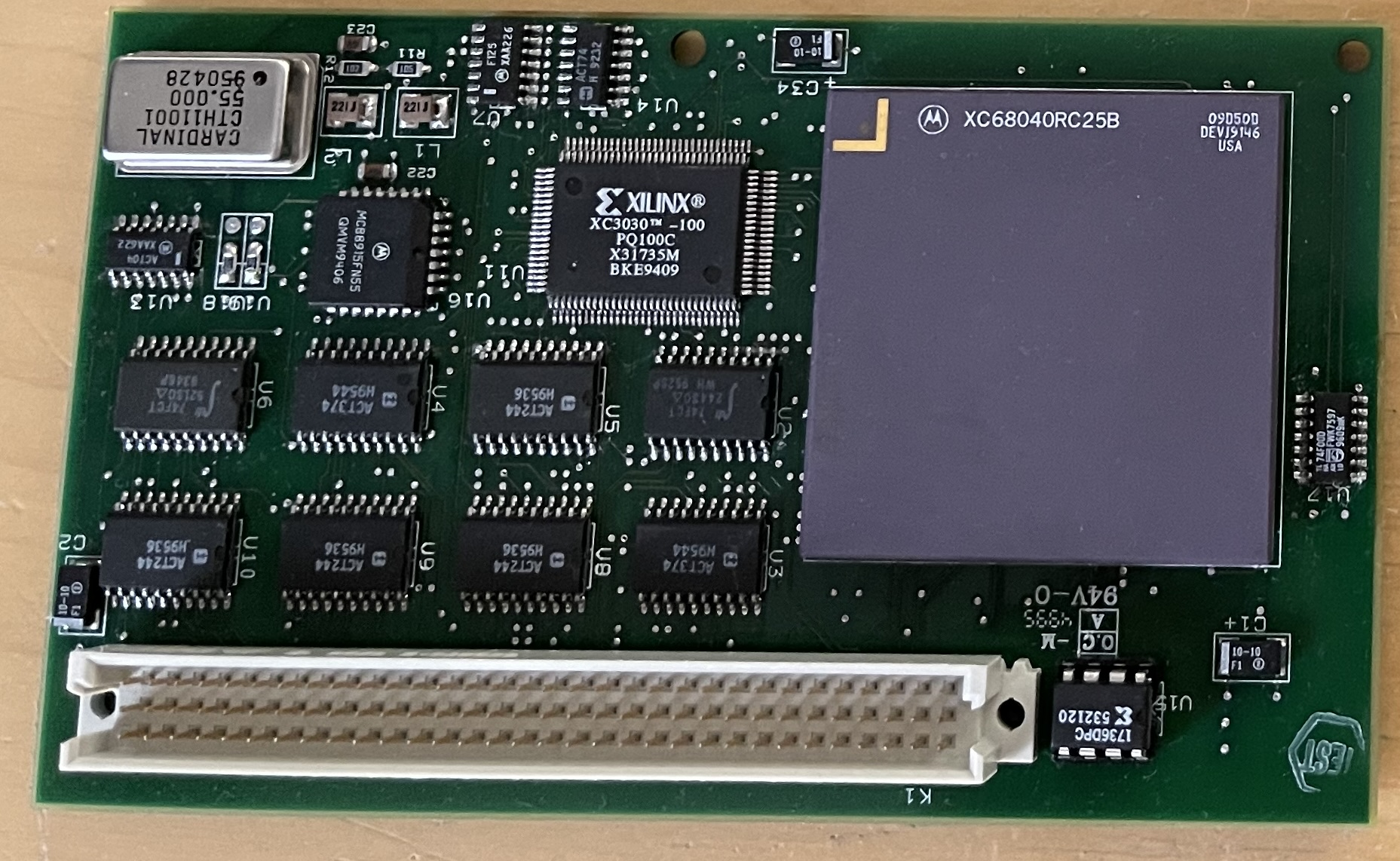
Fusion Data Systems TokaMac LC (25, FPU)
Also sold by Total Systems as the Magellan 040 (MW 1993.06), and as the Sonnet Presto (below)
PDS slot
Review: Mac Welt 1992.10 (photo), Byte 1993.02 (Ad)
Bolle from the 68kMLA site site sometimes sells clones of these cards, and has posted the design information so you can create your own.
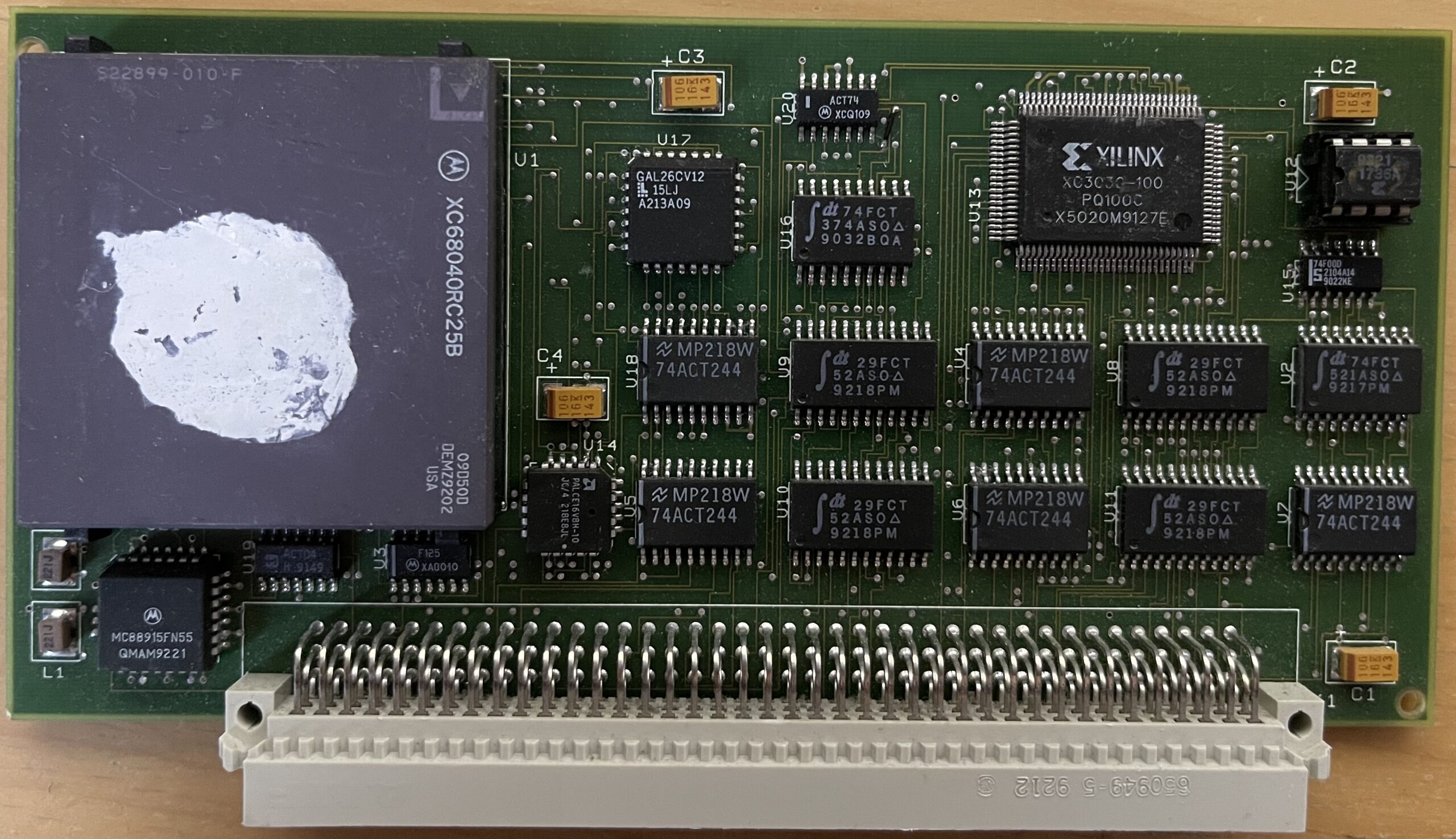
Fusion Data Systems TokaMac ci (25, FPU)
Review: MU 1992.05 (Ad)

Impulse Technology, Inc Performance/040: II, IIx, IIcx, IIci, IIfx, IIsi (25, 33 MHz, 128MB)
by Impulse Technology, Cumming, GA (TIL11592) previously know as IIR Inc.
Review: Byte 1993.02, MU 1992.08, MU Buying Guide 1993
MicroMac Carrera040: IIci, IIsi, IIcx or IIx (33, 40, 45 MHz, 128kb cache)
by MicroMac Technology, Inc. Aliso Viejo, CA (TIL16630)
Website: micromac.com: 33,40, and 45, Carrera040 v1.8 (latest software with sound fix), manual v1.1
This appears to be the same board as the Mobius 040 Speedster (below) and may be the same as the Sonnet 040 Speedster (below). The Carrera040 driver may work for all 3.
“MicroMac Technology has incorporated accelerators originally developed by such firms as DiiMO, Dove, Harris, and Mobius into its product line.” MU 1997.07
“IRVINE, Calif.–(BUSINESS WIRE)–June 16, 1995–Although Mobius Corp. announced that it will be closing its doors this month, Mobius customers will still have technical support available through Sonnet Technologies.”
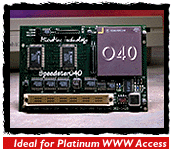
MicroMac Speedster: LC, LCII (25, FPU)
by MicroMac Technology, Inc. Aliso Viejo, CA (TIL16630)
Website: micromac.com, drivers
“MicroMac Technology has incorporated accelerators originally developed by such firms as DiiMO, Dove, Harris, and Mobius into its product line.” MU 1997.07

MicroMac SpeedDoubler: Quadra 700, 900 (50MHz, FPU, 128K cache)
by MicroMac Technology, Inc. Aliso Viejo, CA (TIL16630)
Website: micromac.com, drivers
“MicroMac Technology has incorporated accelerators originally developed by such firms as DiiMO, Dove, Harris, and Mobius into its product line.” MU 1997.07
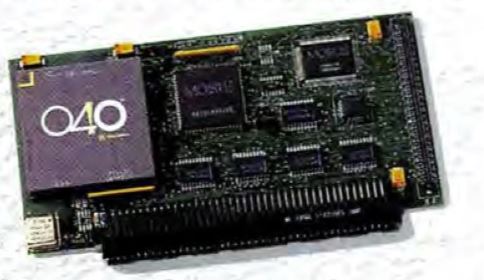
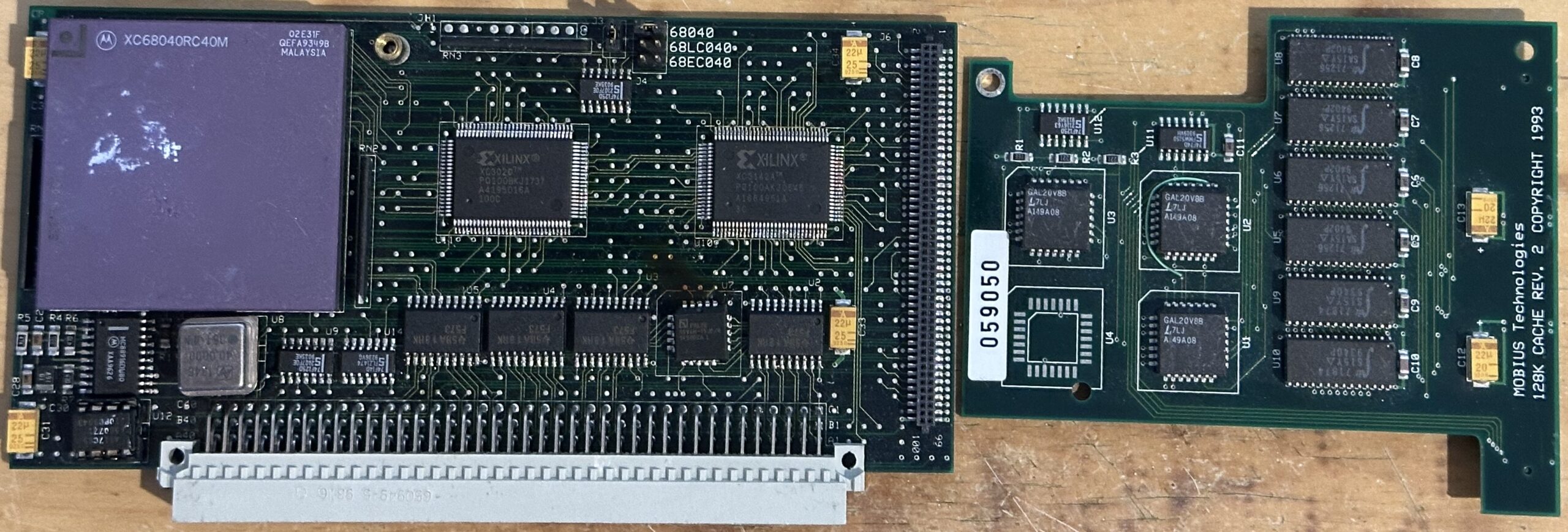
Mobius 040 Speedster: IIx, IIci, IIsi, IIcx (25, 33, 40MHz, 128K cache)
by Mobius Technologies Inc., Emeryville CA (TIL04628)
This appears to be the same board as the MicroMac Carrera040 (above) and may be the same as the Sonnet 040 Presto (below)
“IRVINE, Calif.–(BUSINESS WIRE)–June 16, 1995–Although Mobius Corp. announced that it will be closing its doors this month, Mobius customers will still have technical support available through Sonnet Technologies.”
“MicroMac Technology has incorporated accelerators originally developed by such firms as DiiMO, Dove, Harris, and Mobius into its product line.” MU 1997.07
- Driver (the MicroMac Carrera040 v1.8 may also work)
- Reviews: MW 1995.02, MK V07 N24
- Ads: MU 1994.01 (photo), MW 1995.01 (photo), MW 1995.03 (photo)
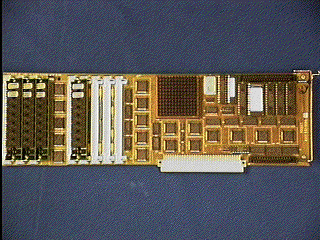
Radius Rocket: II, IIcx, IIci (25, 33MHz, FPU)
Radius.com: SCSI2Booster, brochure
NuBus slot
- 25i (model 0244): 25 MHz, photos, Q&A, manual
- 33 (model 0330): 33 MHz, photos, Q&A, manual
The two models appear identical in the photos, with the difference being the CPU speed.
Printing and Plotting with Radius Rocket Accelerator (TA41687)
LaserWriter IINT: Not Recognized by Radius Accelerator (TA39823)
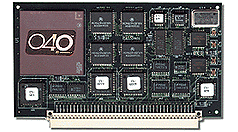
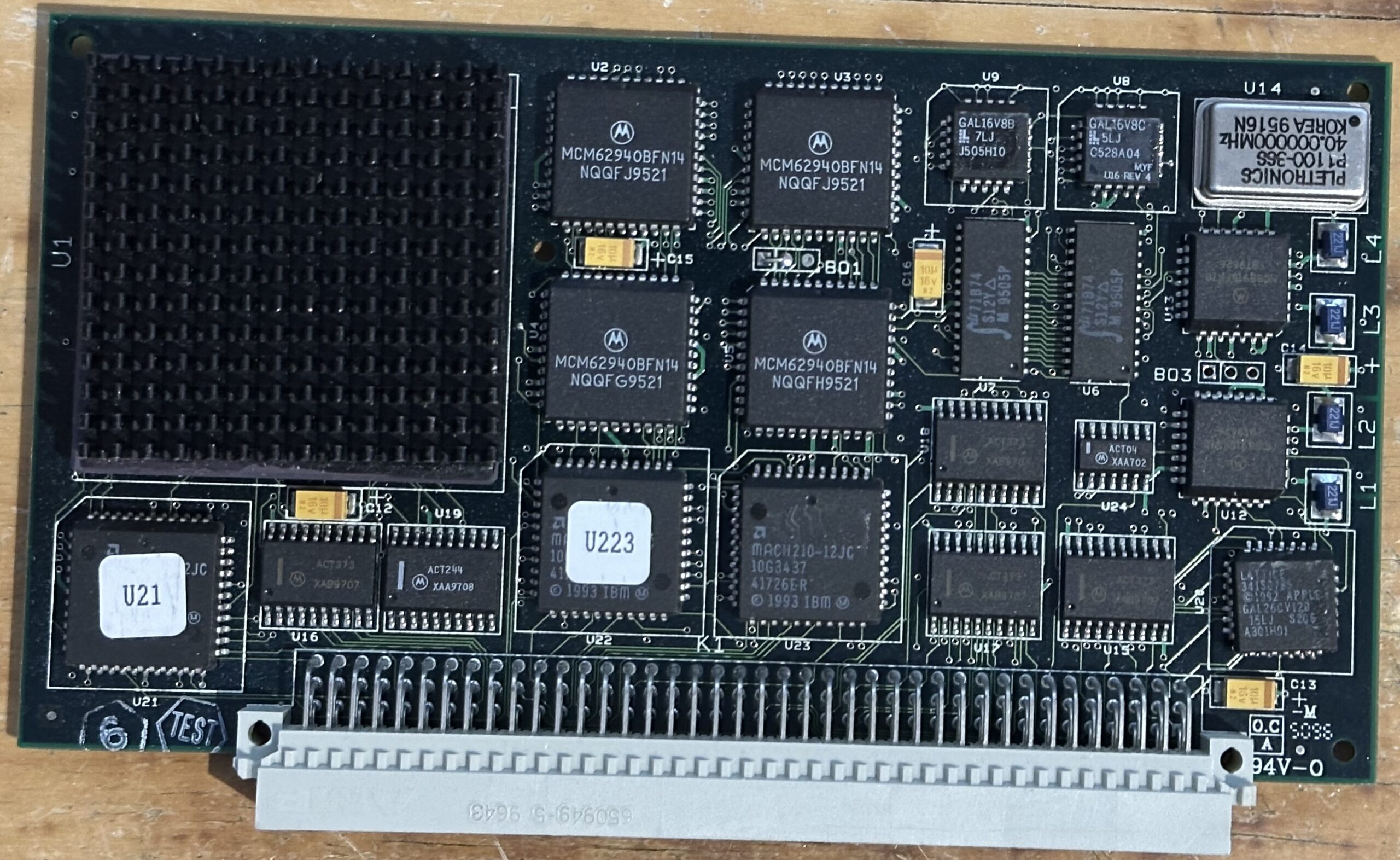
Sonnet Presto 040: Mac IIvi, IIcx1,2, IIsi1, IIci, IIvx and Performa 600 (40MHz, FPU, 128k cache)
by Sonnet Technologies, Inc. Irvine CA (TA48208, KB009878, TIL09878)
Website: Sonnettech.com, software v3.1 (the MicroMac Carrera040 v1.8 may also work)
1Adapter required for Mac IIcx and IIsi. 2Even with a Presto card, Mac OS 8.1 will not run on Mac IIcx.
This appears to be the same board as the Mobius 040 Speedster (above) that was renamed when Sonnet Technologies bought Mobius, and then later renamed again to the MicroMac Carrera040 (above) when Sonnet Technologies closed.
“IRVINE, Calif.–(BUSINESS WIRE)–June 16, 1995–Although Mobius Corp. announced that it will be closing its doors this month, Mobius customers will still have technical support available through Sonnet Technologies.”
“MicroMac Technology has incorporated accelerators originally developed by such firms as DiiMO, Dove, Harris, and Mobius into its product line.” MU 1997.07
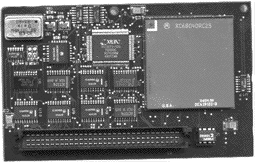
Sonnet Presto: Mac LC, LC II, LC III, LC III+, LC 520, LC 550; Performa 250, 275, 400, 405, 410, 430, 450, 460, 466, 467, 520, 550, 560; and Color Classic, Color Classic II (33MHz, FPU, 128k cache)
by Sonnet Technologies, Inc. Irvine CA (TA48208, KB009878, TIL09878), also sold as the Fusion Data Systems TokaMac LC (above)
Website: Sonnettech.com
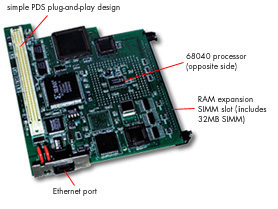
Sonnet Presto Plus: Mac LC, LC II, LC III, LC III+, LC 520, LC 550; Performa 250, 275, 400, 405, 410, 430, 450, 460, 466, 467, 520, 550, 560; and Color Classic, Color Classic II (33MHz, FPU, 128k cache)
by Sonnet Technologies, Inc. Irvine CA (TA48208, KB009878, TIL09878)
Website: Sonnettech.com, software v3.1 (the MicroMac Carrera040 v1.8 may also work)
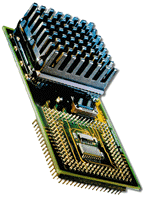
Sonnet QuadDoubler: Centris 610, 650 & 660AV; Quadra 610, 660AV, 700 & 900; and Workgroup Server 60/20 & 60/25 (50MHz, FPU, 128k cache)
by Sonnet Technologies, Inc. Irvine CA (TA48208, KB009878, TIL09878)
Website: Sonnettech.com
Plug the Sonnet QuadDoubler into a Quadra or Centris and double your computer’s speed. The QuadDoubler includes a Floating Point Unit for super-fast rendering or calculations and is Mac OS 8.1 compatible

TechWorks LC (25MHz, FPU)
by TechWorks (Technology Works), Austin, TX (TA45958, KB007295, TIL07295)
PDS slot
- Review: MW 93.06.14 V7 N24 (price)
- Ad: MW 1992.12

TechWorks Nubus 040: II, IIcx, IIsi, IIci (33MHz, FPU)
by TechWorks (Technology Works), Austin, TX (TA45958, KB007295, TIL07295)
NuBus slot
Ad: MW 1992.12

Total Systems Magellan (25MHz, FPU)
by Total Systems Integration, a relabeled version of the Fusion Data Systems TokaMac (above, MW 1992.06)
Review: MW 1992.06, MW 1993.06
Ad: Brochure
References and Timeline
- MacWorld 1990.02: Is Your Mac Obsolete: 020, 030 accelerators, specs and benchmarks
- MacWorld 1990.08: Full Speed Ahead: photos of several 020 and 030 Accelerators, Specs, and benchmarks
- MacUser 1990.08: Chasing the IIfx: Accelerators: 000, 020, 030 specs, benchmarks and some photos
- MacWorld 1992.06: Need for Speed, benchmarks and specs for 030 and 040 accelerators
- MacWorld 1993.06: Benchmarks and specs for 030 and 040 accelerators: Expanding a Compact Mac, Getting More from a Mac II, Building the Ultimate Mac: Maxing out your IIfx or Quadra, Buyers’ Guide to Upgrades1988.03 MacUser: Pedal to the Medal, 000, 020 accelerators, specs, benchmarks and photos
- 1990.08 MacUser: Chasing the IIfx: Accelerators: 000, 020, 030 specs, benchmarks and some photos
- 1992.02 Byte: Accelerator, Coprocessor, and Multiprocessor Boards, list of company names and addresses
- MacWorld April 1984, A new world, reviews the 128k Macintosh, and Polishing the Mac, and interview with Bill Gates.
- MacWorld May/June 1984, Fat Mac, the wait for 256k chips to upgrade 128k macs to 512k macs
- MacWorld July/August 1984, The Mac Lines Up with Mainframes, and the Mac Connects, Macintosh terminal server
- MacWorld November 1984, The Macintosh Deluxe, reviews the 512k Macintosh and
- MacWorld December 1984, Shifting in to Overdrive, reviews the very first hard drives for the Macintosh. Non-SCSI, they connect to the printer or modem port instead.
- Book 1985 by Arthur Naiman: MacBook : the indispensable guide to Macintosh hardware and software
- MacWorld August 1985, In search of a better mouse
- MacUser October 1985, File Servers: The Macintosh office’s missing link
- MacUser November 1985, Between a Rock and a Hard Disk. and Delivering a Fat Mac (how to modify a 128k mac into a 512k mac)
- Book 1986 by Gene William: Chilton’s guide to Macintosh repair and maintenance
- MacWorld February 1986, Megabytes and Beyond, reviews the Beck-Teck MacMegabytes, Levco MonsterMac, MacMemory TheMax, MassTech FastMac, MicroCoversion 1 Meg Upgrade
- MacWorld August 1986, New Ways to a Faster Mac, reviews the General Computer Company Hyperdrive 2000, Levco Prodigy 4, Novy Floating Point Accelerator, Quesse Maccelerator
- MacWorld September 1986, Enter the SCSI drives, reviews of some of the very first SCSI drives for the Mac
- Book 1987 by Arthur Naiman: The Macintosh Bible
- BYTE August 1987, The Macintosh SE, mentions the accelerators and questions why the SE doesn’t have 68020 CPU
- MacWorld September 1987, Beefing up the SE, reviews the General Computer Company HyperCharger 020, Leveco Prodigy SE, MacPeak Systems Orion, Radius Accelerator
- 1987.11 MacWorld: Systems and Memory, 000, 020 accelerators and memory expansion.
- 1988.03 MacUser: Pedal to the Medal, 000, 020 accelerators, specs, benchmarks and photos
- 1988.10 MacWeek V02.42: Power boosters Accelerating the Mac
- 1989 Apple Engineering Scientific Solutions Guide Winter 1989: Accelerators/Coprocessors/Add-on Boards
- 1990.02 MacWorld: Is Your Mac Obsolete: 020, 030 accelerators, specs and benchmarks
- 1990.08 MacWorld: Full Speed Ahead: 020 and 030 accelerators, specs, benchmarks and some photos
- 1990.08 MacUse : Chasing the IIfx: Accelerators: 000, 020, 030 specs, benchmarks and some photos
- ComputerWorld December 1987, list of IBM compatible and Macintosh Accelerators
- Book 1988 by Arthur Naiman: The Macintosh Bible (second edition)
- MacWorld Feb 1988, New Life for an Old Mac
- MacWorld March 1988, Pedal to the Metal, reviews the Mac Plus control, Mac SE control, Mac 20, Turbo Max, Turbo Se, Accelerator Plus, Mac II control, Hypercharger 020, Orion SE, Accelerator SE, Mac20MX Prodigy SE
- MacWorld August 1988: Staying Alive, an optical mouse for the Plus?
- BYTE December 1988, Mac Expansion, reviews of Aox inc DoubleTime, Dove’s MaraThon 020, E-Machines DoubleColor, Mecury Computer System’s MC3200NU, Network Specialties Inc Jump 020, Novy Systems MAC20MX, Radius Inc Accelerator 16 for the Mac Plus, and for the SE, and the Accelerator 25.
- MacWorld September 1988, Short Takes, review of the TSI-020MX (licensed from Novy Systems) and Radius Accelerator 25
- Book 1989 Sharon Zardetto Aker: The Macintosh Bible (second edition, first update)
- MacUser February 1989, Maximum G-Force, review of numerous accelerators for the SE and Plus
- BYTE November 1989, Upward Mobility
- Book 1989 Bob Vitus’s: Doctor Macintosh (and 1992), and other reference books for system software and applications.
- MacWorld February 1990, Is your mac obsolete?
- Book 1990 by Larry Pina: Macintosh Repair and Upgrade Secrets
- MacWorld August 1990, Full Speed Ahead
- MacUser August 1990, Chasing the IIfx Accelerators
- Book 1991 by Arthur Naiman and Sharon Zardetto Aker: The Macintosh Bible (third edition)
- Book 1991 by Larry Pina: Macintosh II Repair and Secrets
- Book 1991 by Bob Brant: Upgrade Your Macintosh and Save a Bundle
- MacUser June 1991, IIci Cache Cards
- MacWorld July 1991, the Accelerated Course, accelerator cards
- MacWorld November 1991, new life for old roms, info about the creation of Mode32 for system 7.
- Book 1991, MacWorld’s Complete Mac Handbook, list of accelerator manufacturers and their products
- Book 1992 by Arthur Naiman: The Macintosh Bible (forth edition)
- Book 1992 by Larry Pina: Dead Mac Scrolls
- BYTE February 1992, List of companies that make Accelerator, Coprocessor and Multiprocessor Boards
- MacWorld June 1992, The need for speed
- MacUser June 1992, Blasting Off: CPU Accelerators
- MacUser August 1992, MiniFinders, mentions limited SCSI throughput for Novy Accelerators.
- MacUser September 1992, New Life for Old Macs
- MacUser October 1992, Repairs and Upgrades for the Mac IIfx
- Mac Welt October 1992,
- MacUser November 1992, Fast 68040 Accelerators, Upgrading the Mac SE
- MacUser December 1992, Upgrading the Mac IIci
- Book 1992 by Garry Howard: the Macintosh Do It Yourself Upgrade Book basic information on several accelerators, memory and other upgrades
- Book 1992 by Bob Brant: Build your own Macintosh and Save a Bundle, basic information on several accelerators, memory and other upgrades
- Book 1992 by John Dvorak: Dovorak’s inside track to the Macintosh
- Book 1993 by Larry Pina: Mac classic & SE : repair and upgrade secrets
- MacUser January 1993, Maximum RAM, Upgrading the Mac SE/30 (253)
- MacUser March 1993, Upgrading the Mac LC
- MacUser April 1993, 100 Accelerated Systems
- MacWorld June 1993, Upgrading Your Mac, and Buyers Guide
- Book 1994 by Carla Rose: Turbocharge your Mac
- Book 1995 by Todd Stauffer: Using your Mac
- MacWorld February 1995, Making the move to PowerMac, includes a comment that the 68k accelerator market has “dried up”
- MacWorld UK February 1995, Movin’ on up
- Book 1996 by Clifford Colby and Sharon Zardetto Aker: The Macintosh Bible (sixth edition, I intentionally skipped the fifth edition since it doesn’t seem to have info on accelerators)
- MacAddict 006 February 1997, This Old Mac: Mac Plus, states that Dove, Mobius, NewLife, and Novy Systems are out of business, and provides the urls for MicroMac, Mobius Computers (no mention of their accelerators), and Sonnet Technologies.
- MacAddict 007 March 1997, This Old Mac: SE/30
- MacAddict 008 April 1997, This Old Mac: Mac II
- MacAddict 009 May 1997, This Old Mac: Mac IIci, IIcx, and IIsi
- MacAddict 011 July 1997, This Old Mac: Mac LC, LC II, and LC III
- MacUser July 1997, Never Say Die: Some of the least expensive accelerators available are those from NewLife Systems. Its 68030 accelerators for the Plus, and SE start at around $100 each. An FPU is optional. Although these cards don’t provide any extra RAM slots, they do come with Connectix’s Compact Virtual software, which gives your Mac 16 MB of virtual memory.
- MacAddict 012 August 1997, This Old Mac: LC 475, 500 Series, and 630
- MacAddict 014 October 1997, This Old Mac: Centris and Quadra 610 and 650
- Book 1998 Sharon Zardetto Aker: The Macintosh Bible (seventh edition), other than a mention of compatibility issues, no info on specific cards, this fits with the .
- MacAddict 019 March 1998, Nitro Burning Funny Macs, and This Old Mac: Power Mac 6100
- Book 1998 by Todd Stauffer: Mac Upgrade and Repair Bible
- MacAddict 021 May 1998, This Old Mac: Pumping Up a Powerbook 100
- MacAddict 024 August 1998, Pumping Up a PowerBook 520/540
- MacAddict 027 November 1998, This Old Mac: The All in Ones
- MacAddict 029 January 1999, Anti-Aging Upgrades,
- MacAddict May 1999, This Old Mac online articles (last entry for the page in the wayback machine)
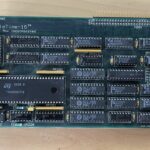
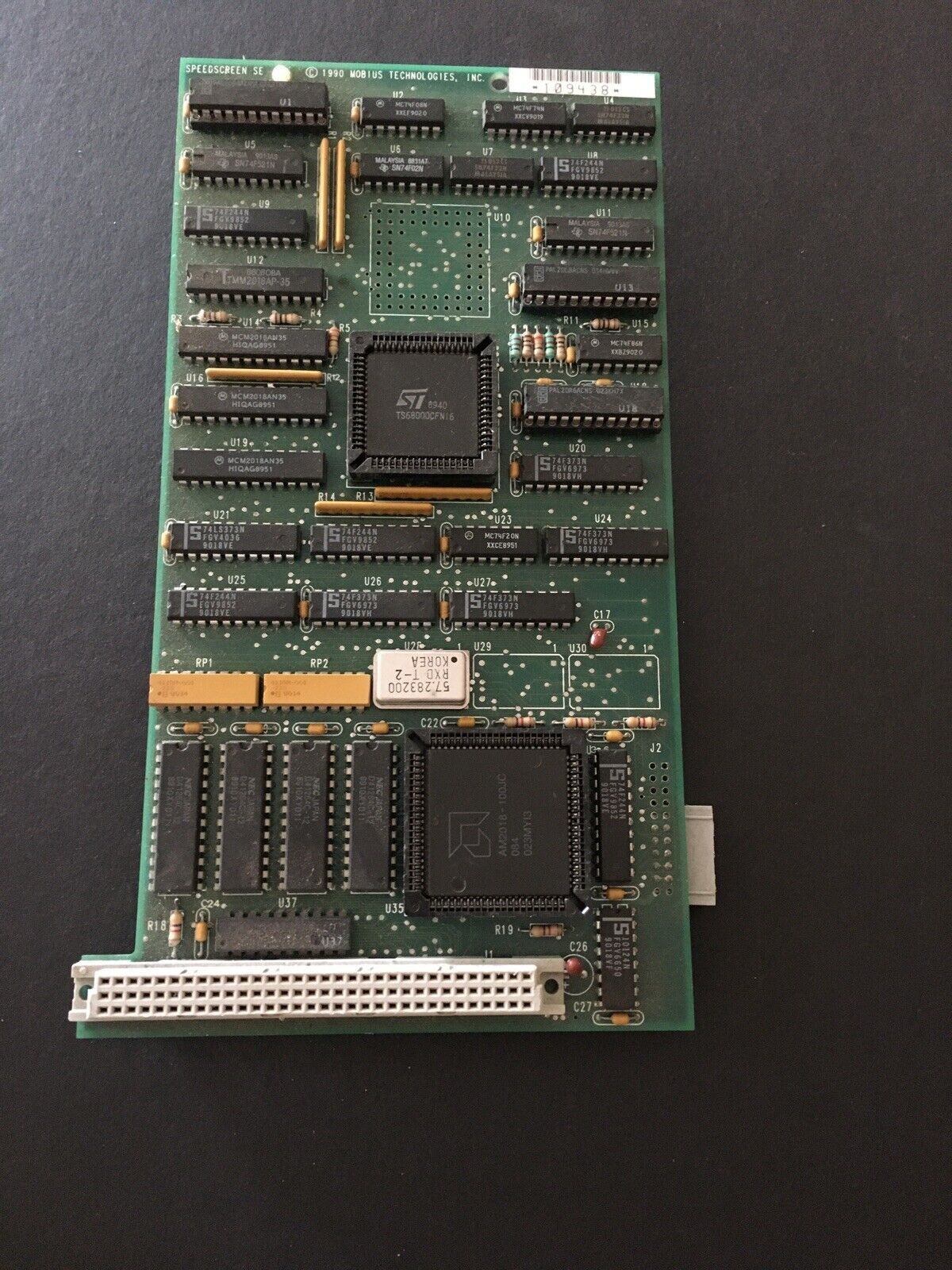
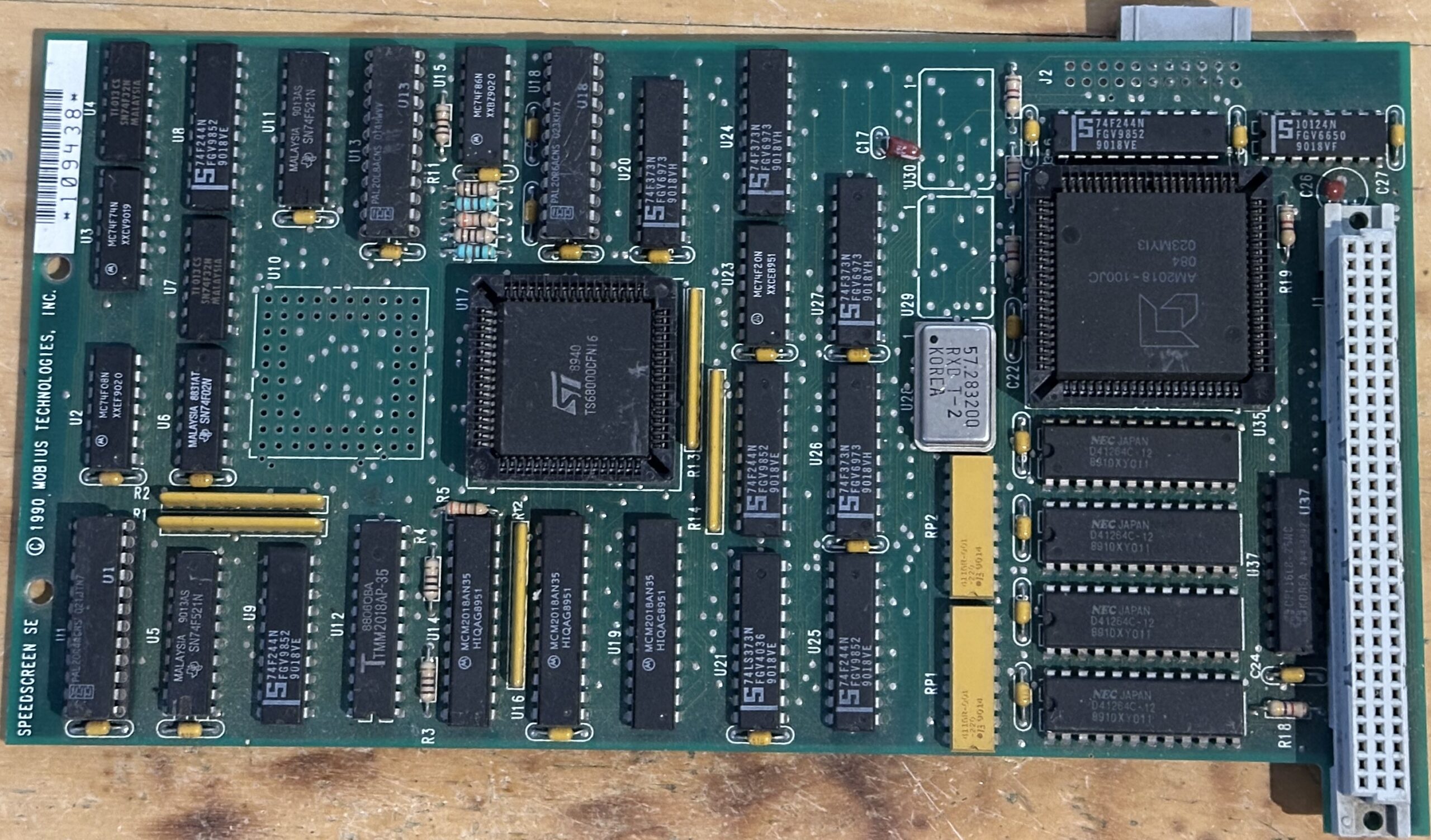
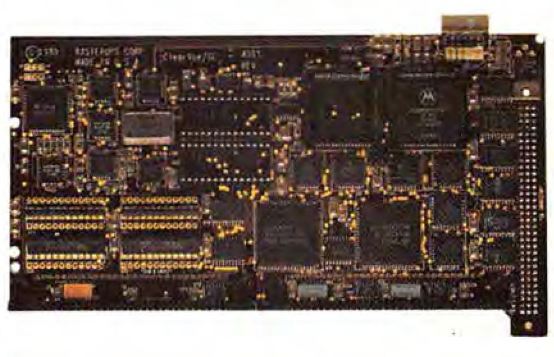
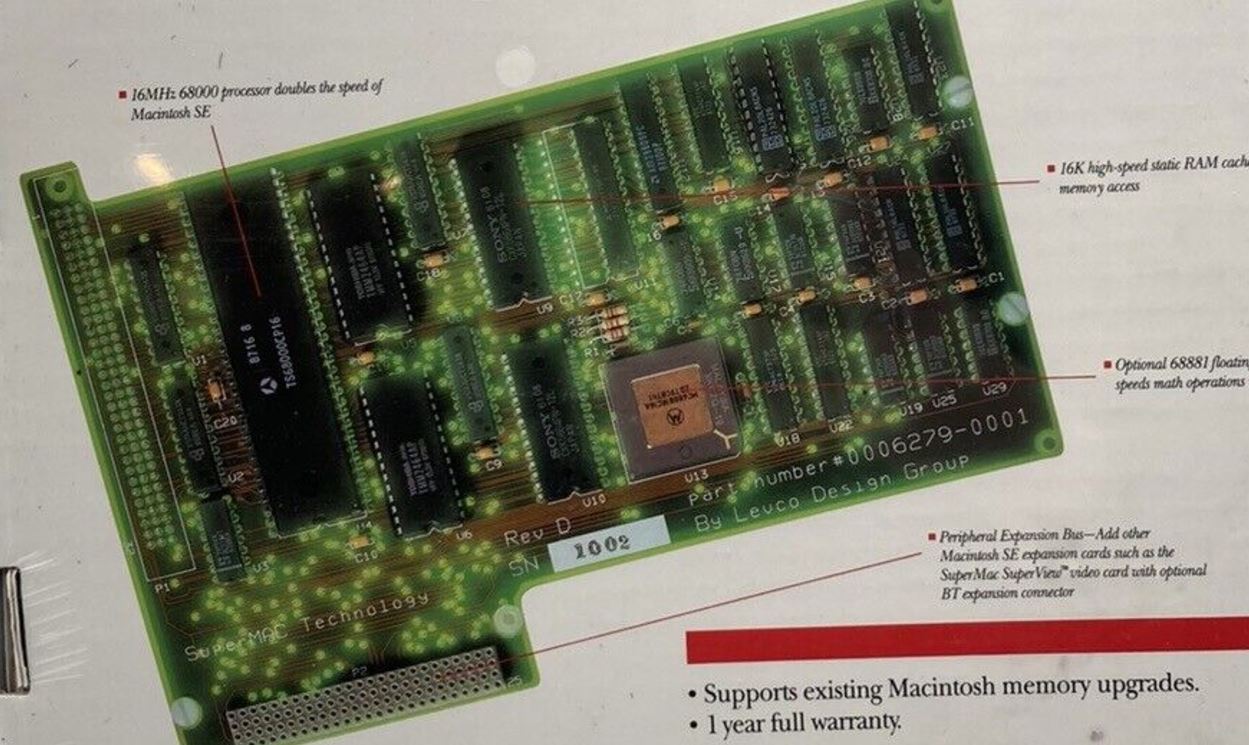
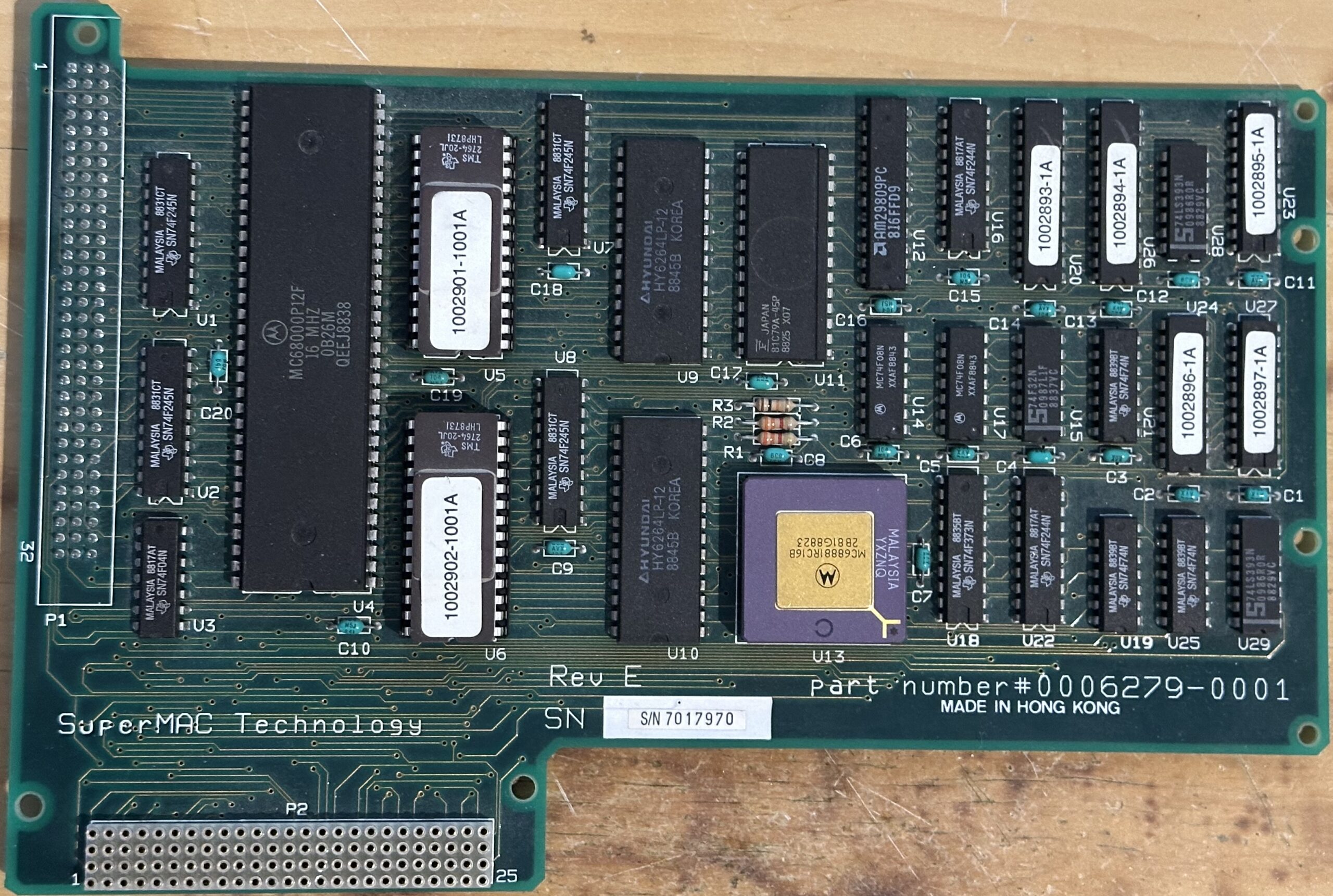
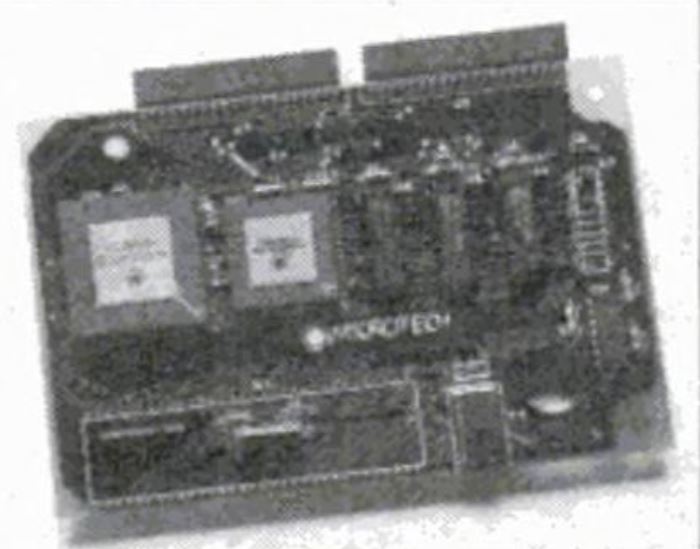
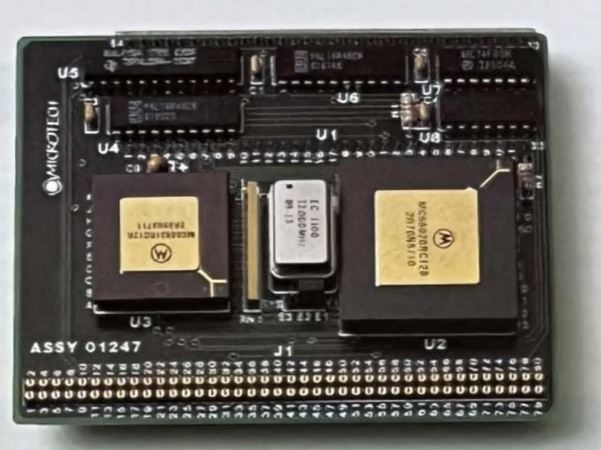
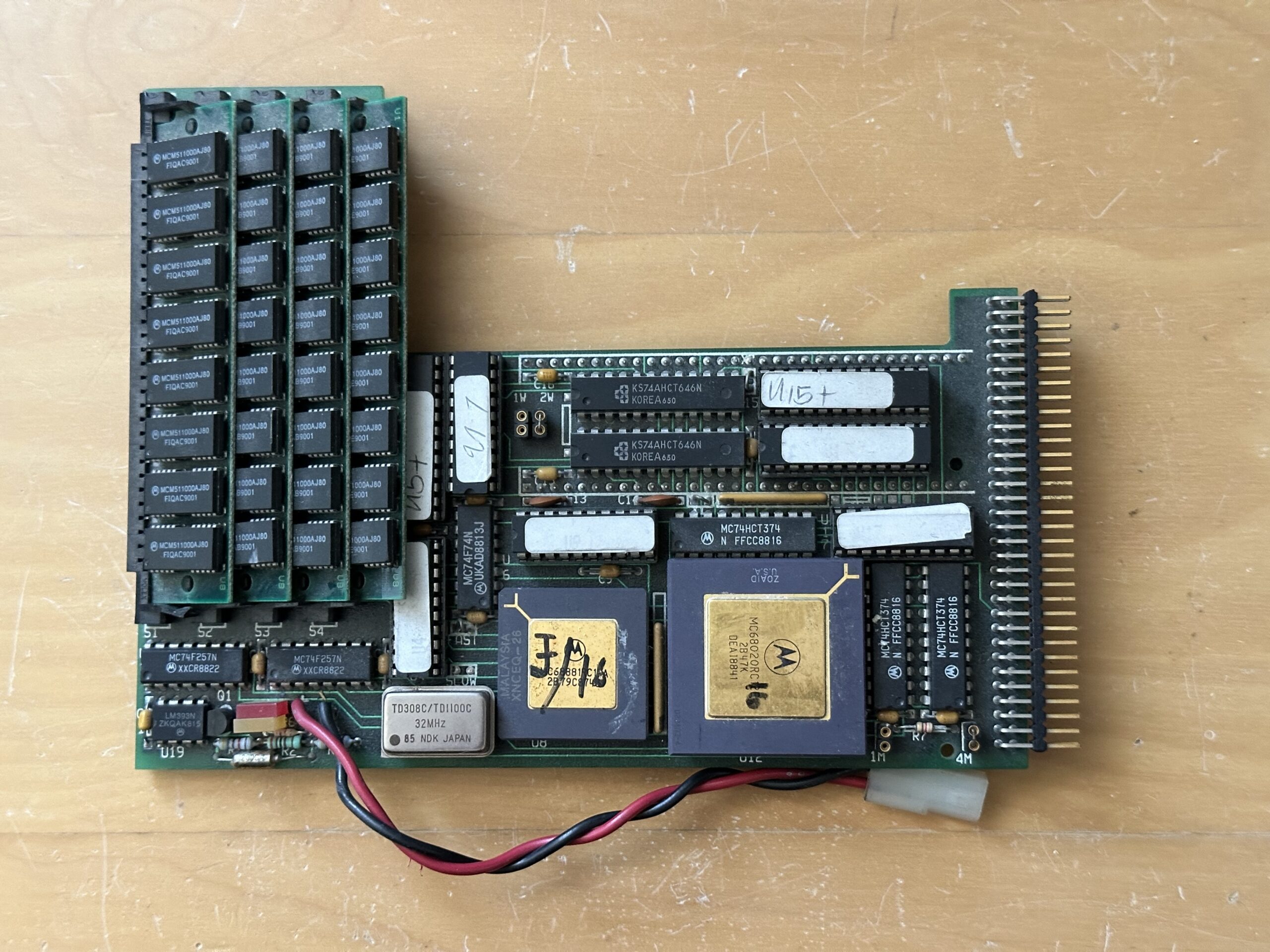
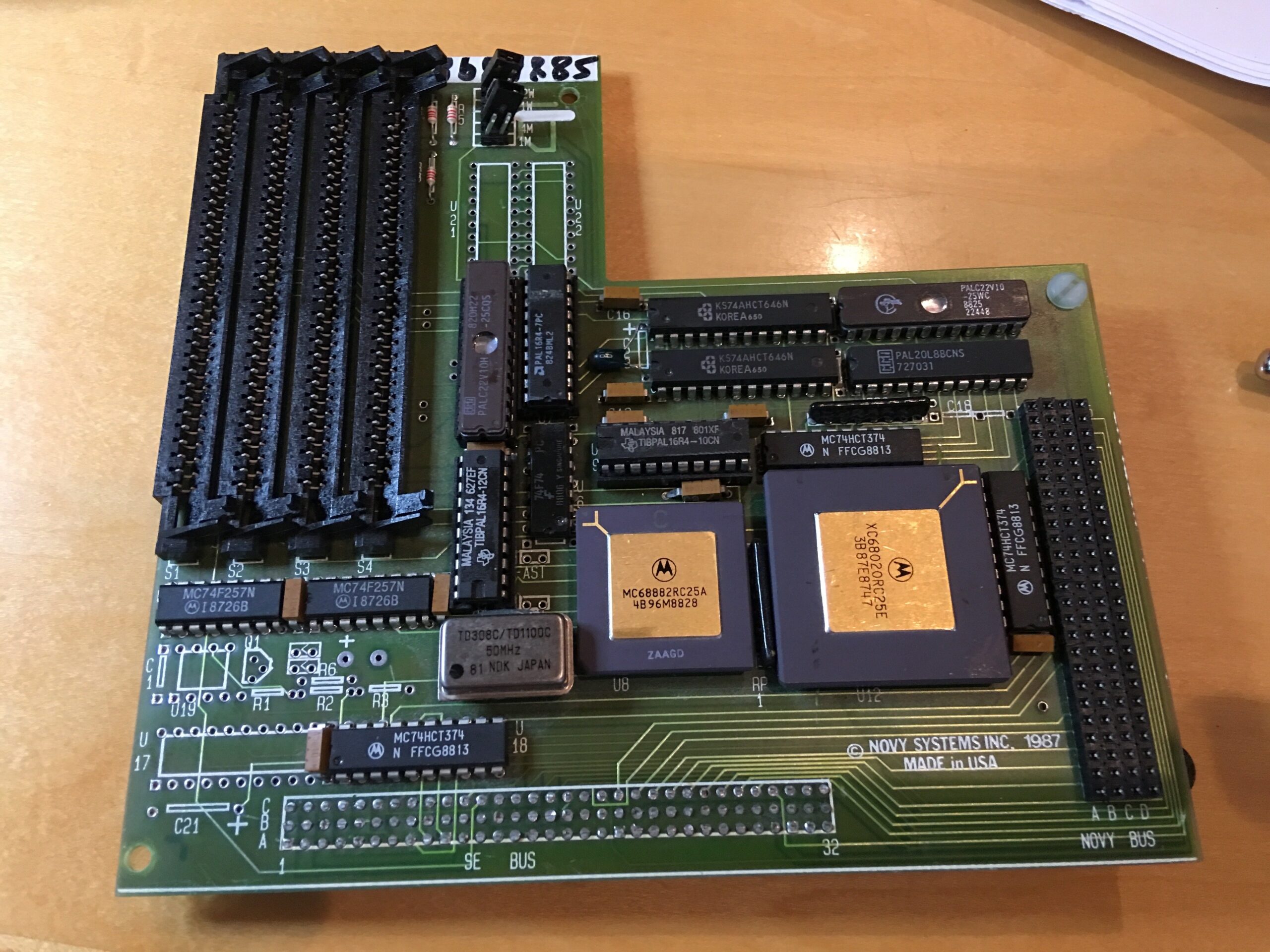
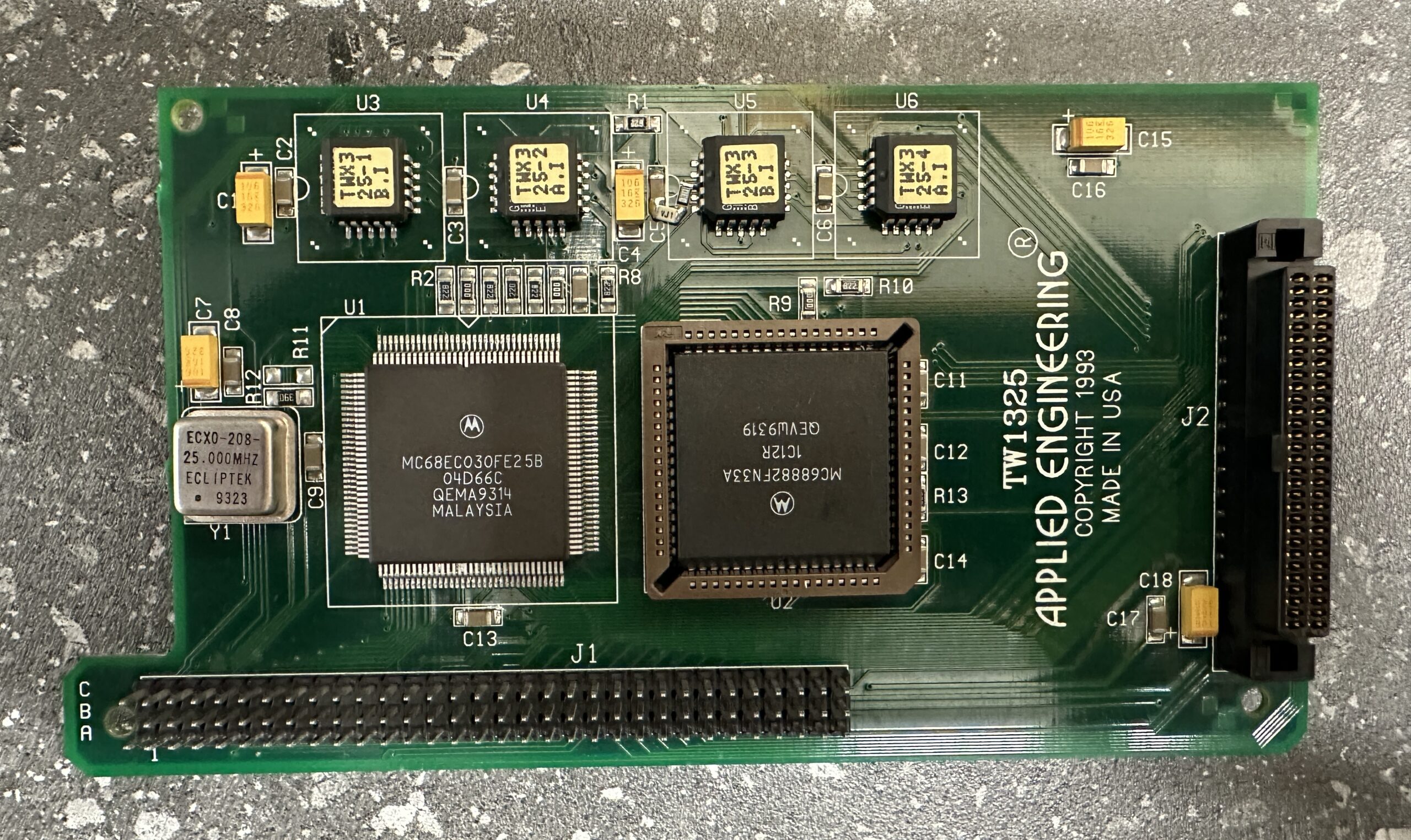
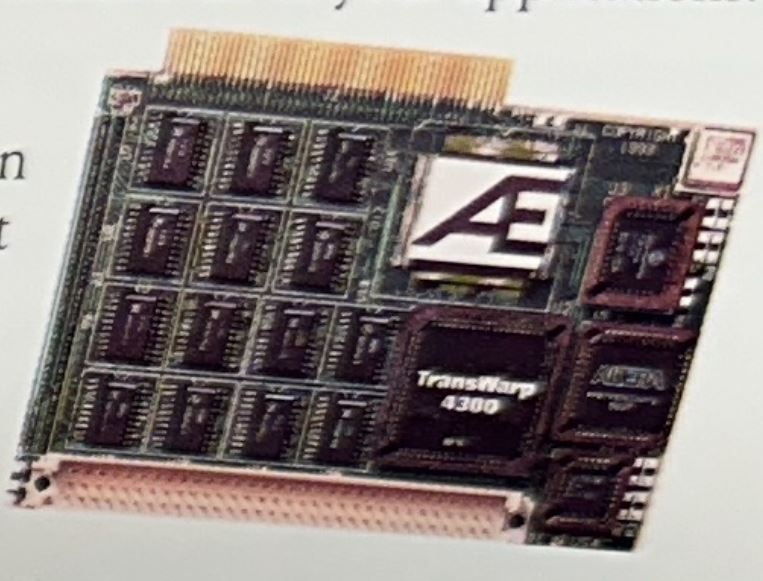
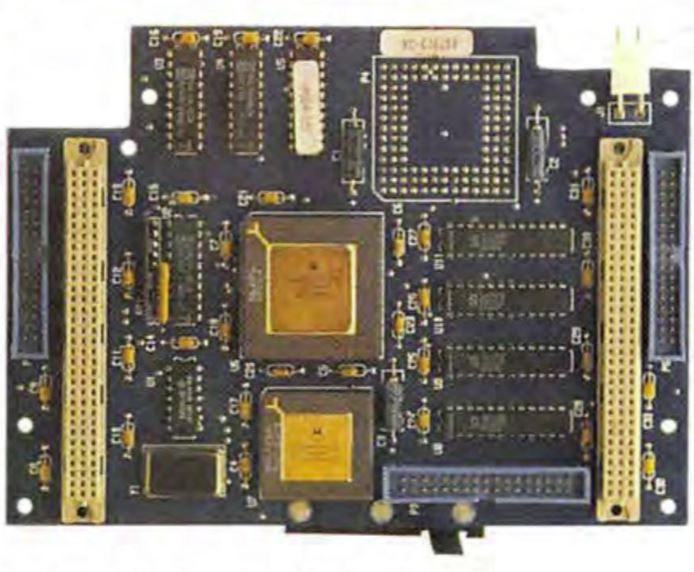
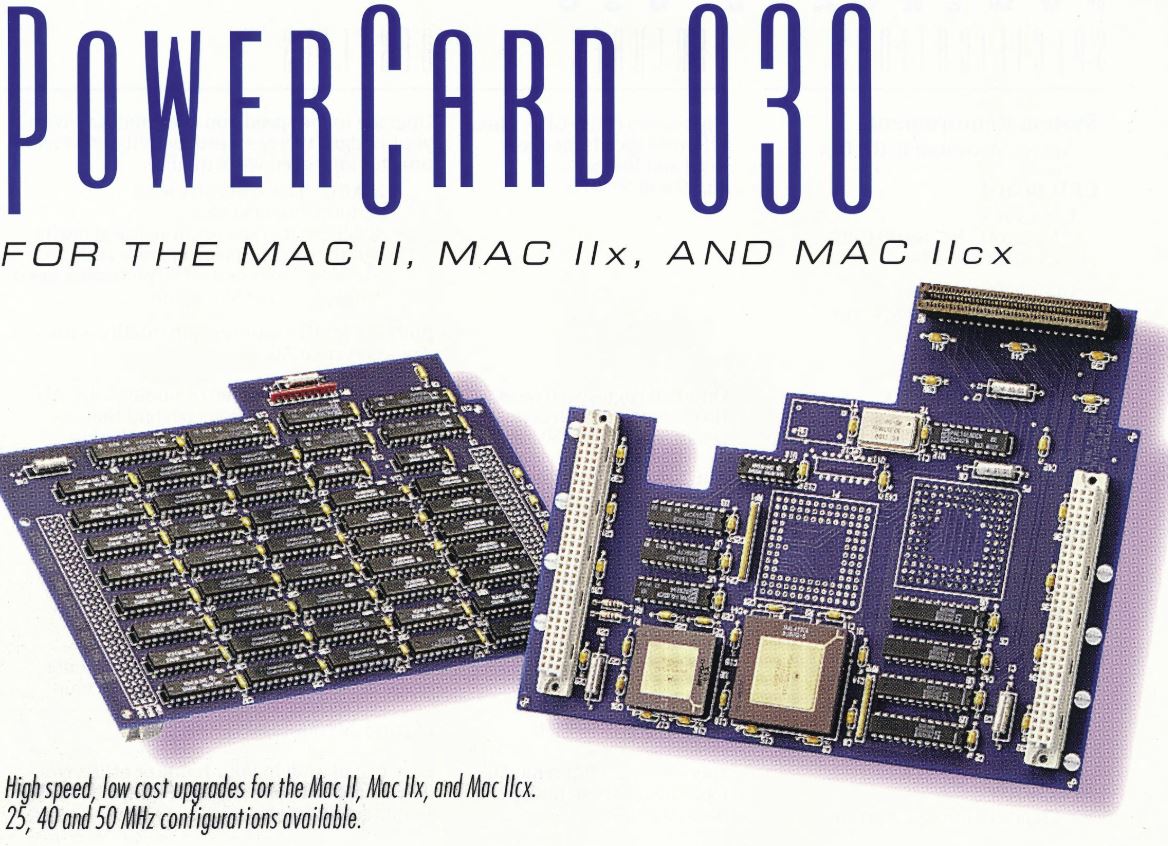
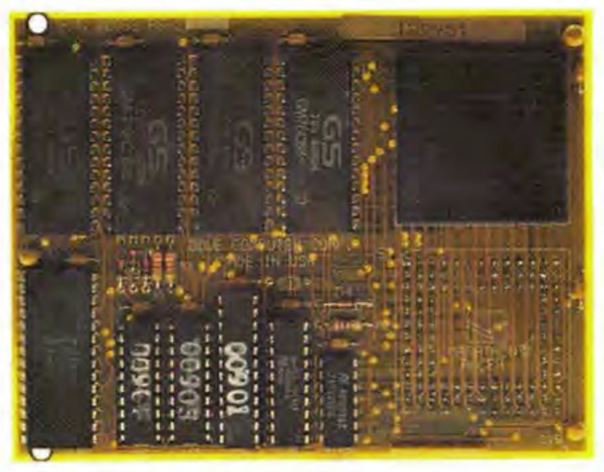
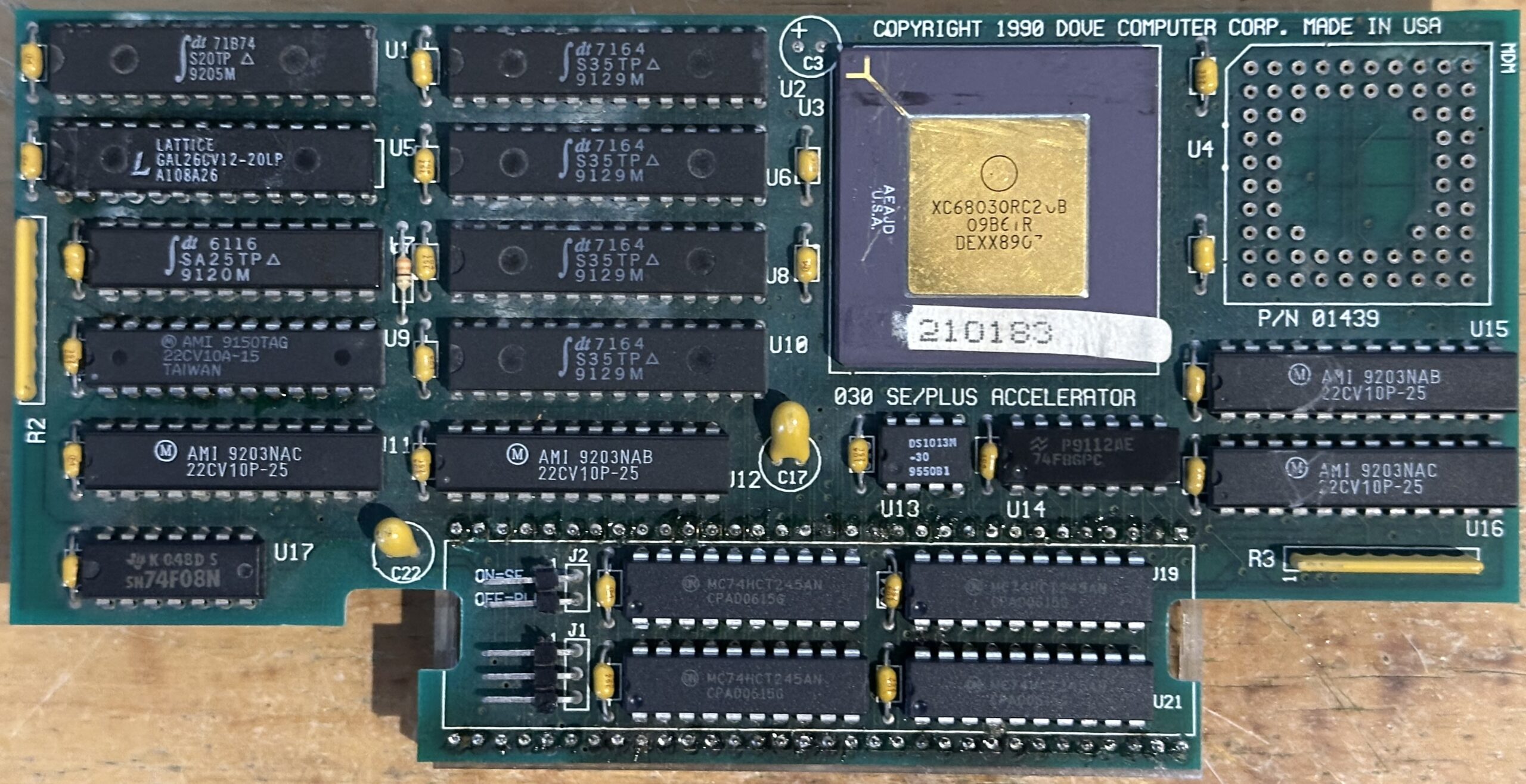
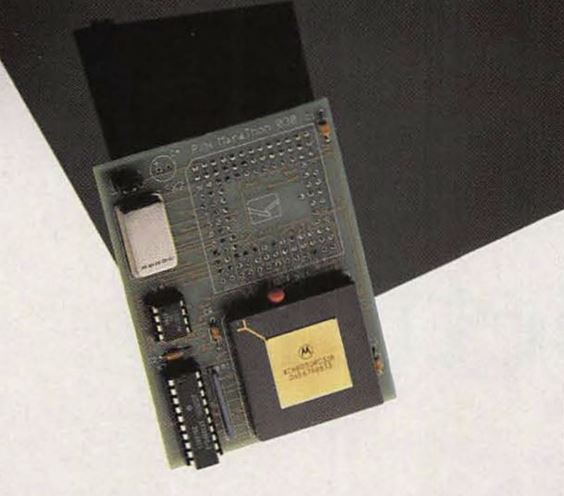
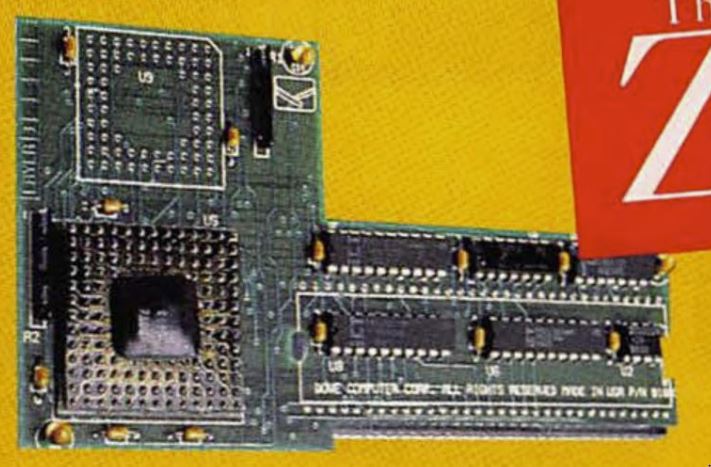
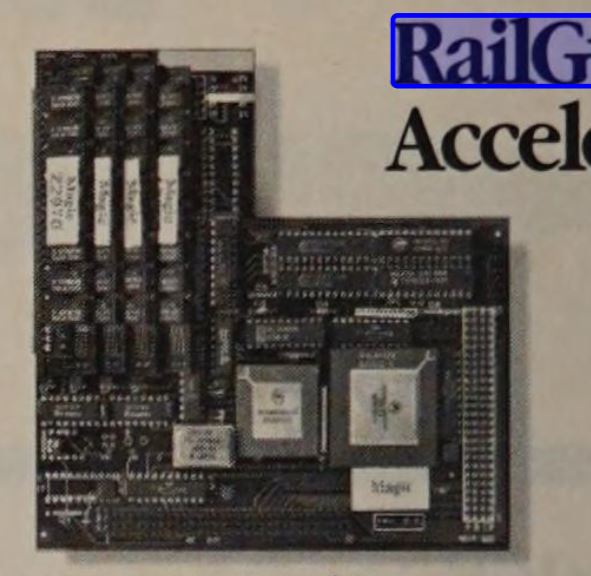
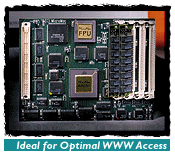
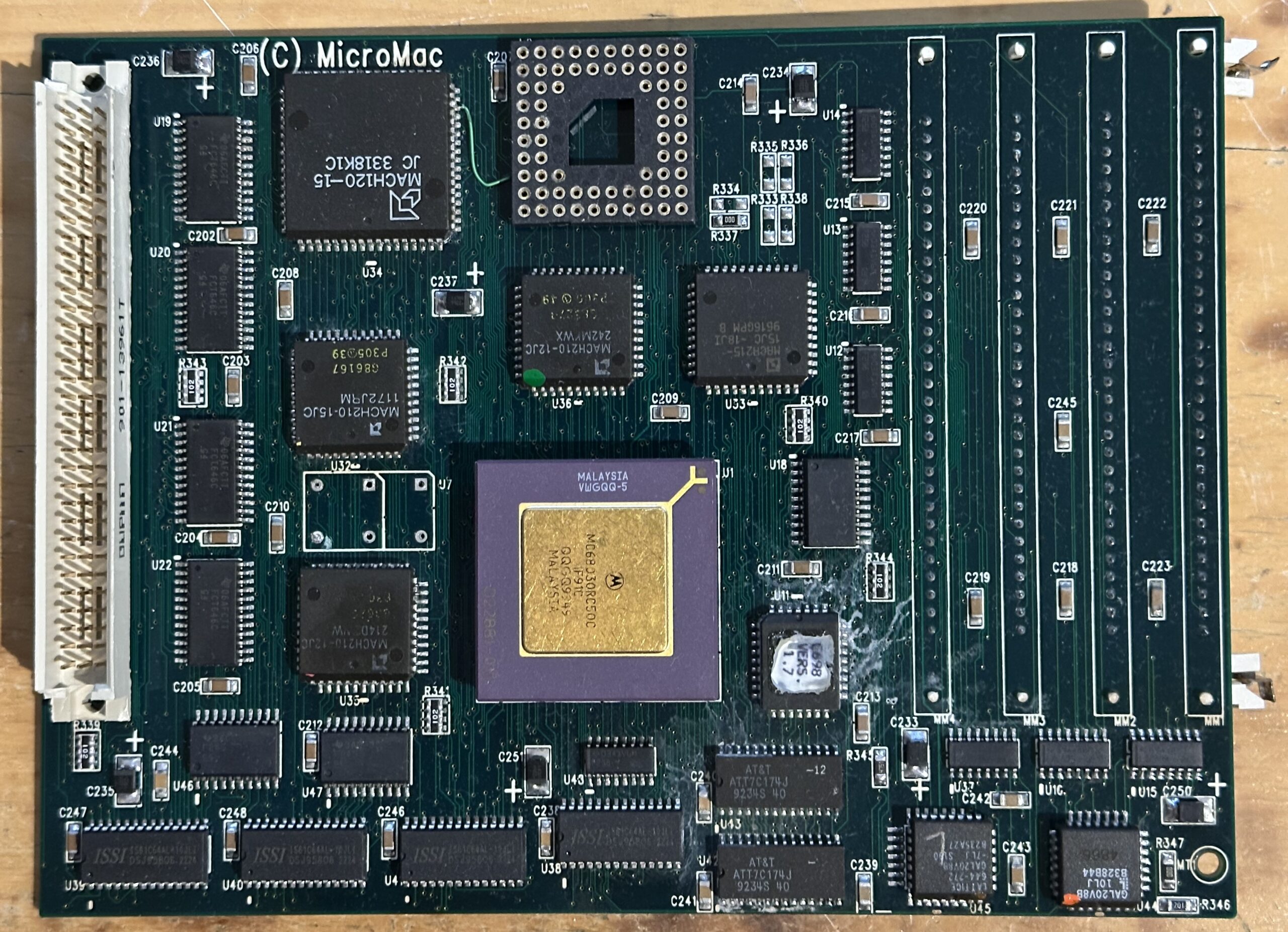
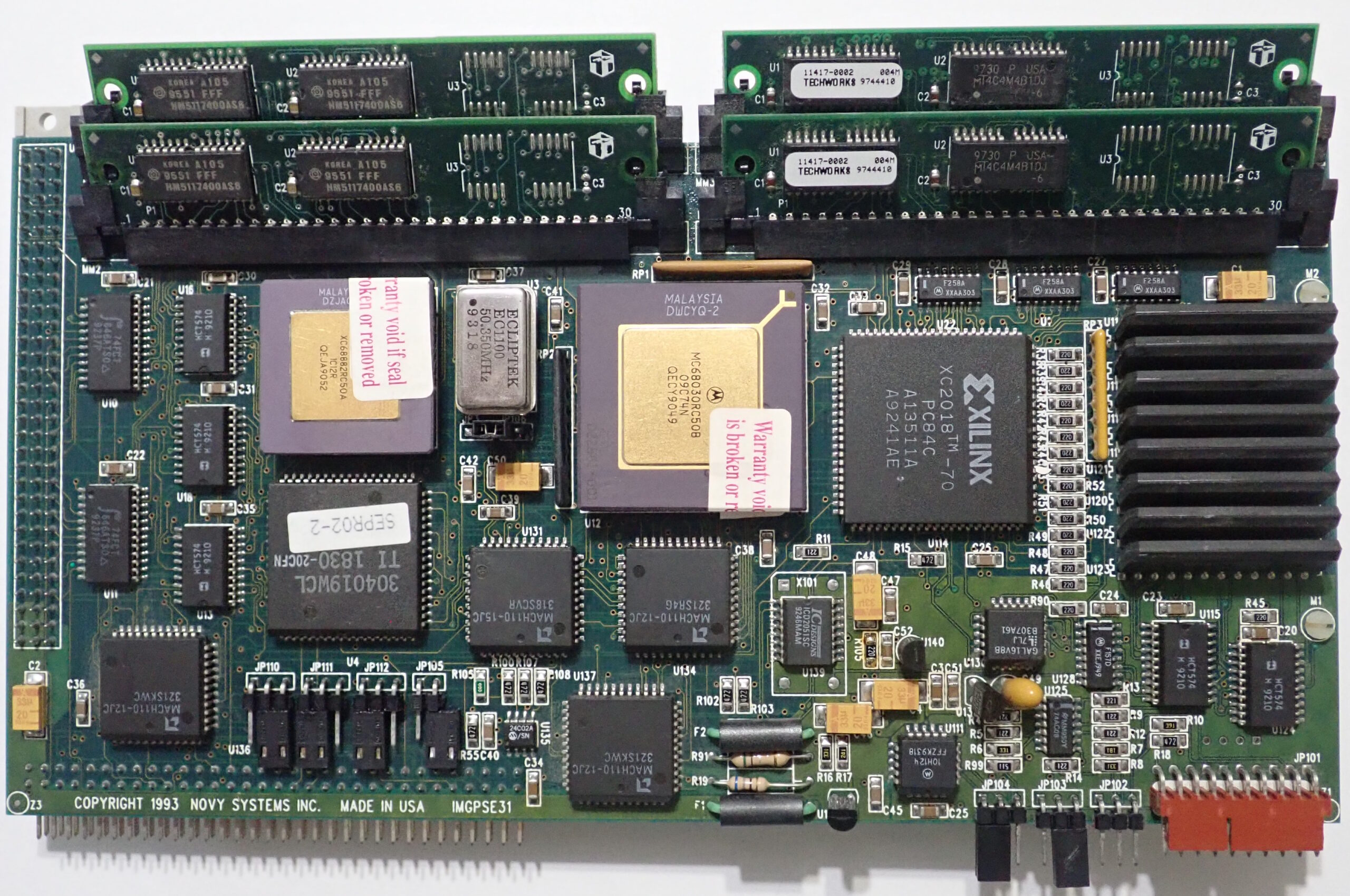
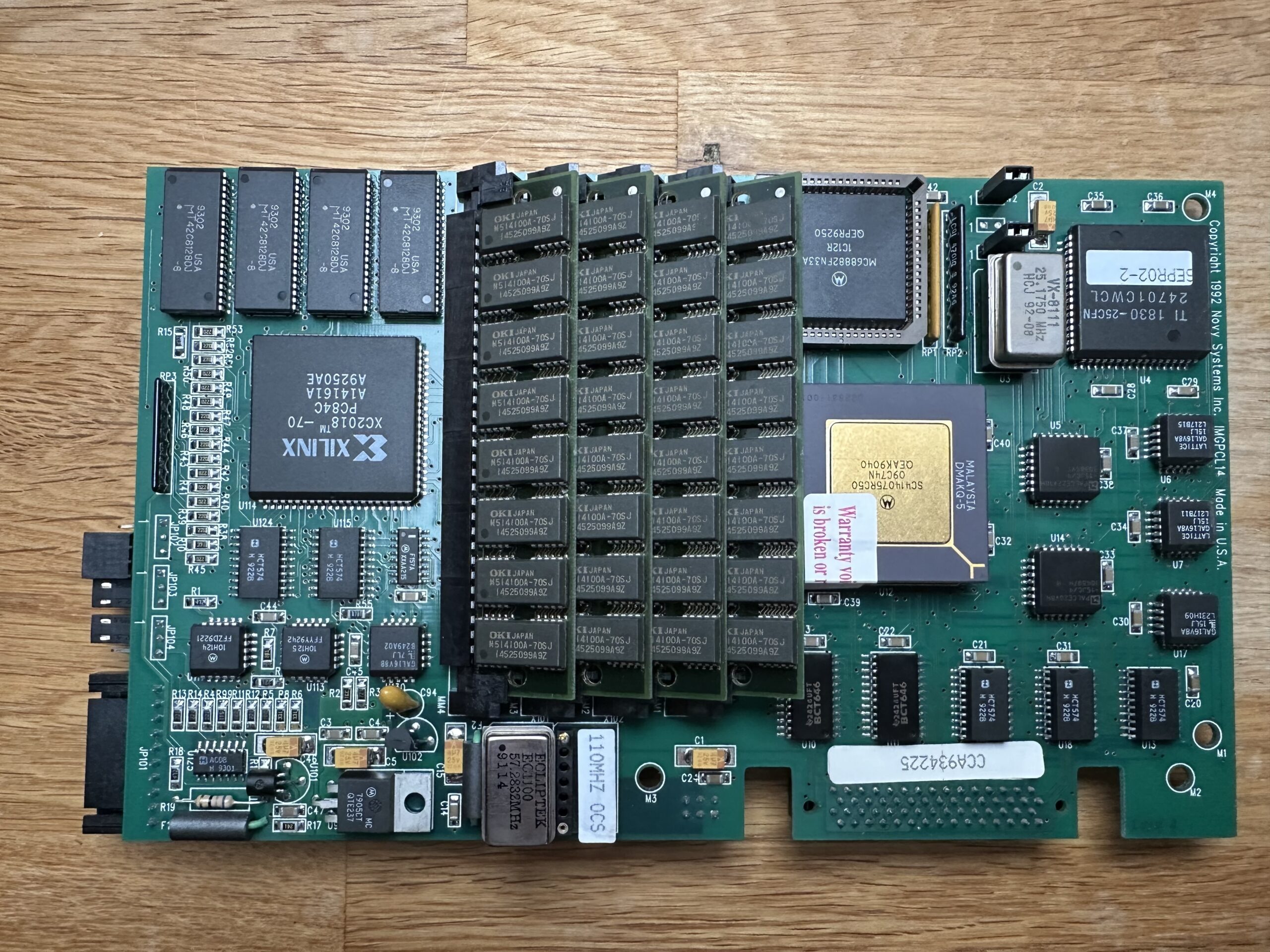
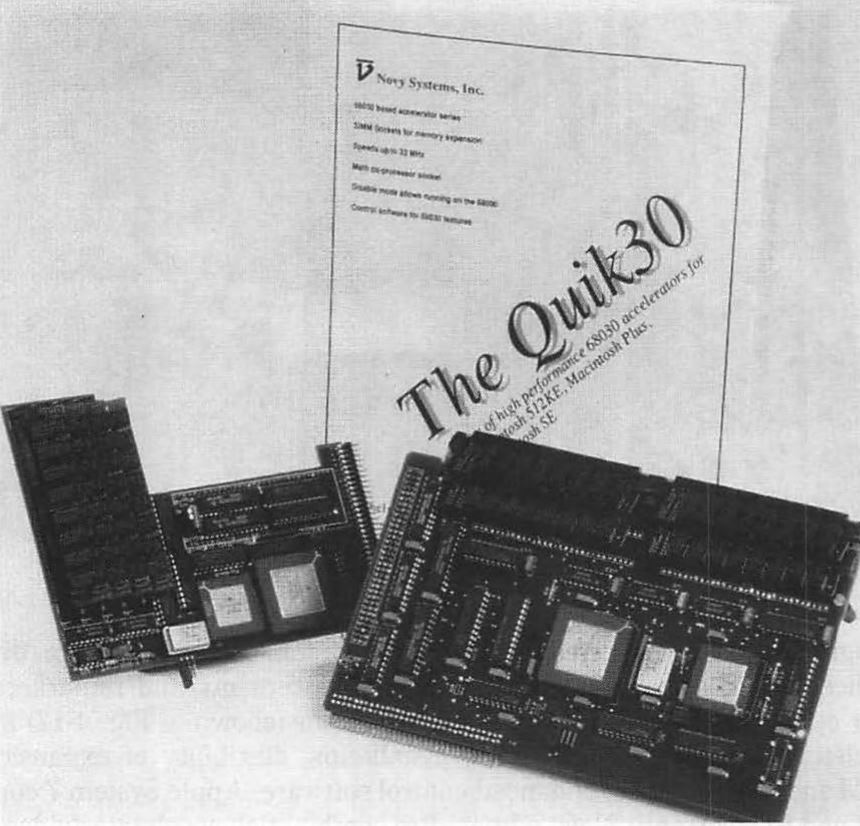
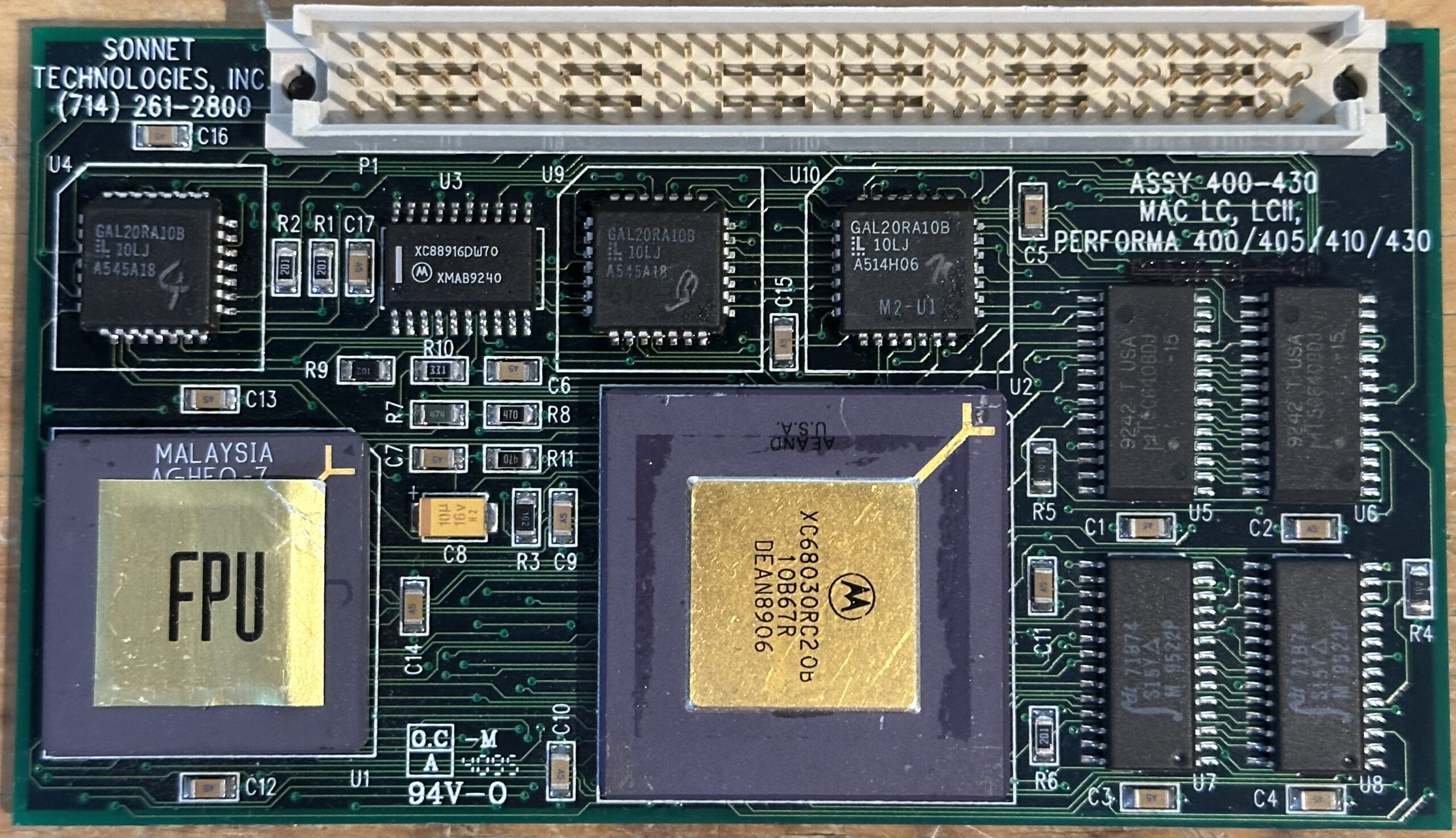
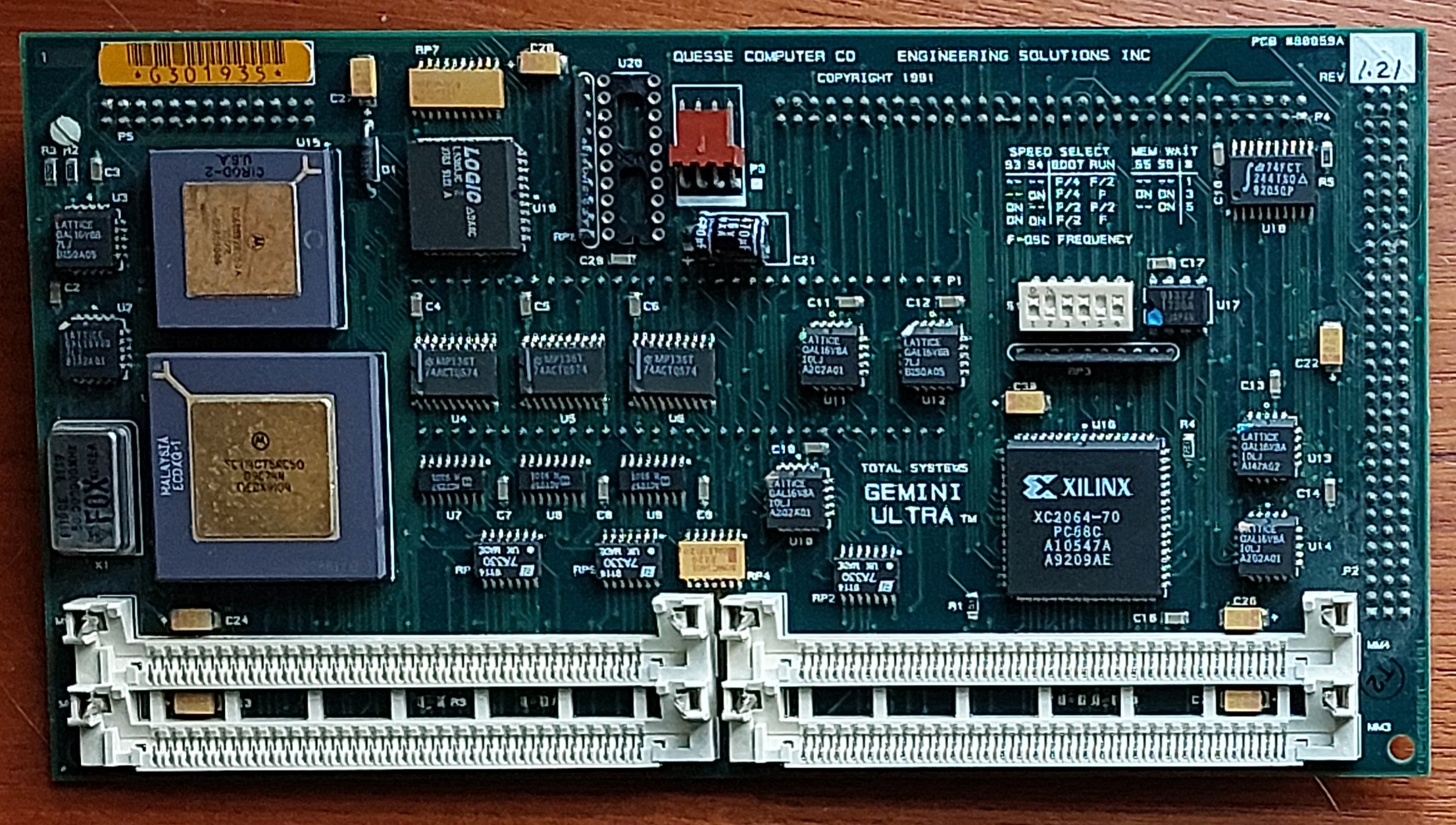
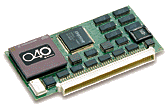
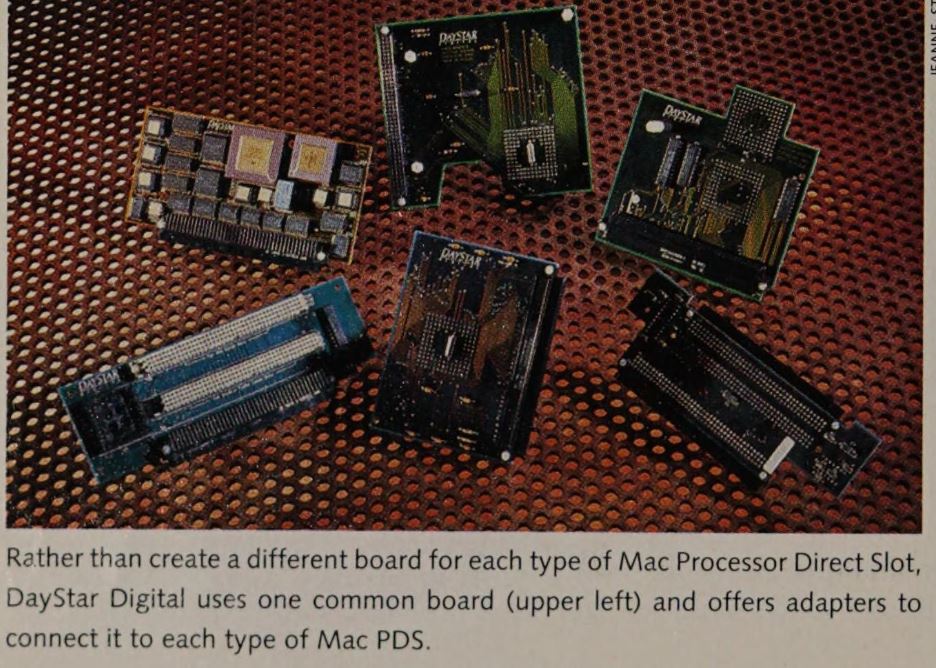
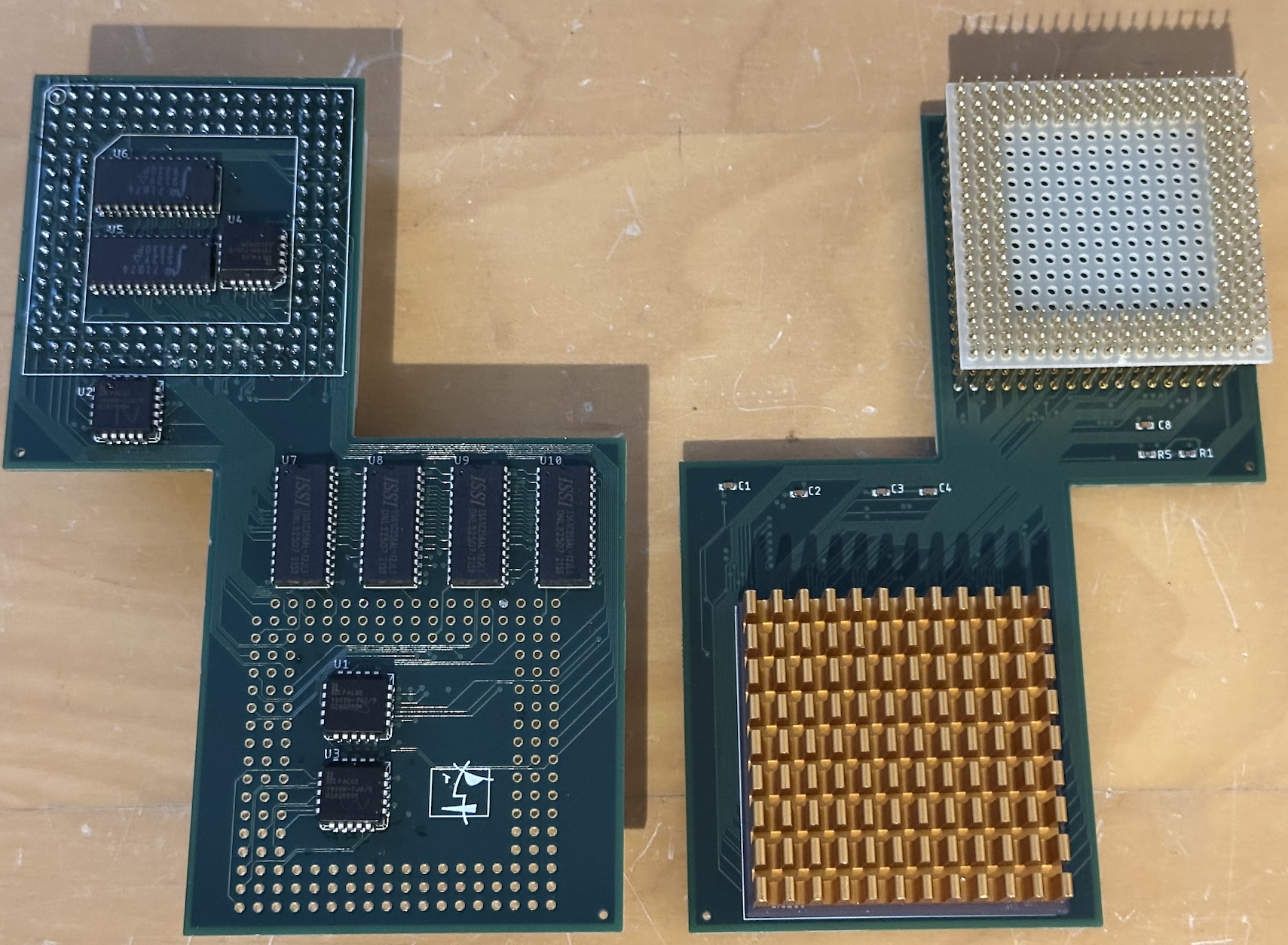
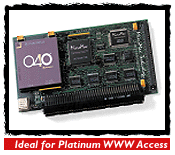
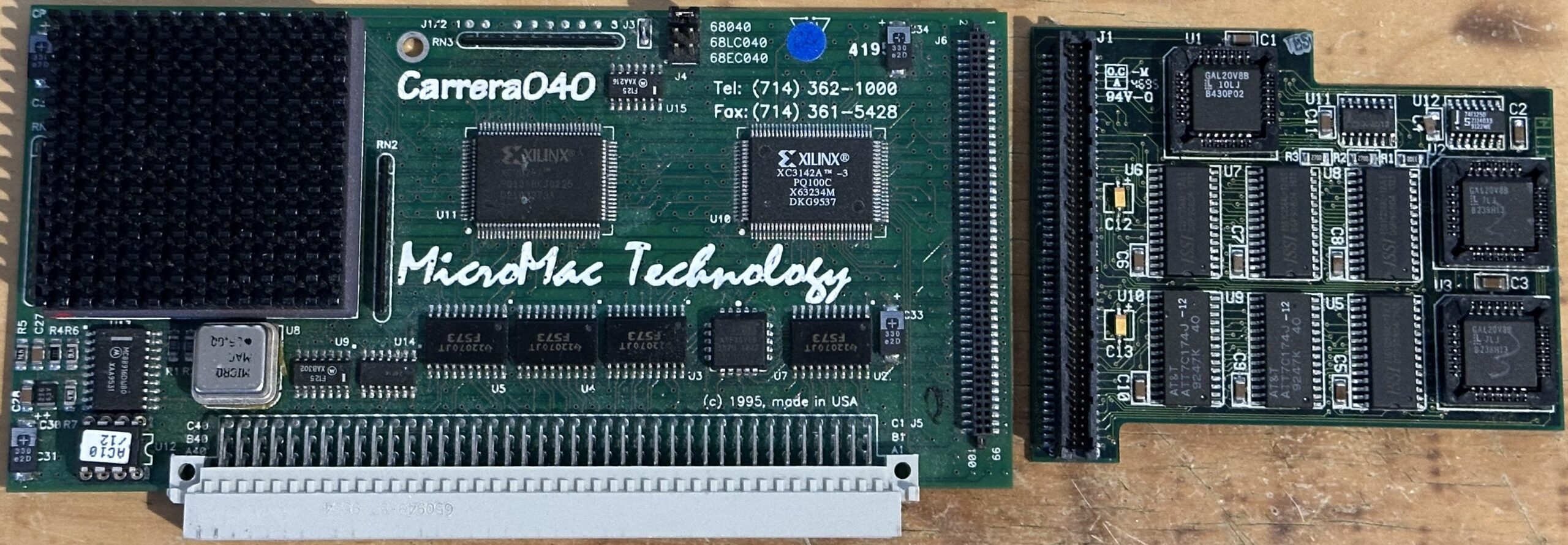
Please add the Levco SuperMac SpeedCard to your list.
Year: 1988
Supports: SE
CPU: 16MHz 68000
FPU: Opt
Memory: —
Comments: PDS Slot
Source #1: https://bit.ly/3ShYPeu
Source #2: https://youtu.be/jxFu6Ye8_To?t=3043
Added, I put it under SuperMac. SuperMac bought Levco in 1987, and all the reviews I`ve found refer to it as the SuperMac SpeedCard. I’m still adding to this list as I have time. There seems to be a lot of instances where one company bought another, or licensed from another. E.g. a lot of companies seem to have licensed tech from Novy, or simply re-branded a Novy accelerator as their own. E.g. Daystar selling the Novy Mac20Mx.
Share driver for the Mobius 30?
I’m using the 4.99 Mobius driver, and Compact Virtual 3.02. I plan to post an entry on my site soon for how I have this all setup on my SE sometime this winter (way to many outdoor chores at the moment). Note: You can only use up to System 7.1.3 with Compact Virtual 3.02. System 7.5.x is NOT supported. Lack of support for System 7.5.x was an issue for pretty much all of these old accelerators. That said, you can use the Mobius accelerator on the SE under 7.5.5, you will get the CPU bump (or at least I did), but will not have access to the extra memory. I need to do some more tests to see what memory is being used, the 4MB on the MB, or the first 4MB on the accelerator.
It is Harris Performer2, Peformer2. Do you have more information on this piece of hardware, I can’t find anything on the internet ? Your description says “extended video” but was it in color? accelerated? did it used vram? Also, you mention it has a fpu, was it the 68881 ot 68882? was it memory mapped? Even an scanned review would be nice.
Thanks in advance
Hi Rick, I was able to find a review and an advertisement. The advertisement mentions the video out port. I have also sent a message to Michael Harris (the company founder) through linkedin to see if he has any documentation or disks from those days. Will post more as I find it.
It would be nice if documentation or drivers could be preserved for posterity. Thanks again.
Hi!
I still have a MacPlus with a Brainstorm I installed back in the day!
It boots, but needs a new analog card as the screen shimmies.
Hi, I’m trying to identify this LCII (and possibly other models) accelerator I have:
https://imgur.com/a/YvWANva
The only possible identifying mark I can find on it is the white sticker on the front that I think reads “STI50112”. When installed in an LCII, it appears that the CPU, FPU, and onboard RAM is recognized without needing to install any driver or extension. I don’t know if there is a driver or anything for it because I don’t know what it is. If I install 16MB of RAM on the accelerator, it’s all recognized and any RAM on the LCII’s logic board is ignored. Tattletech can’t read the CPU frequency (shows a really large number). Anyways, I’d really like to identify this accelerator!
Try posting on https://68kmla.org/, one thing I plan to do is redo this page with more photo to help people identify cards with no branding.
Hi – I added the Mobius 030 Accelerator Owner’s Manual to Macintosh Garden (a scan of my own manual from my 1993 purchase while in college).
See https://macintoshgarden.org/apps/accelerator-card-drivers